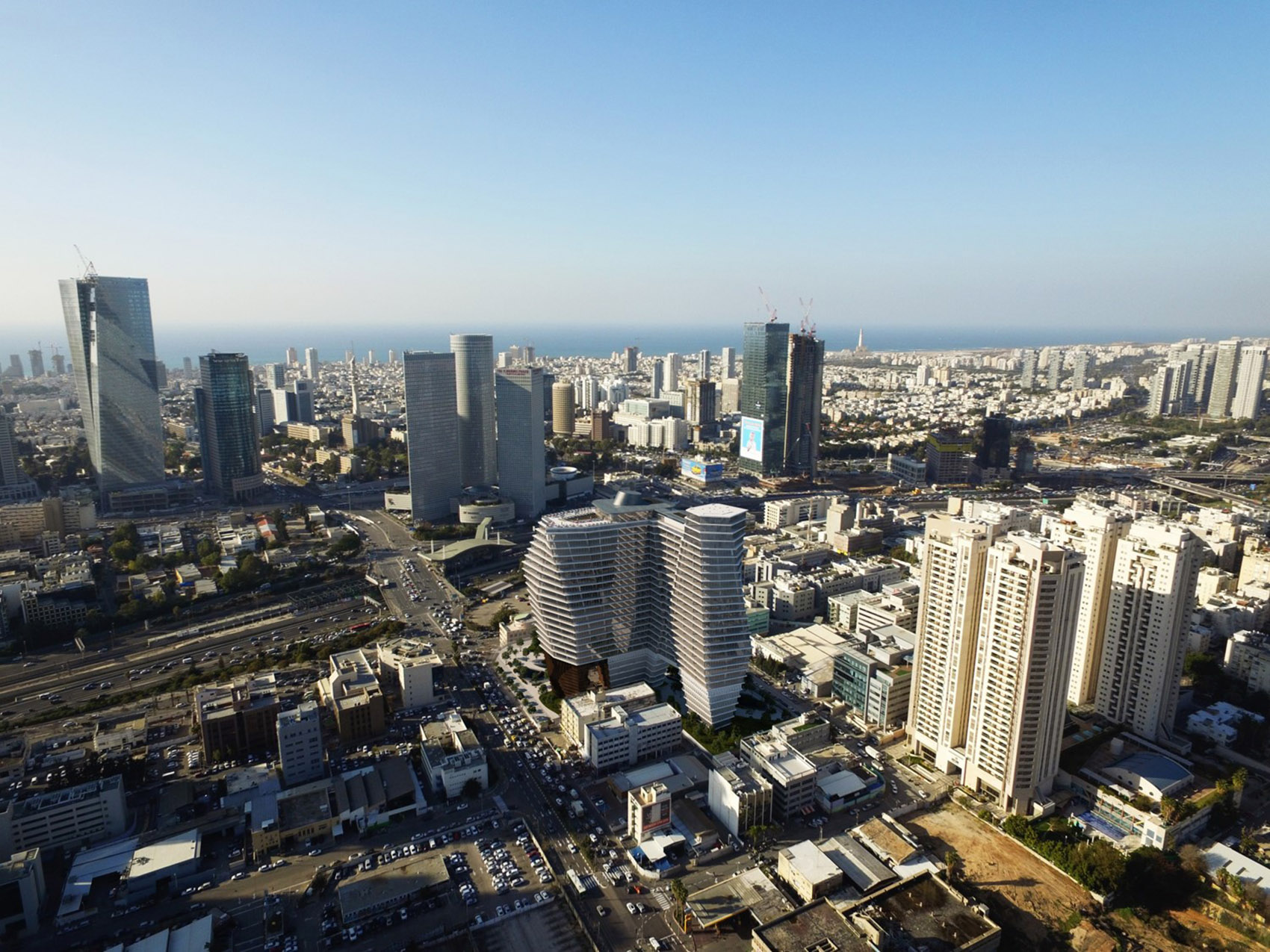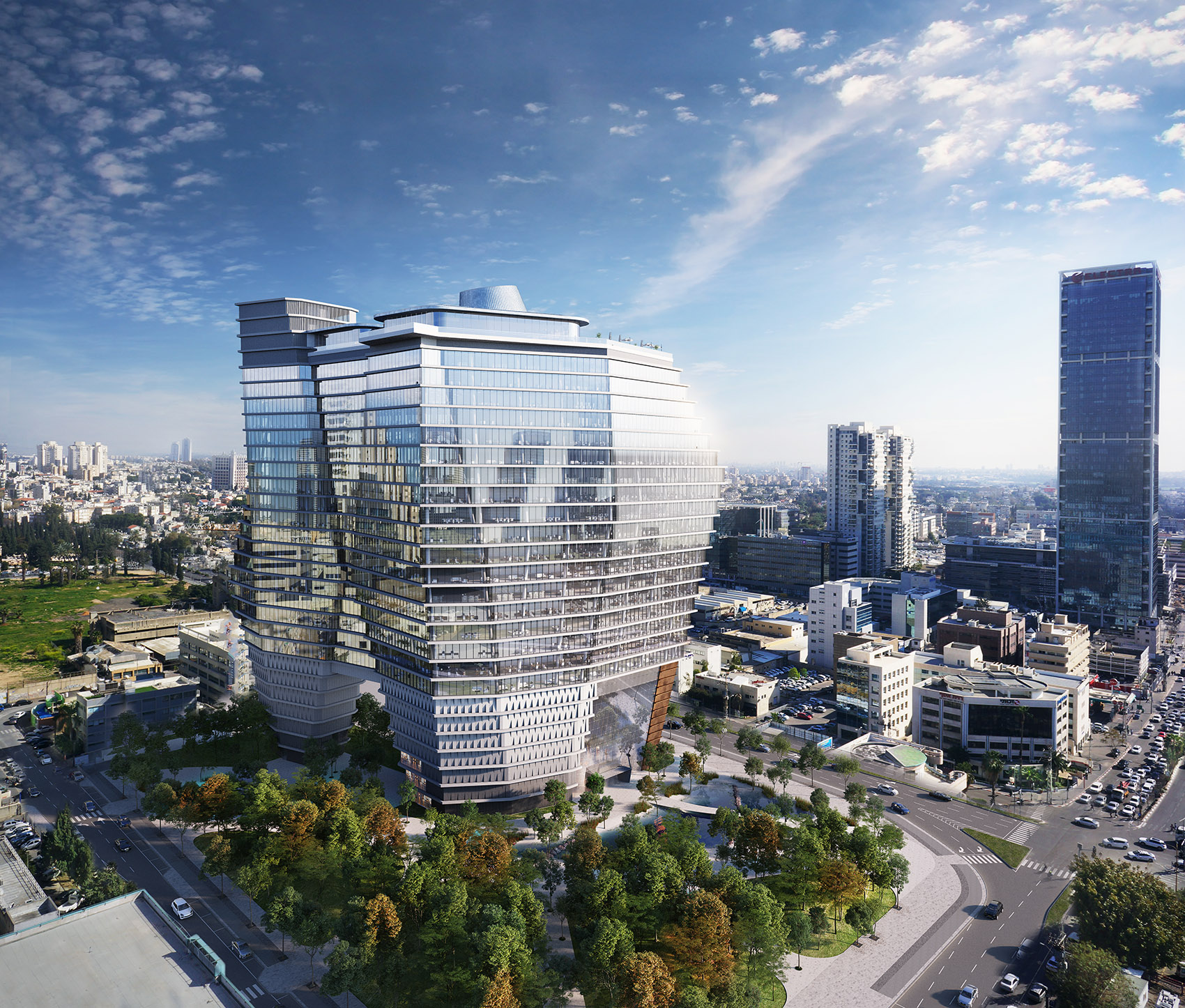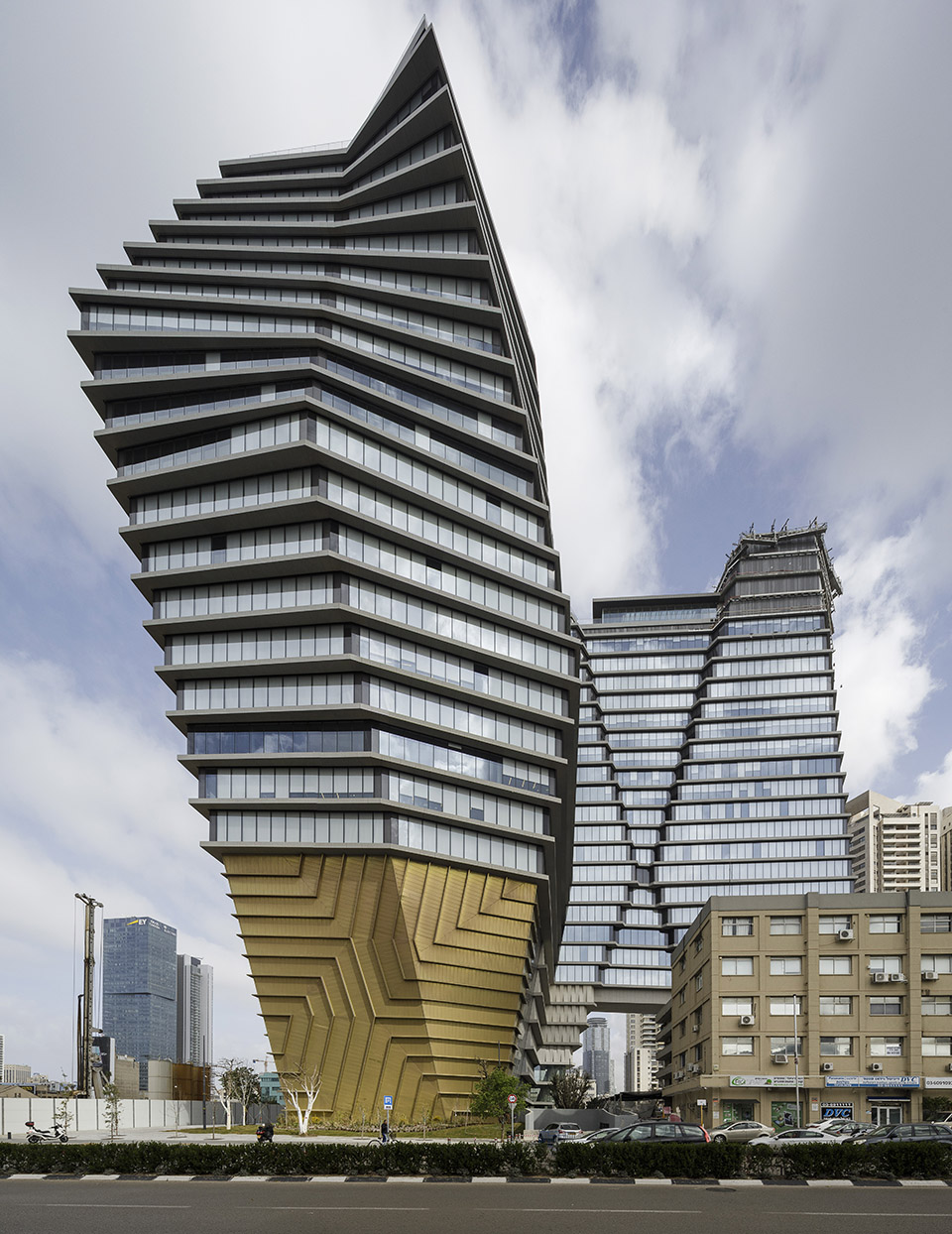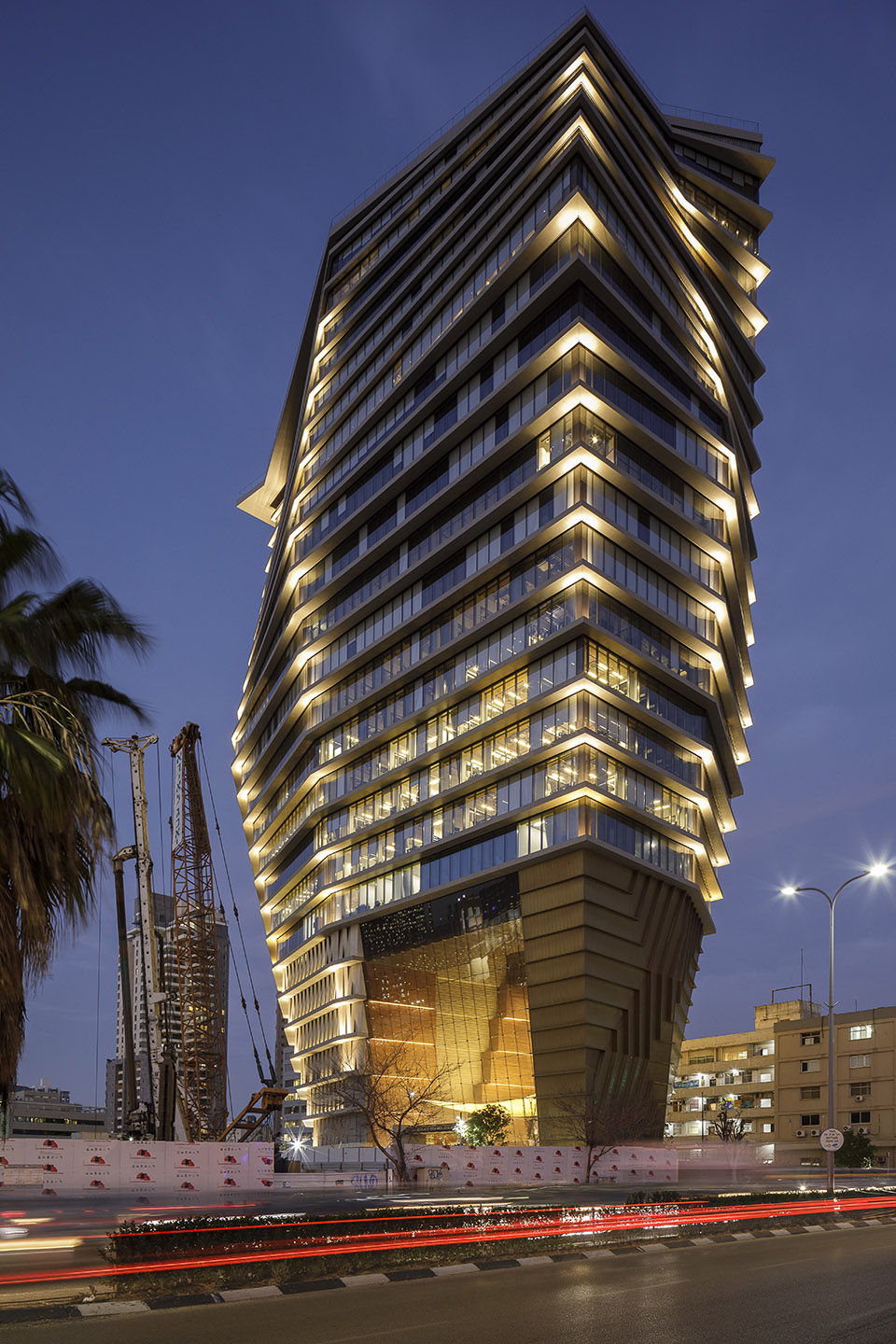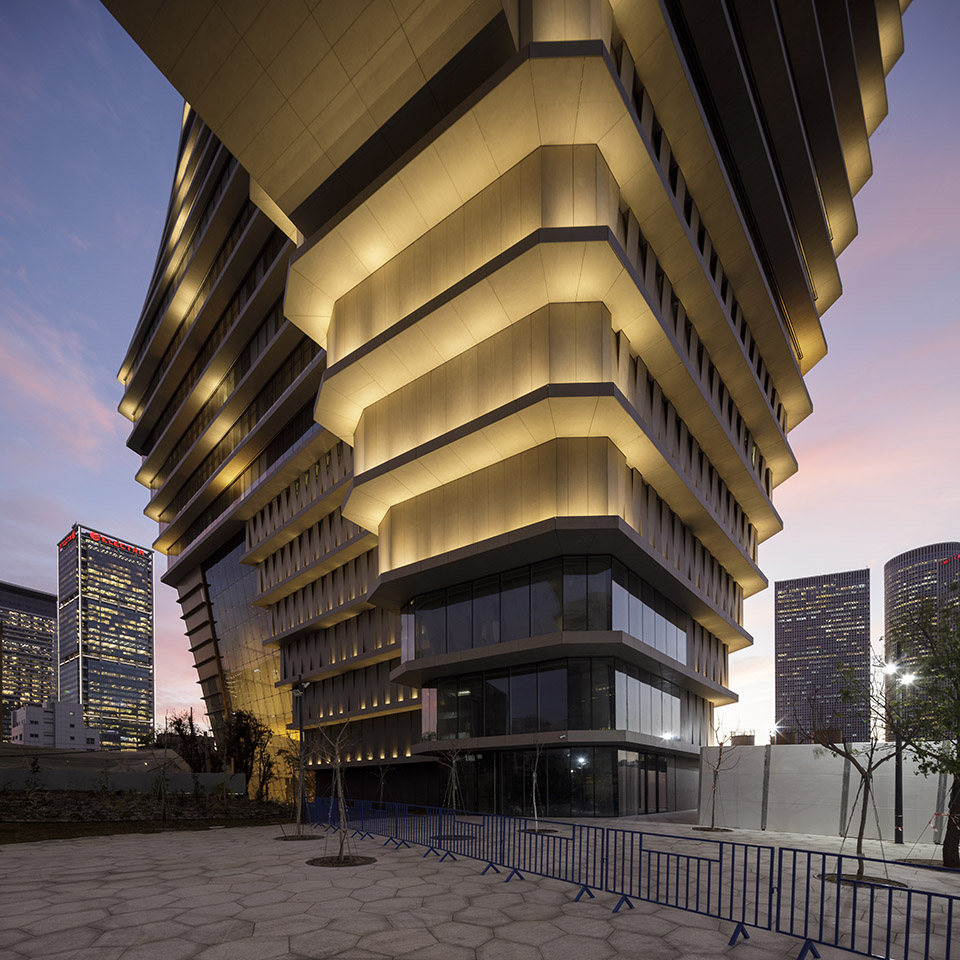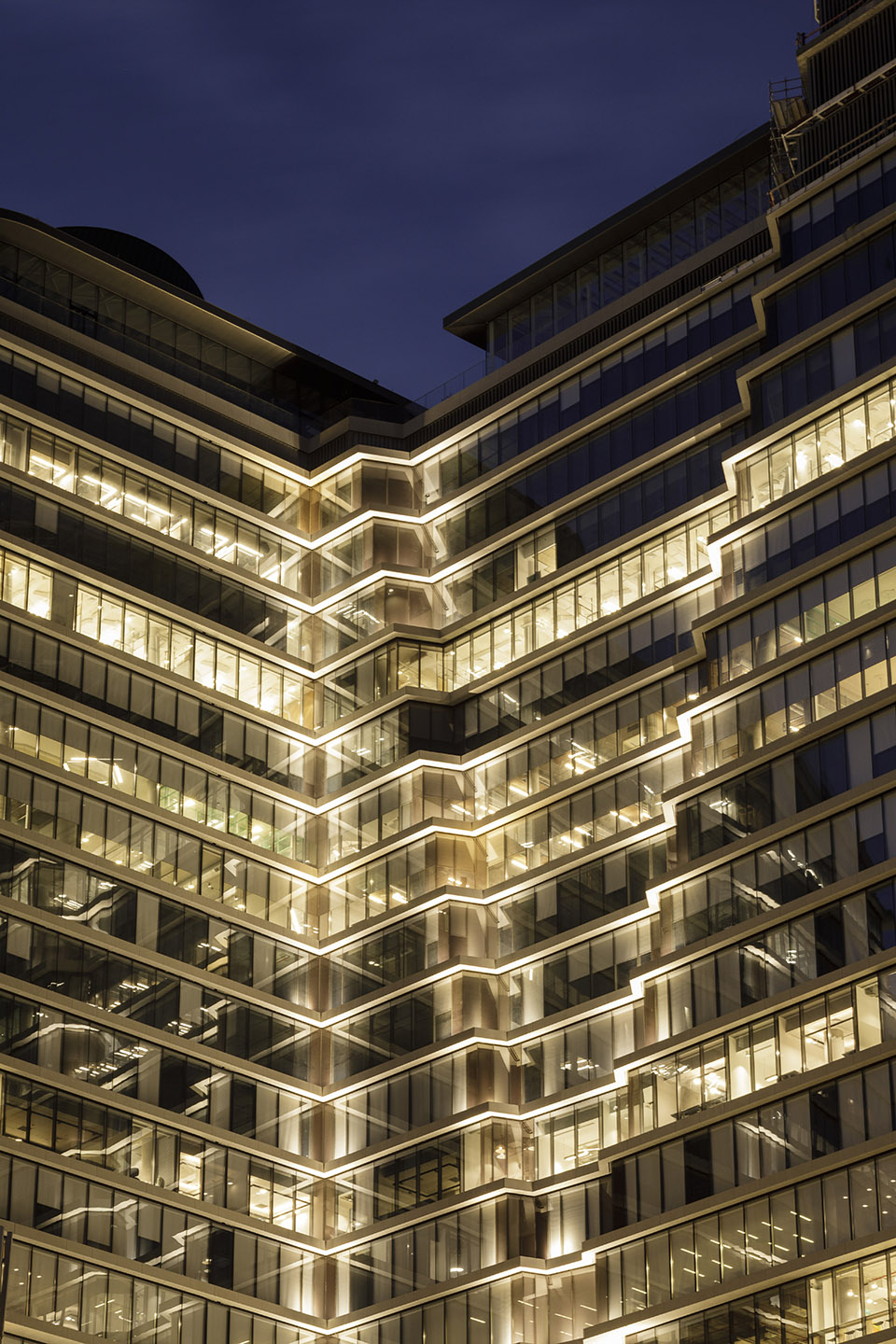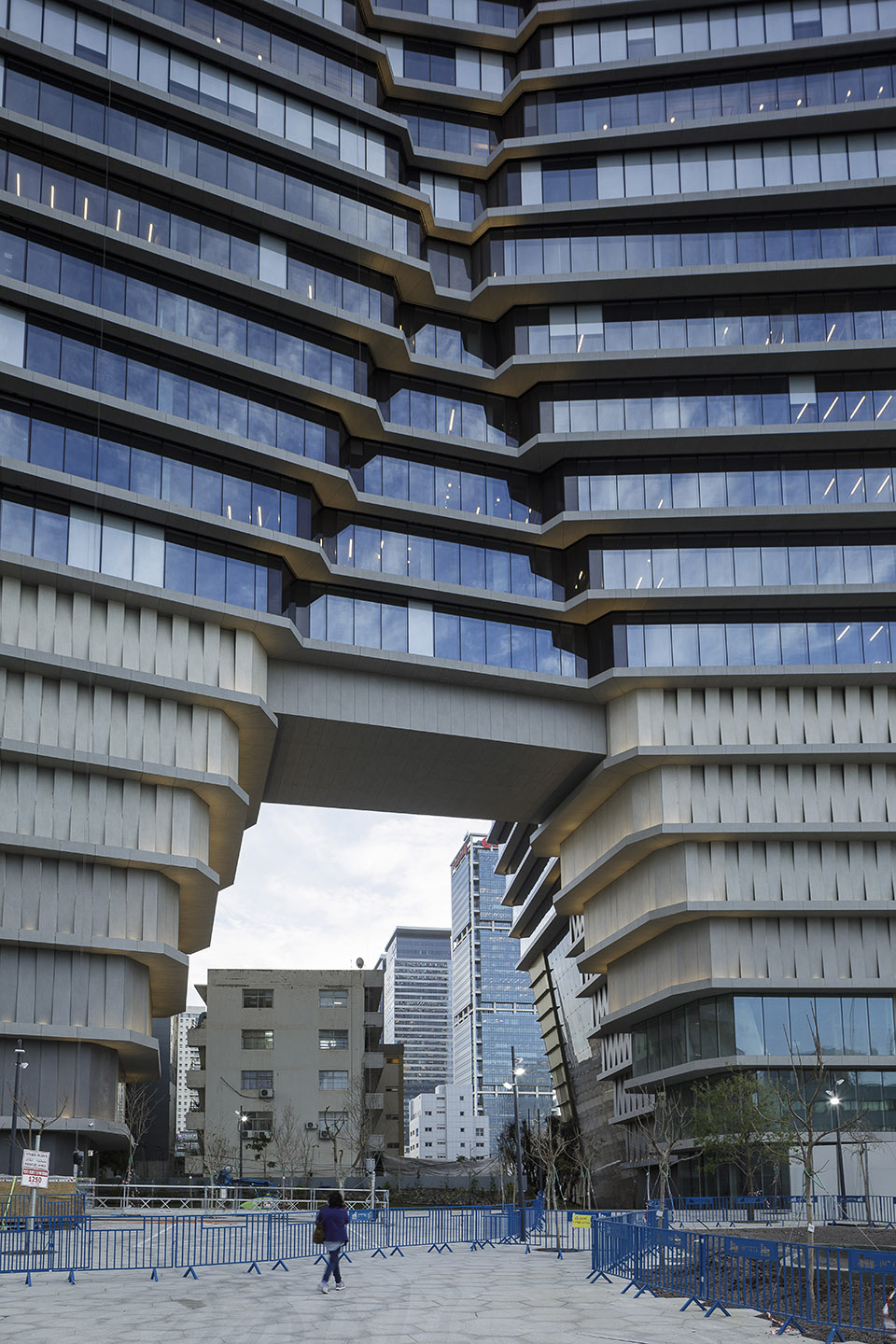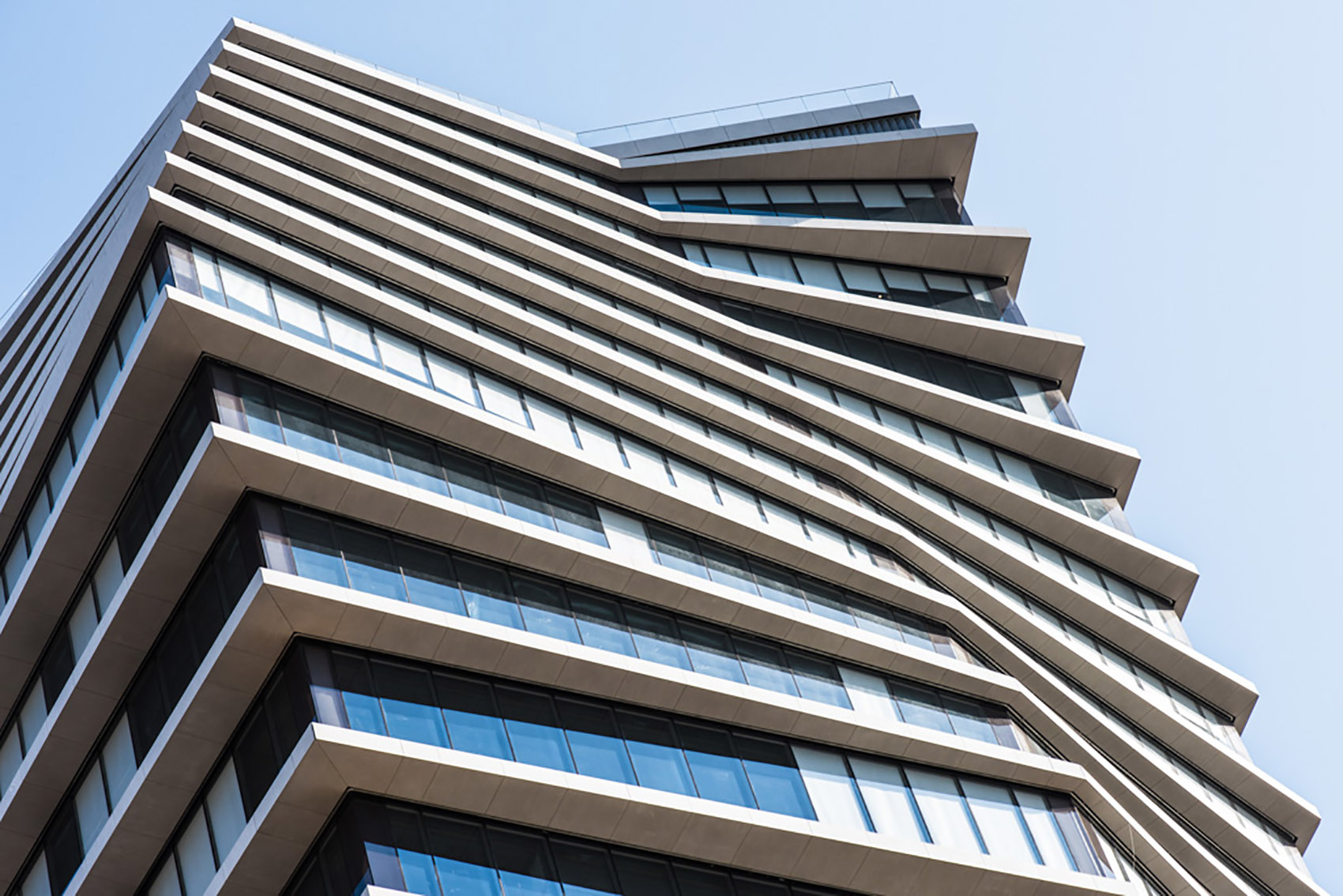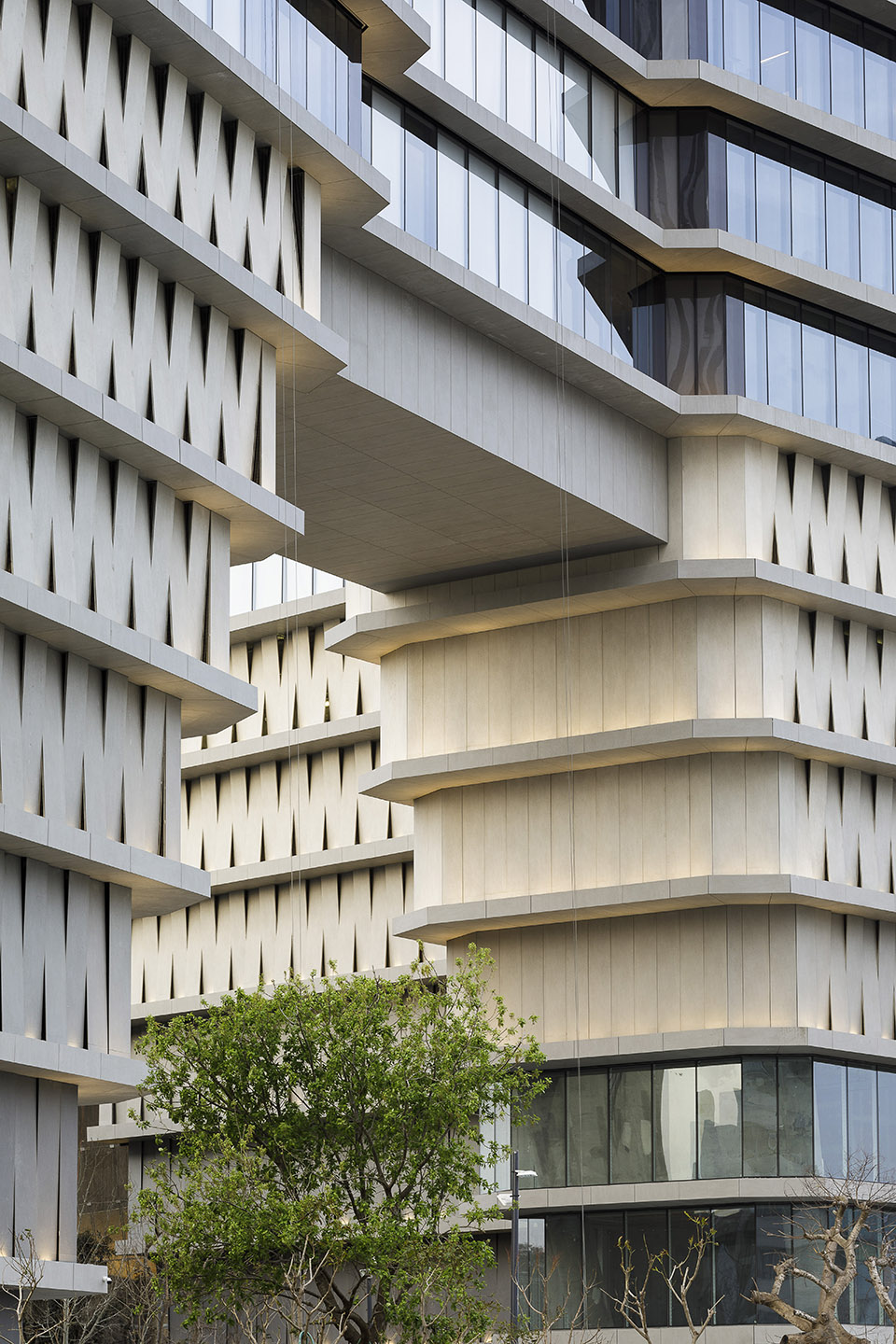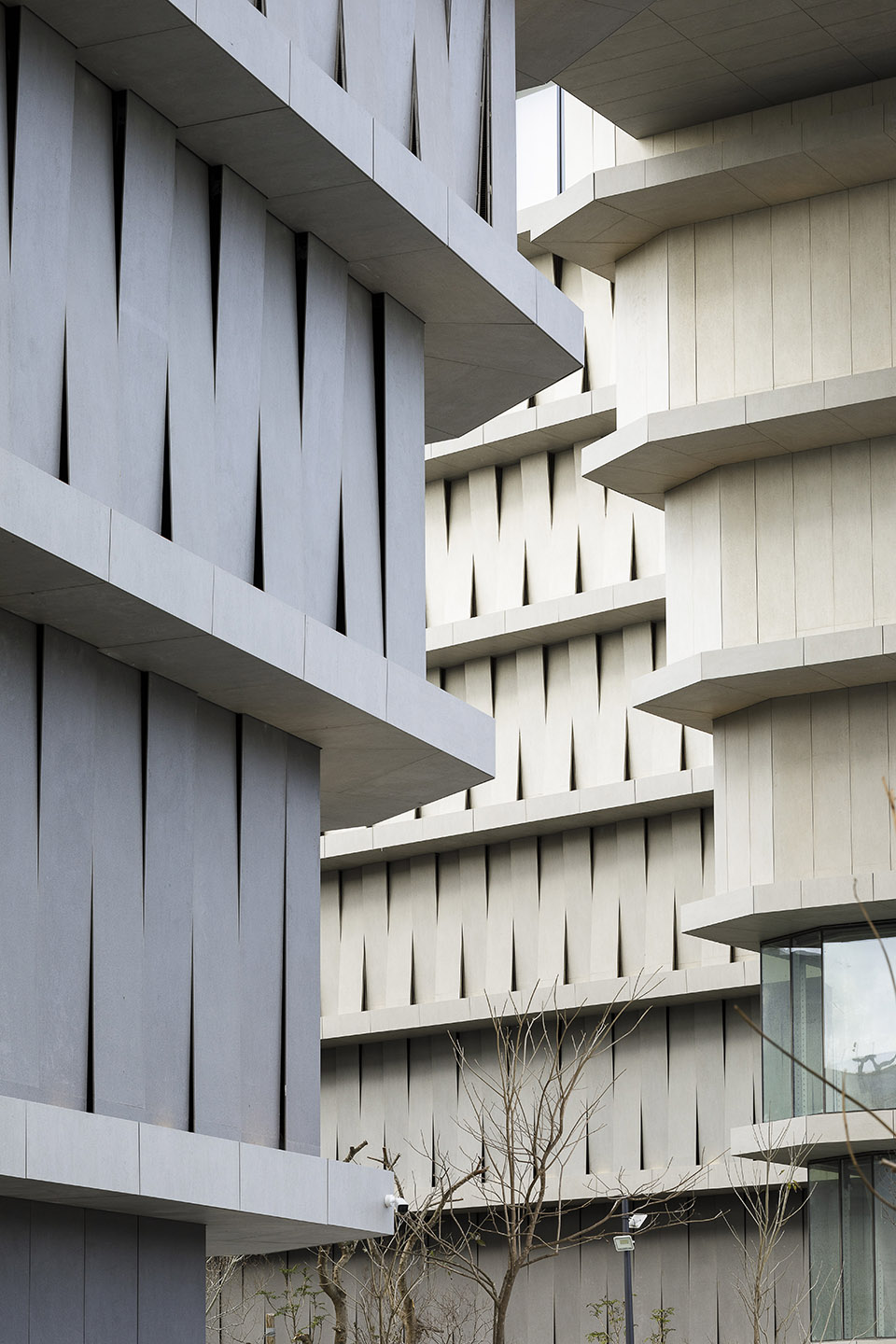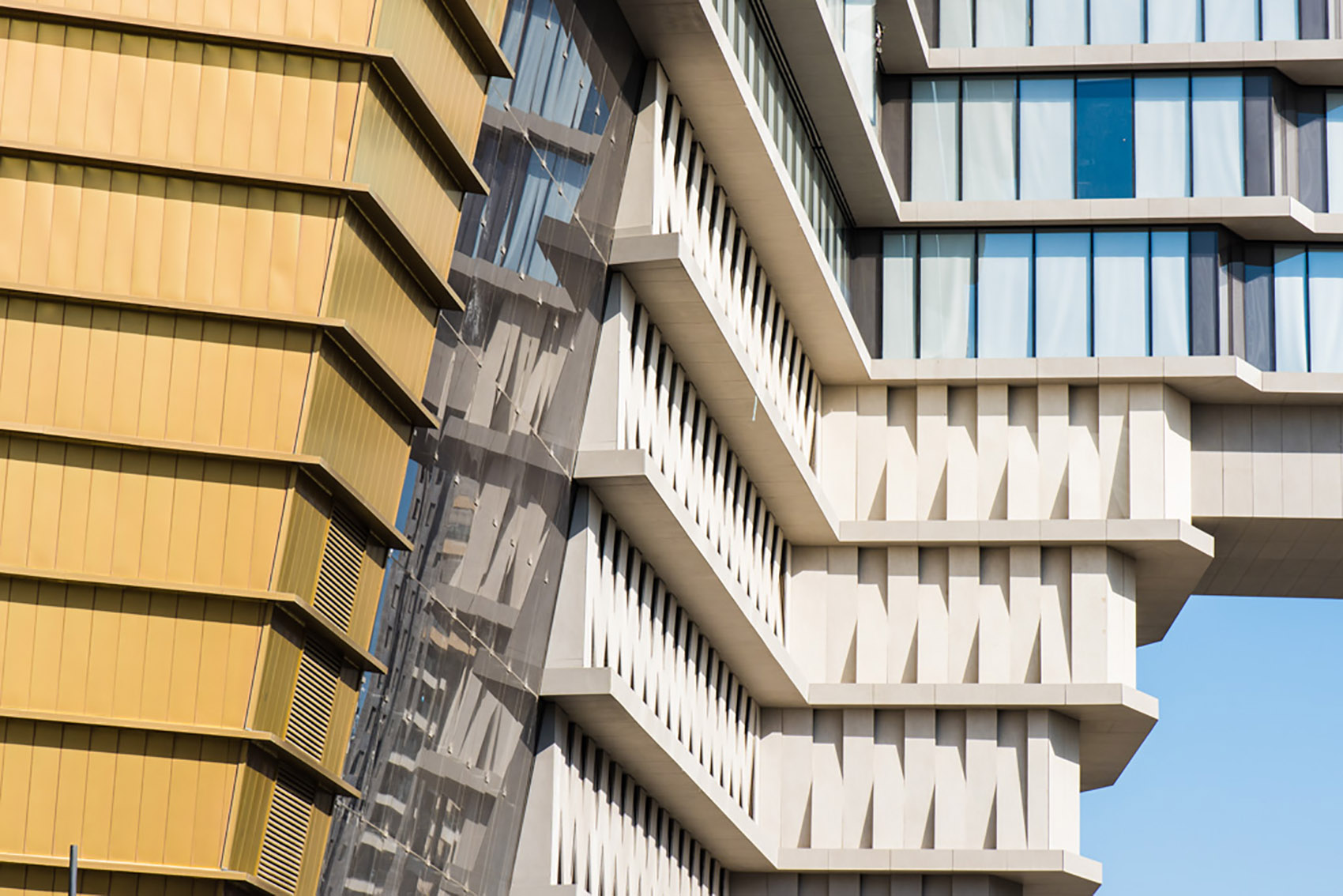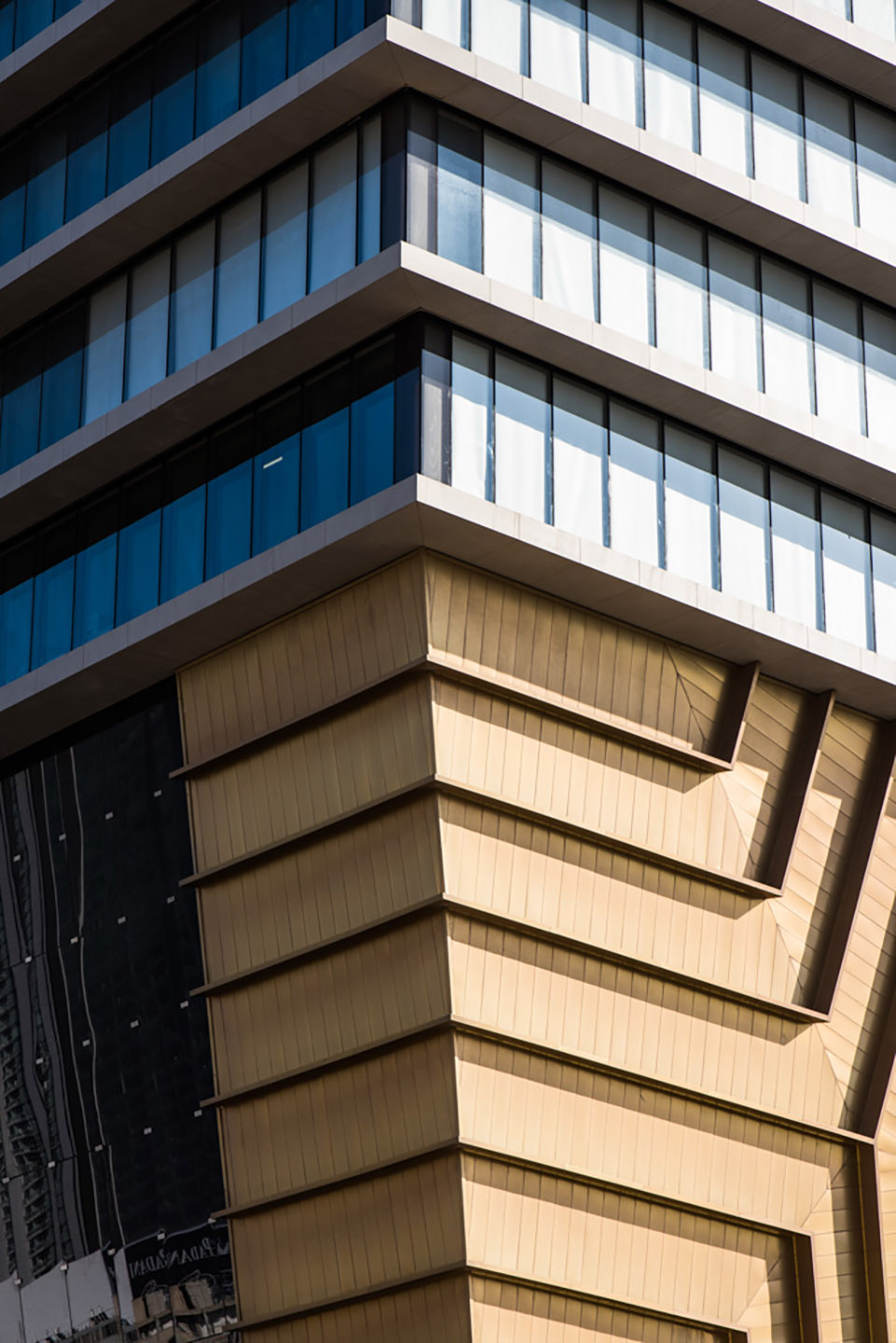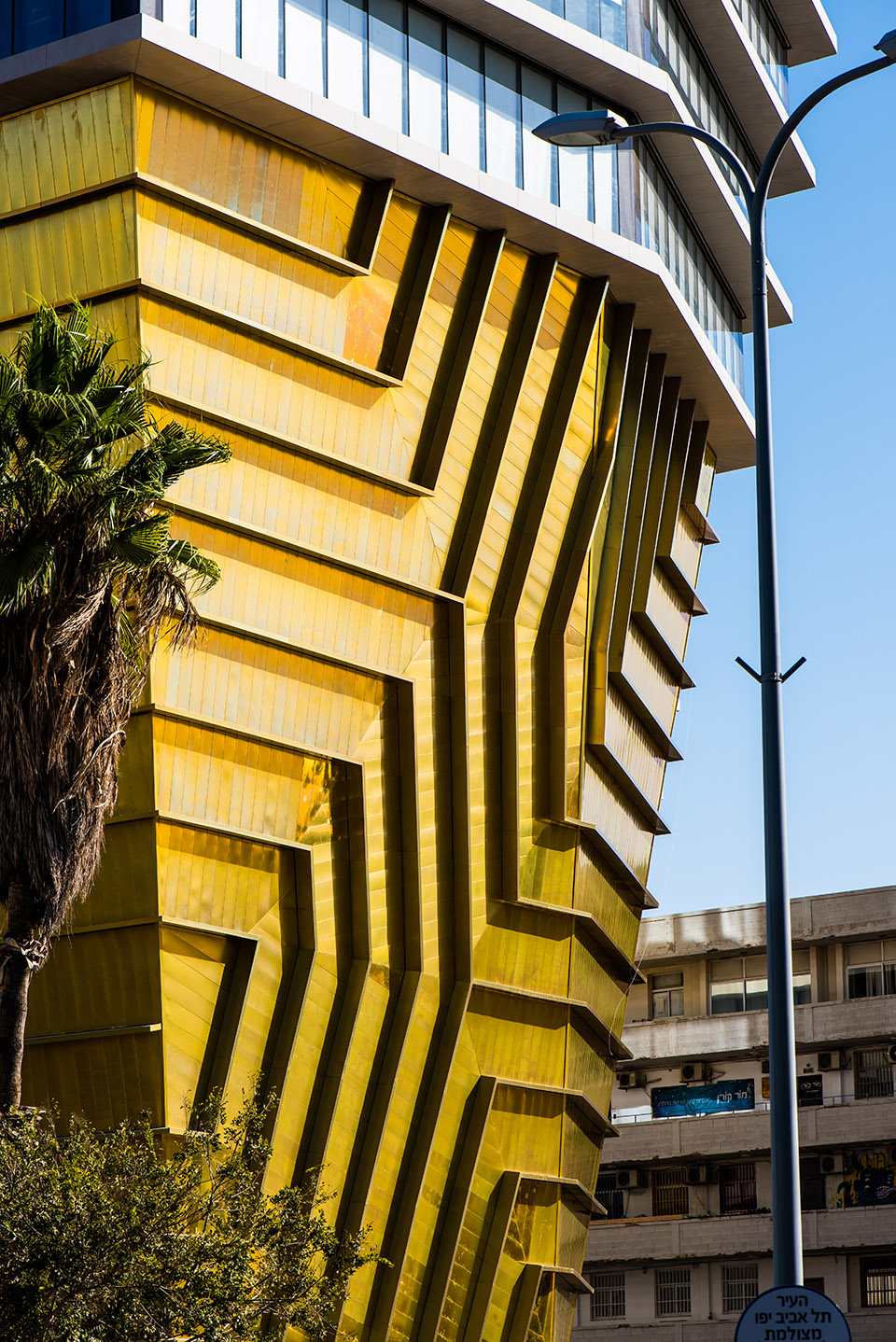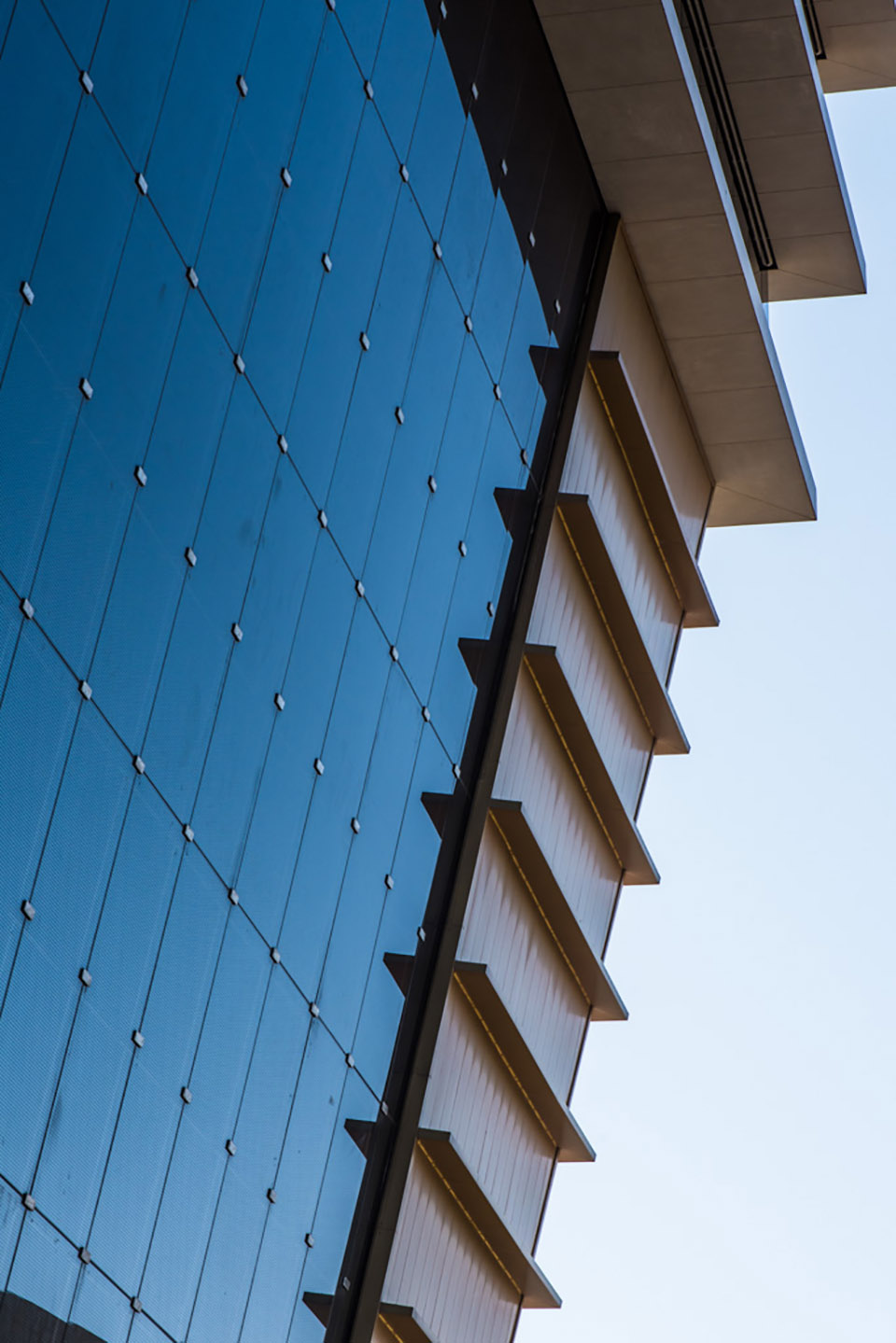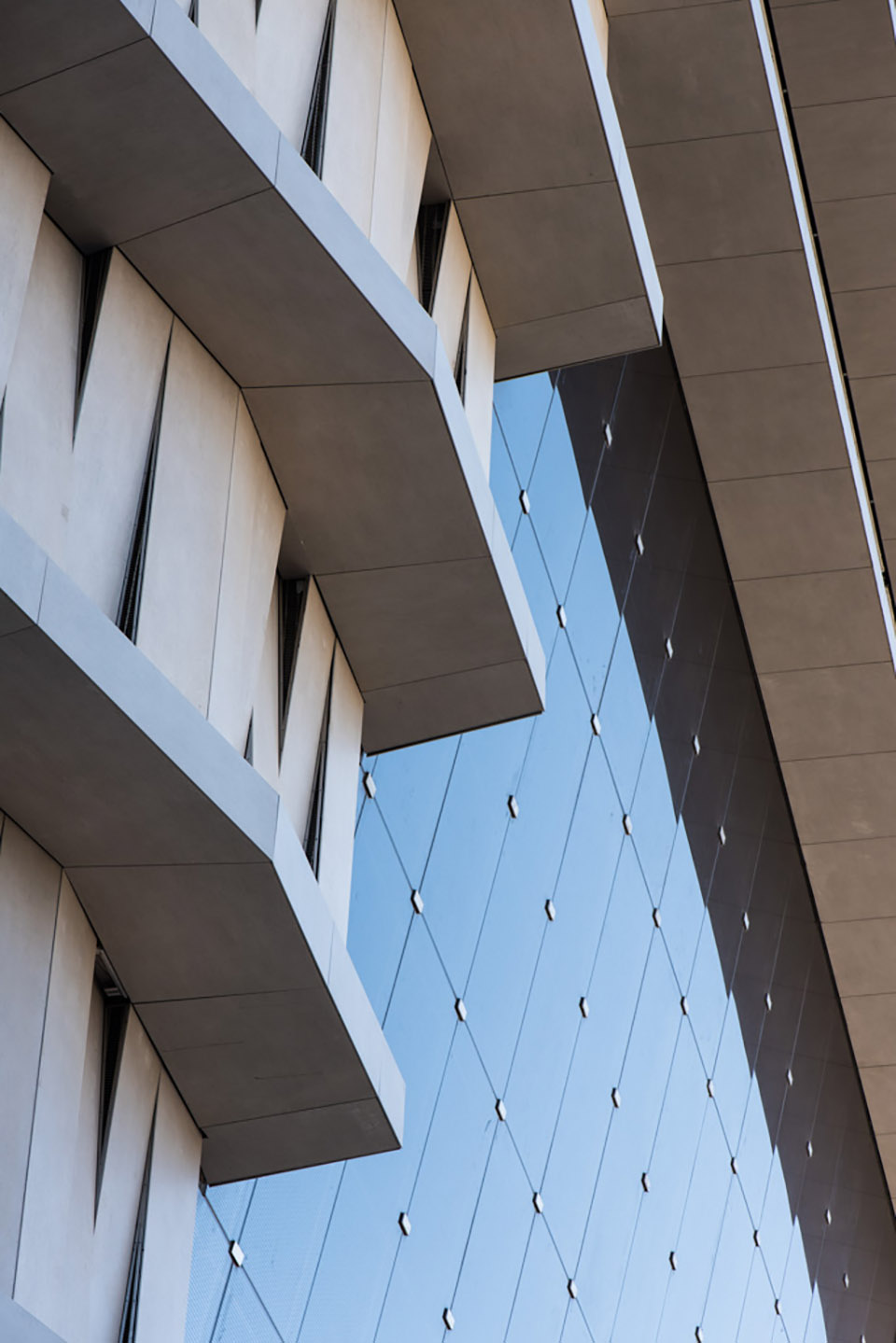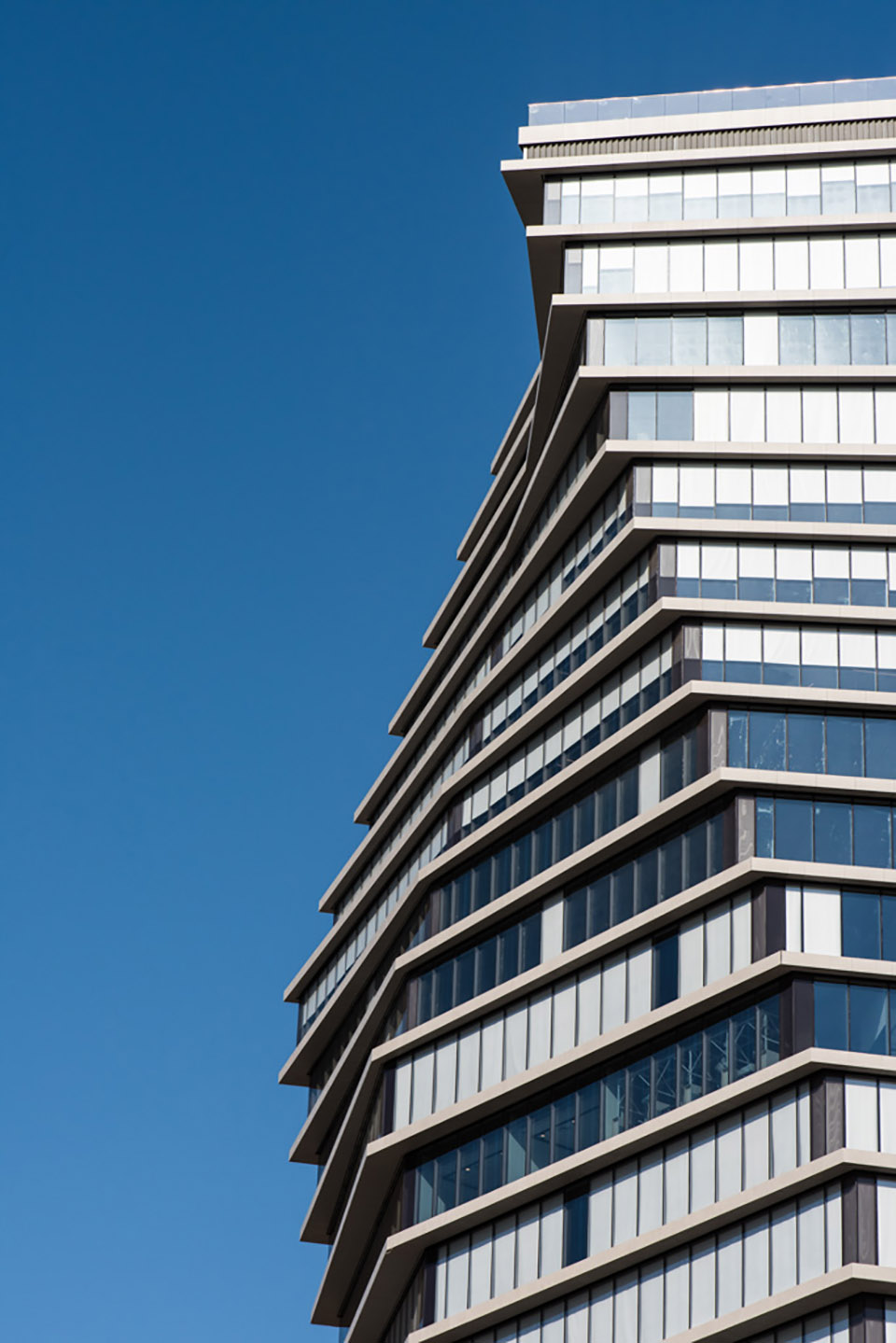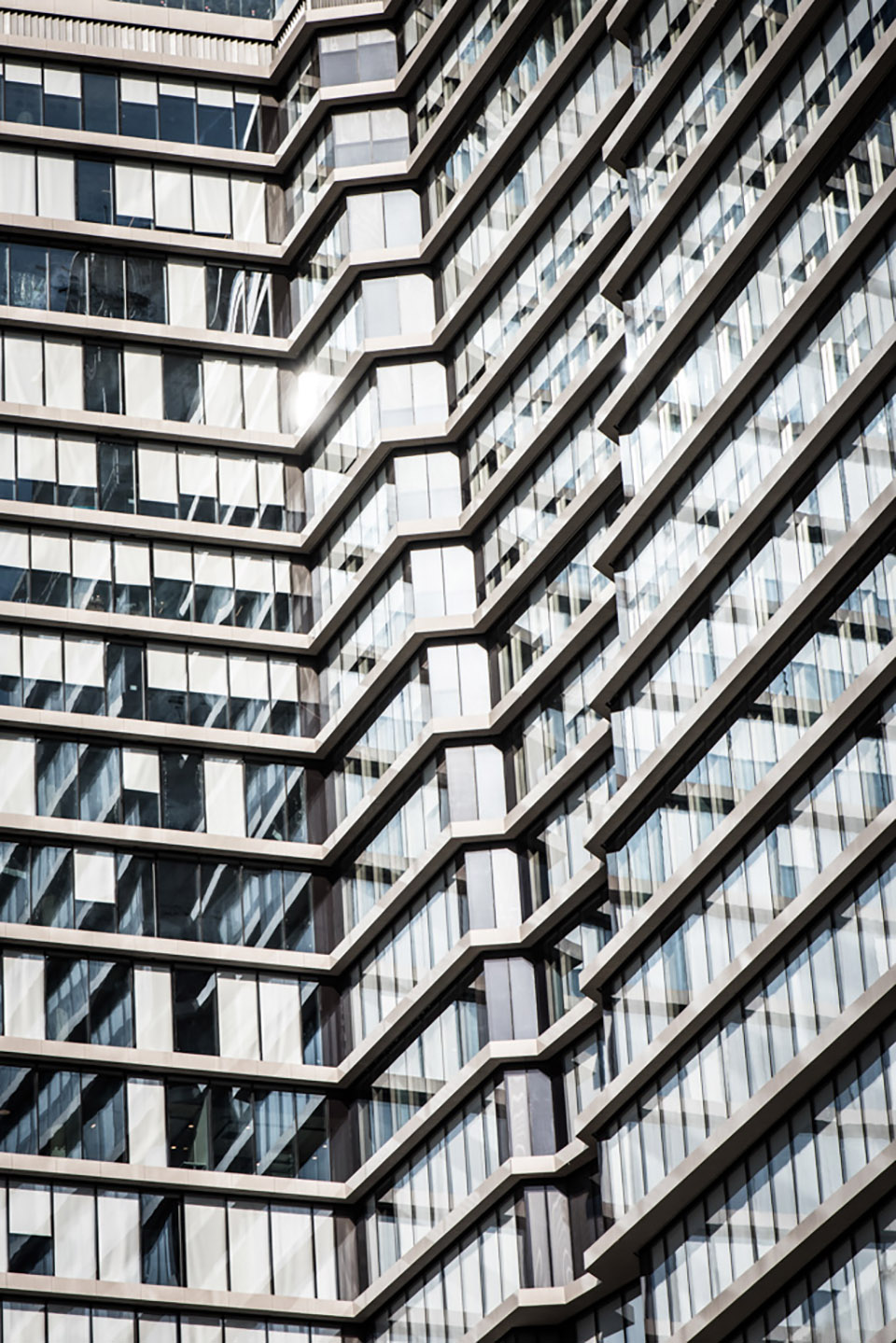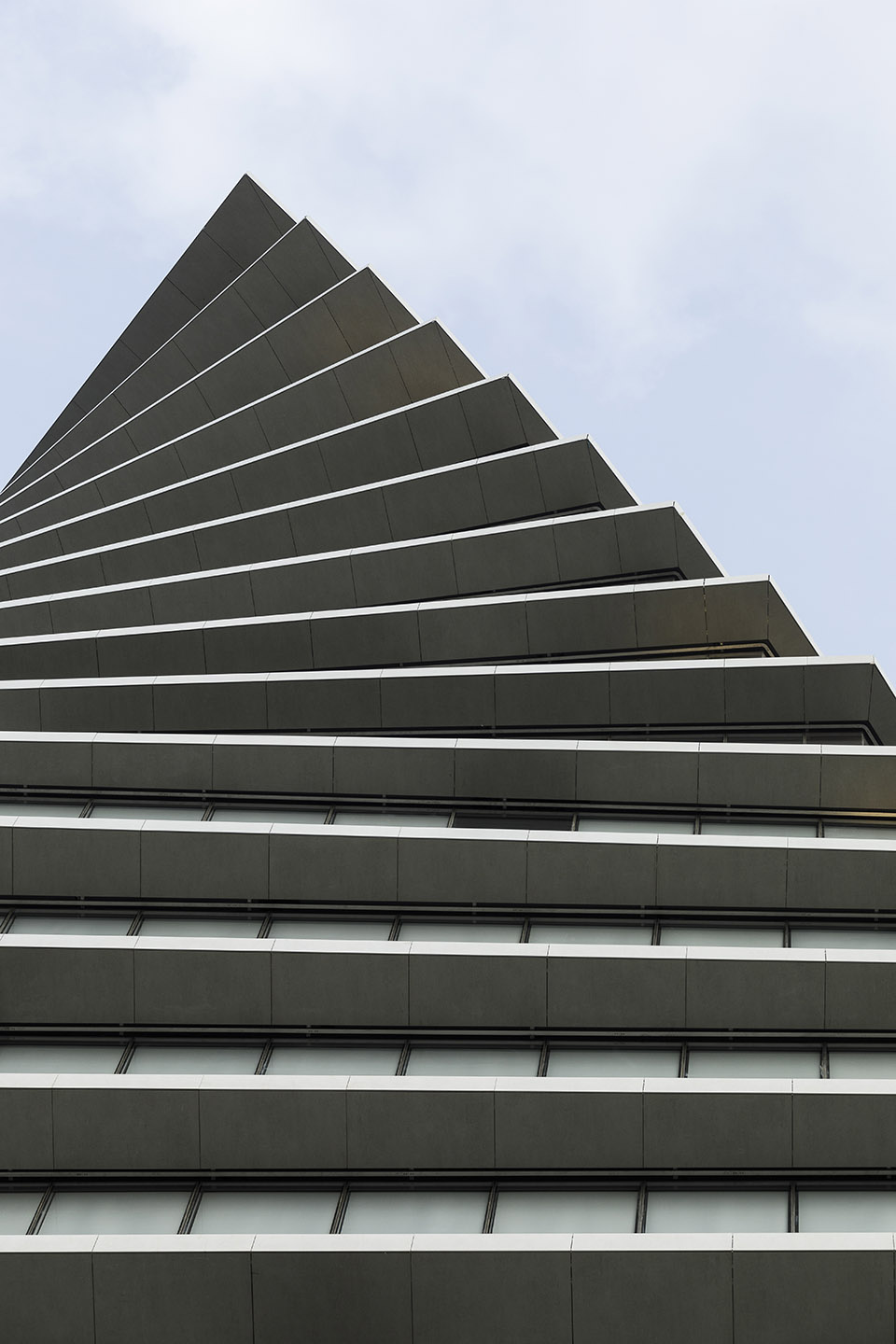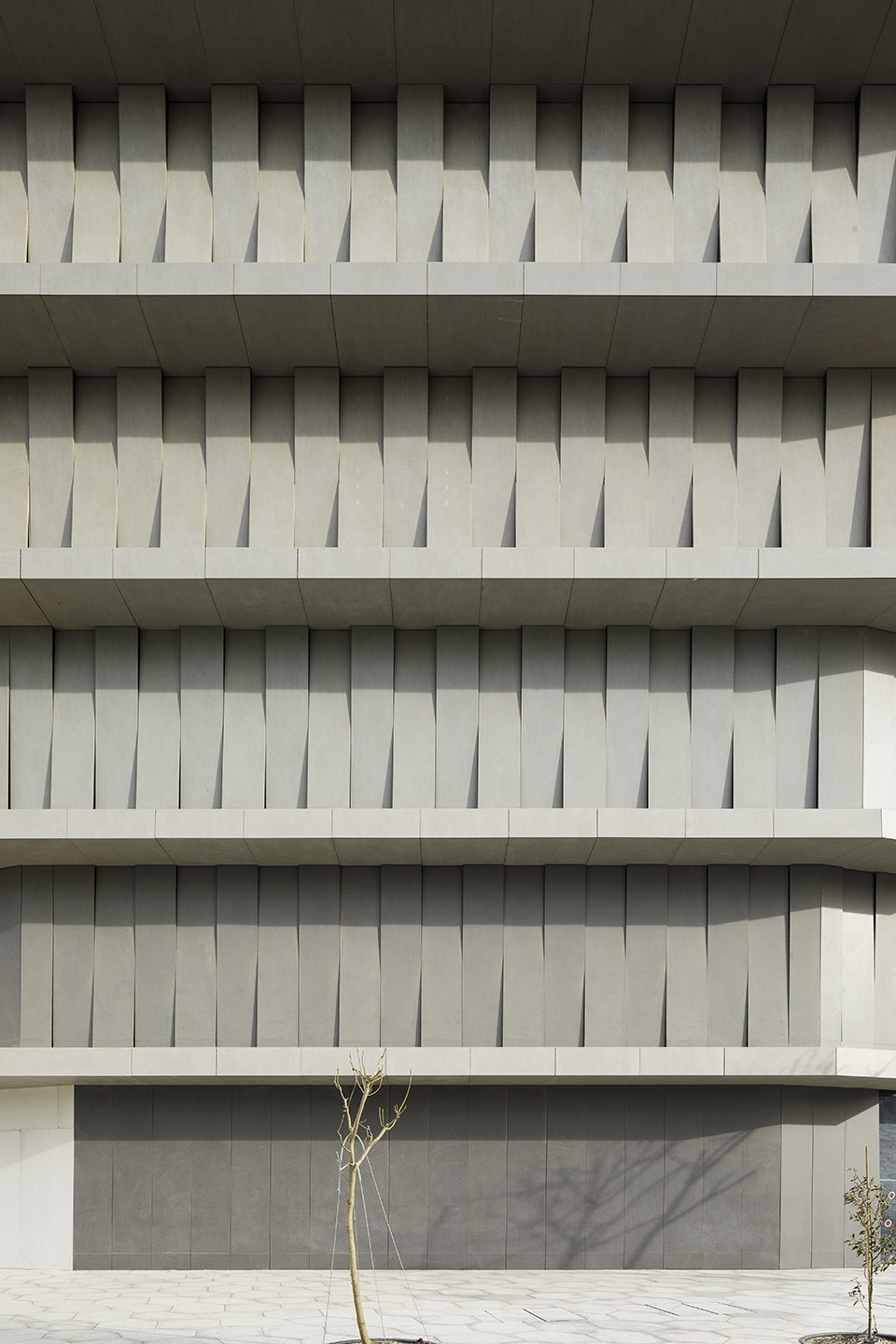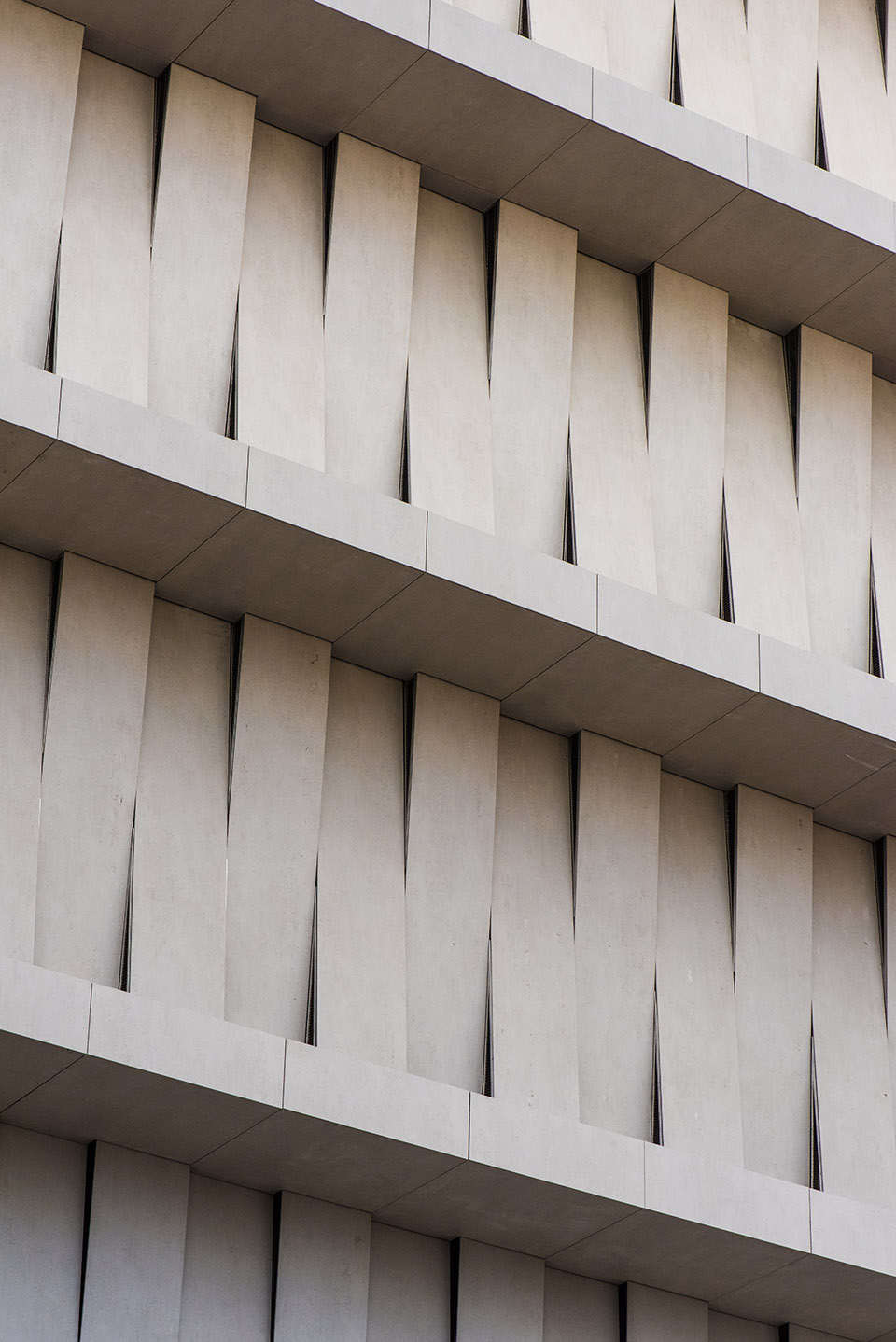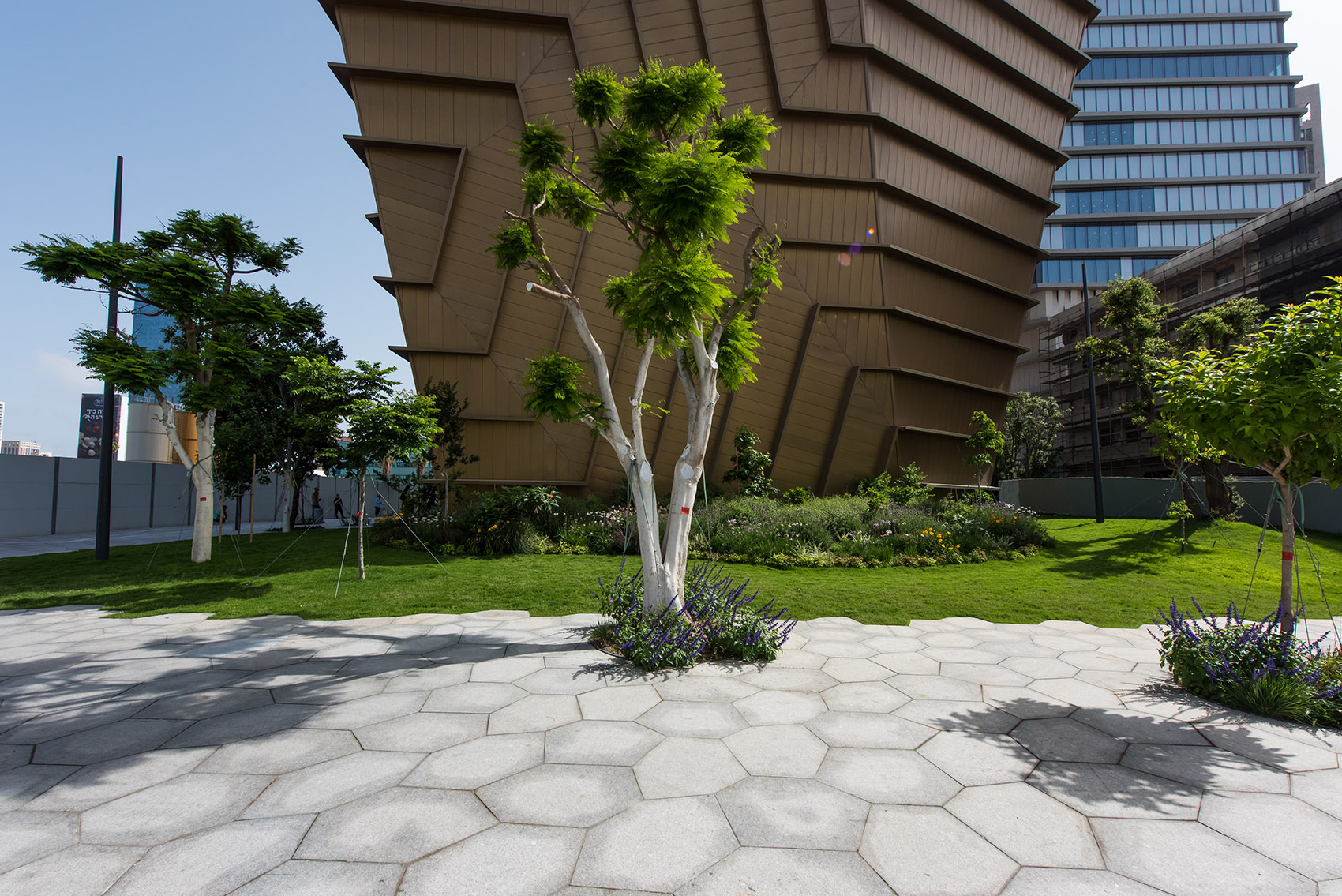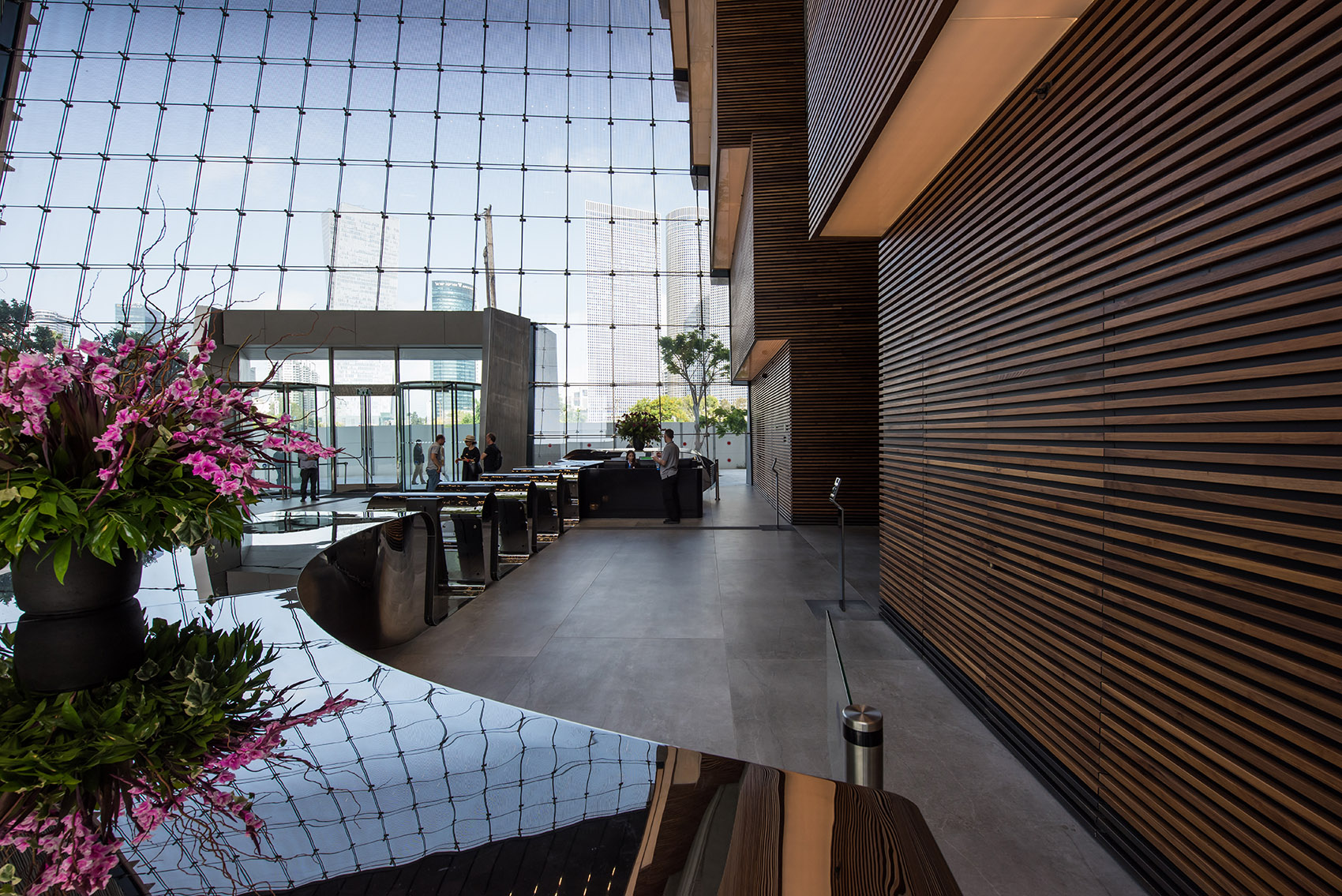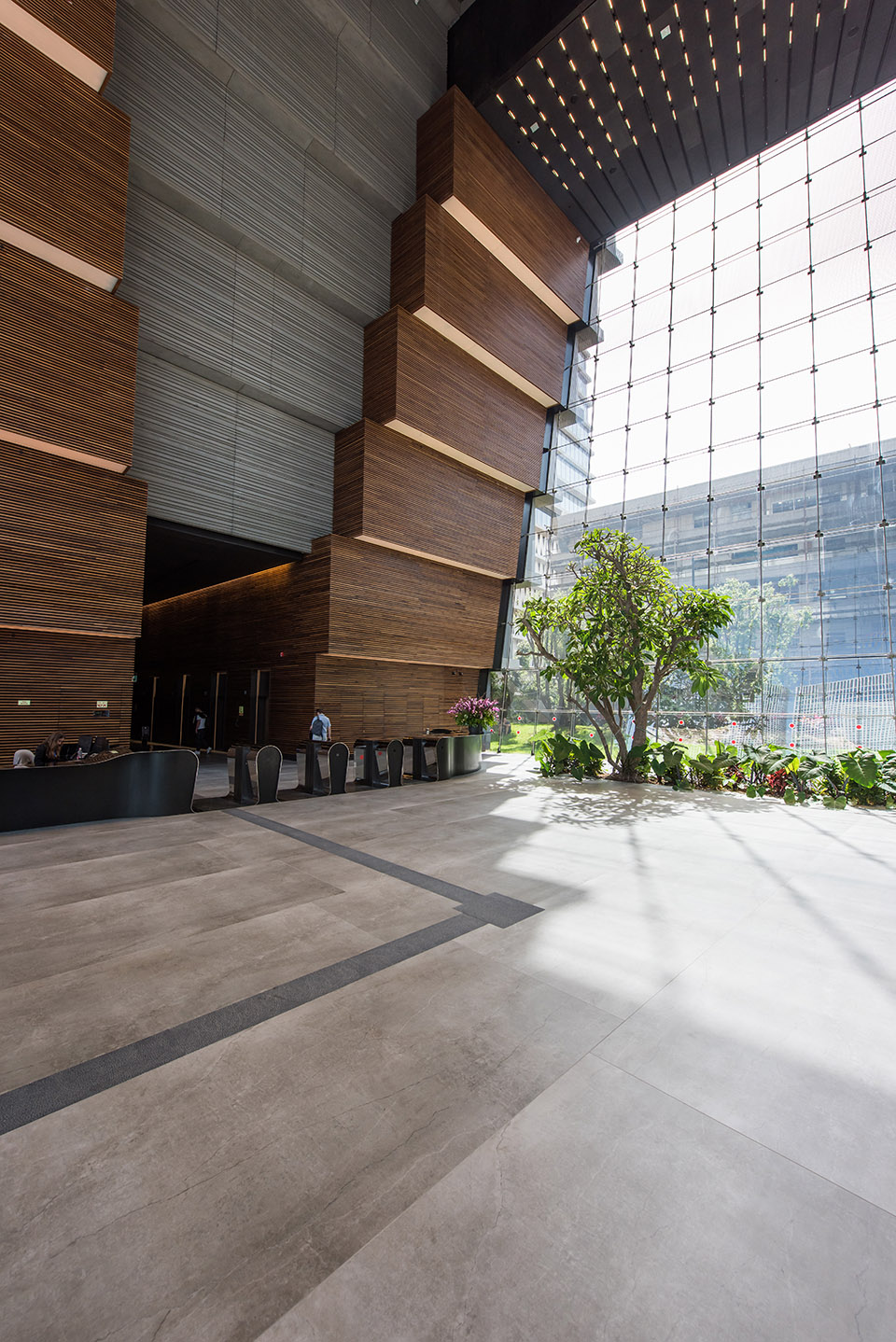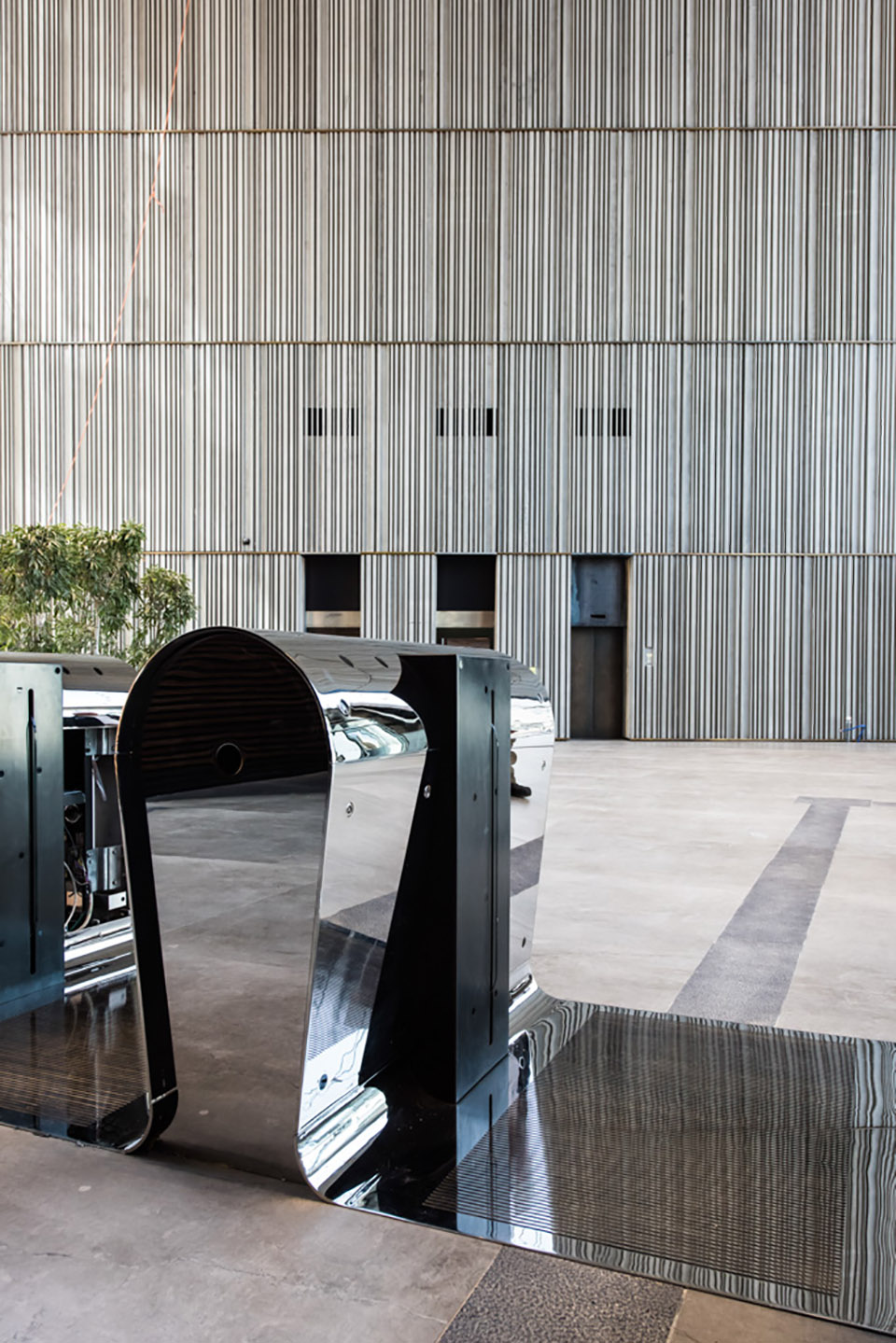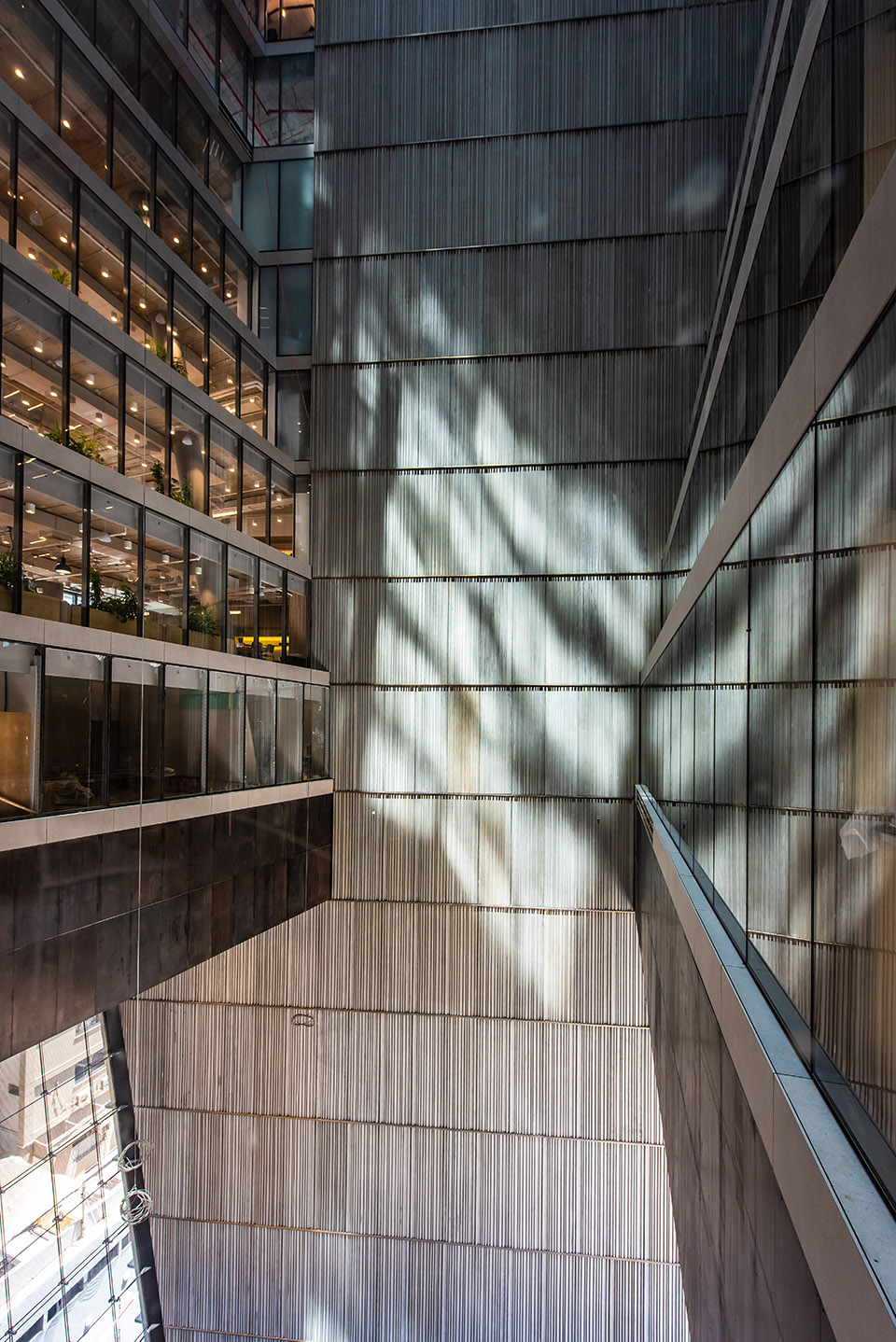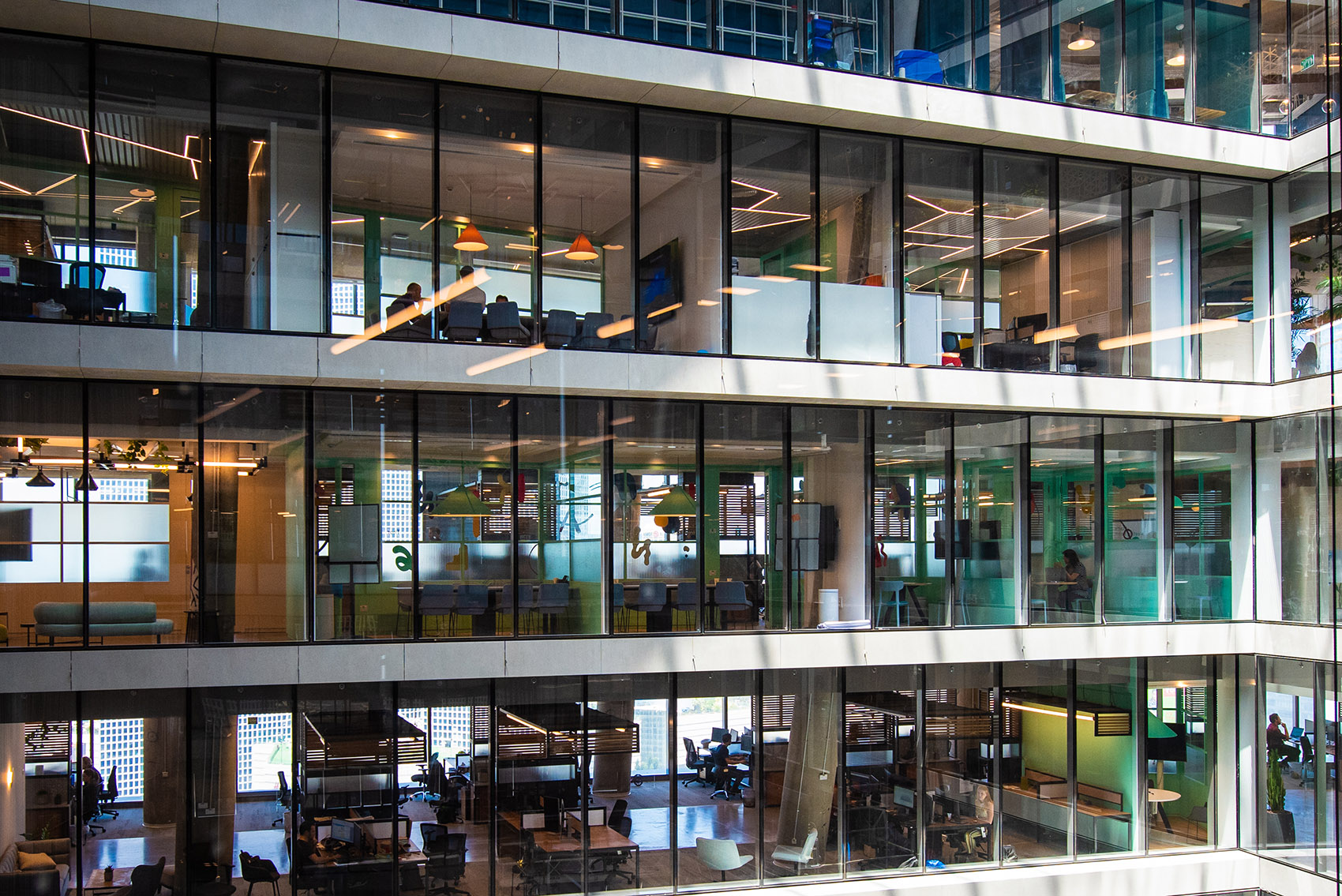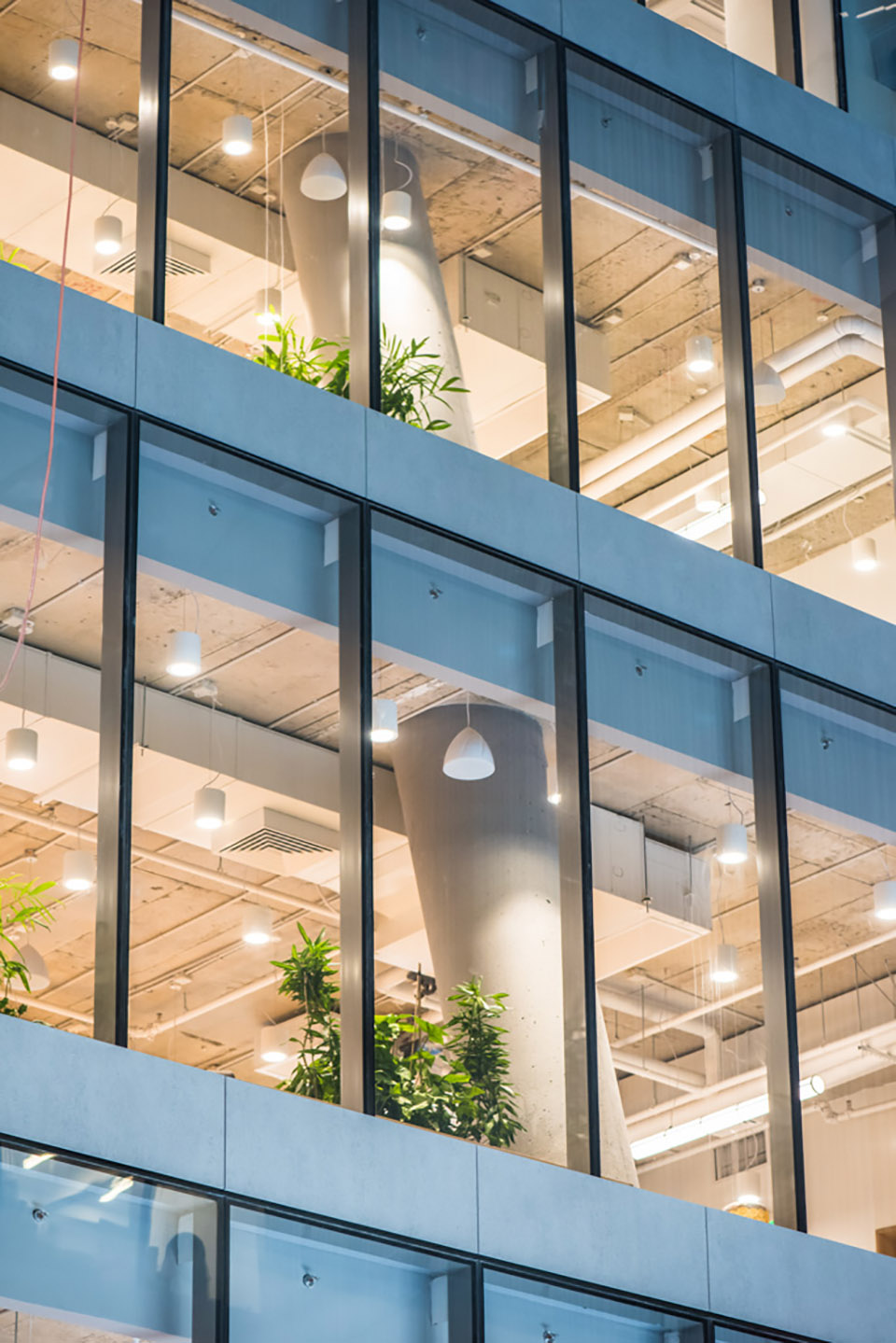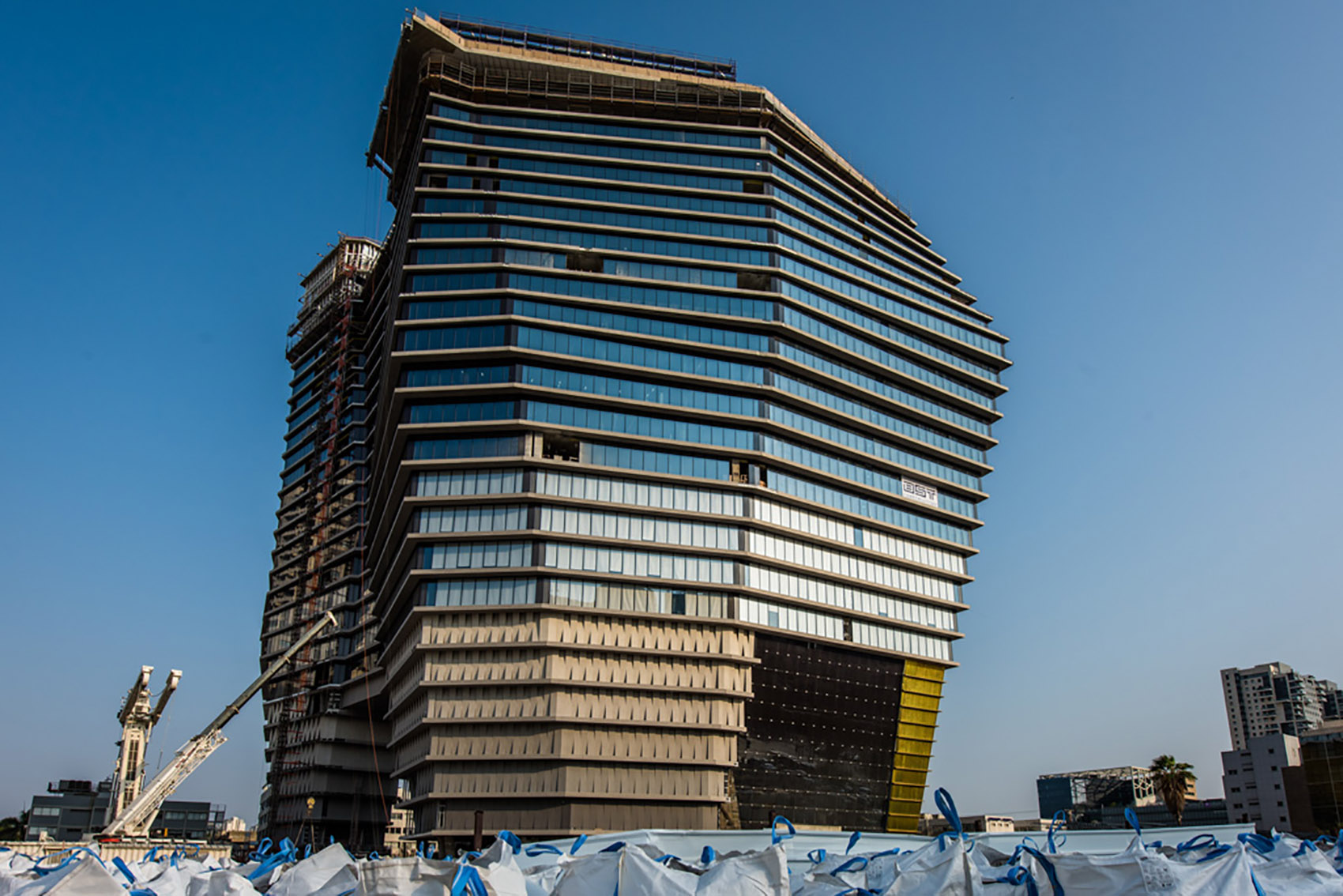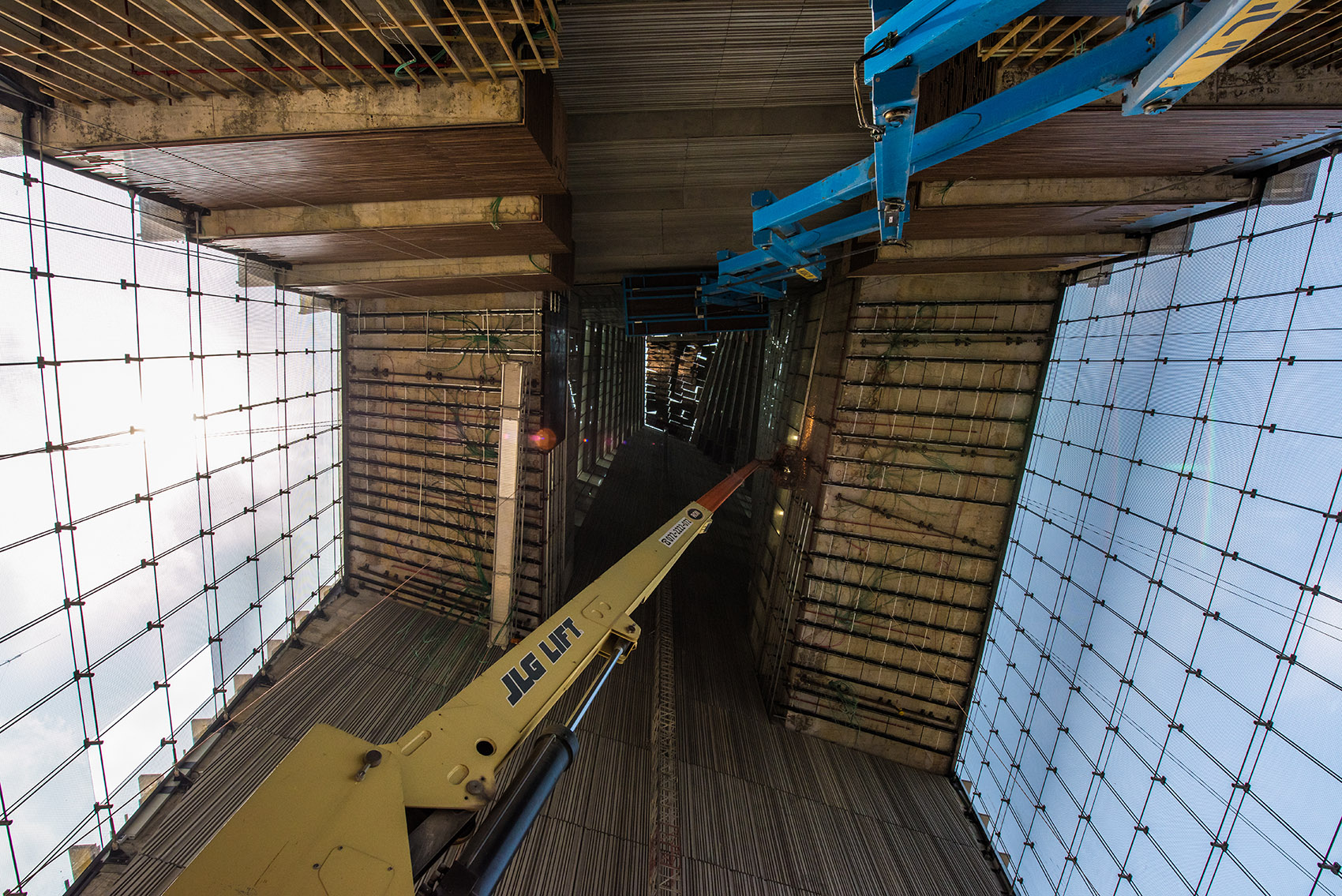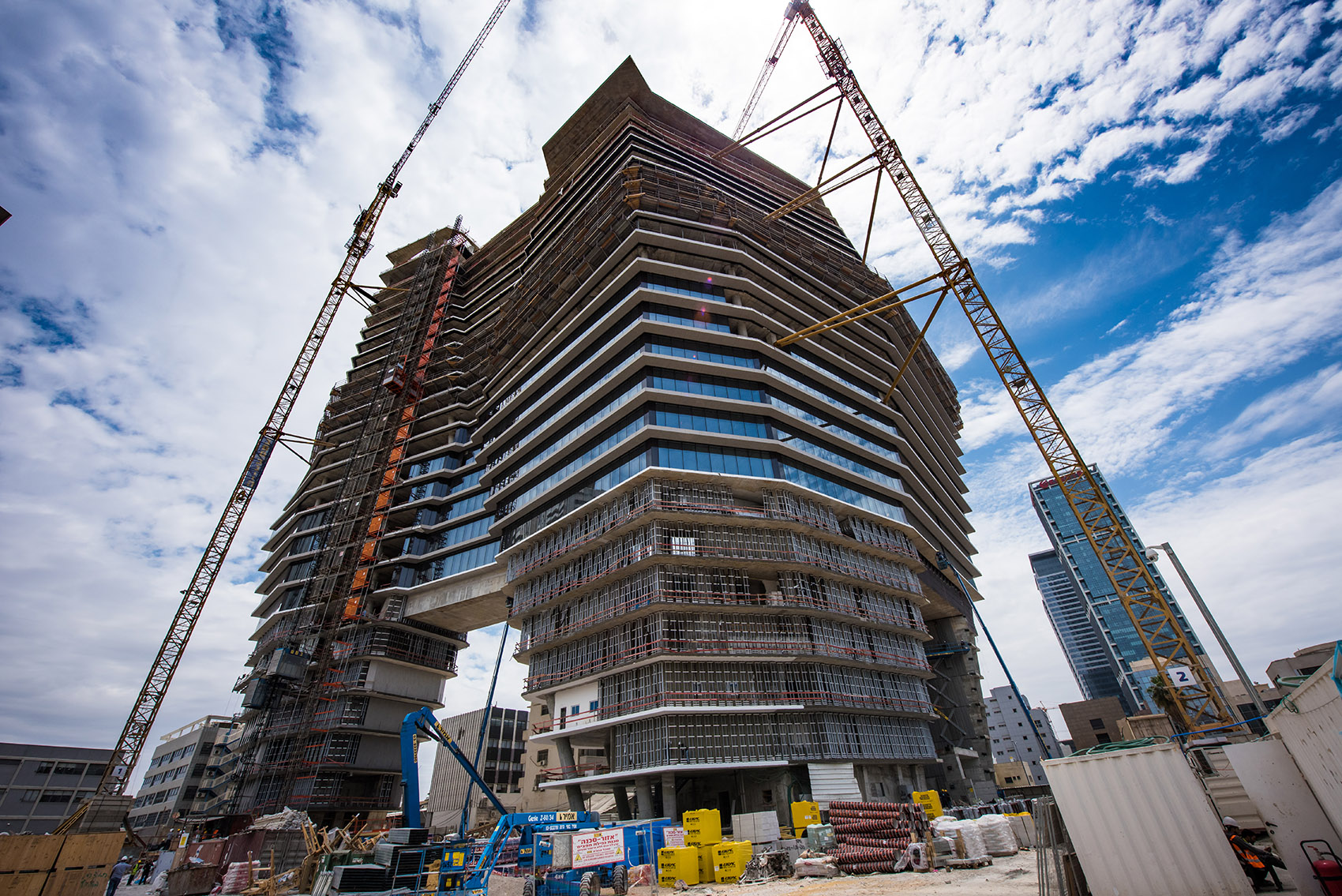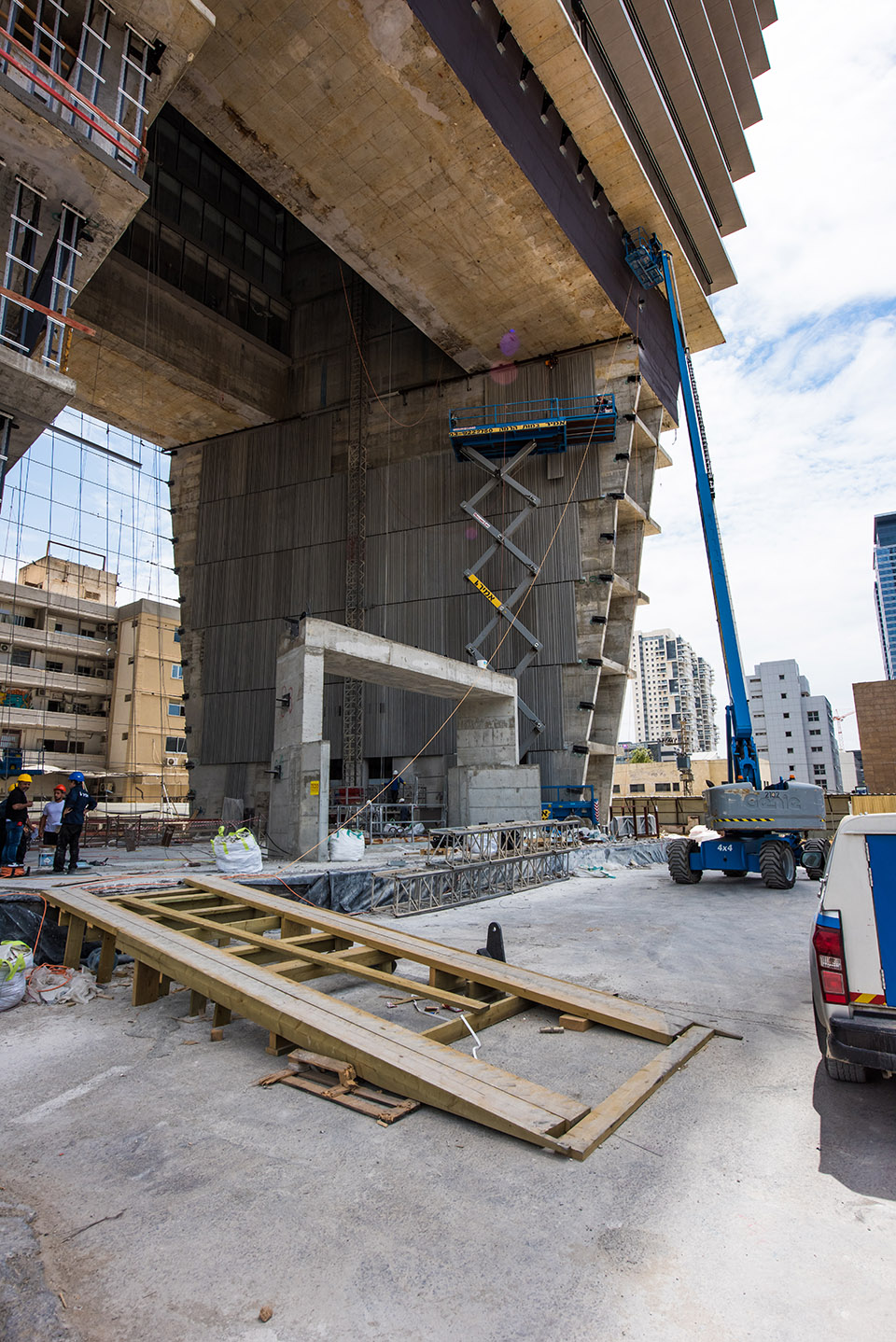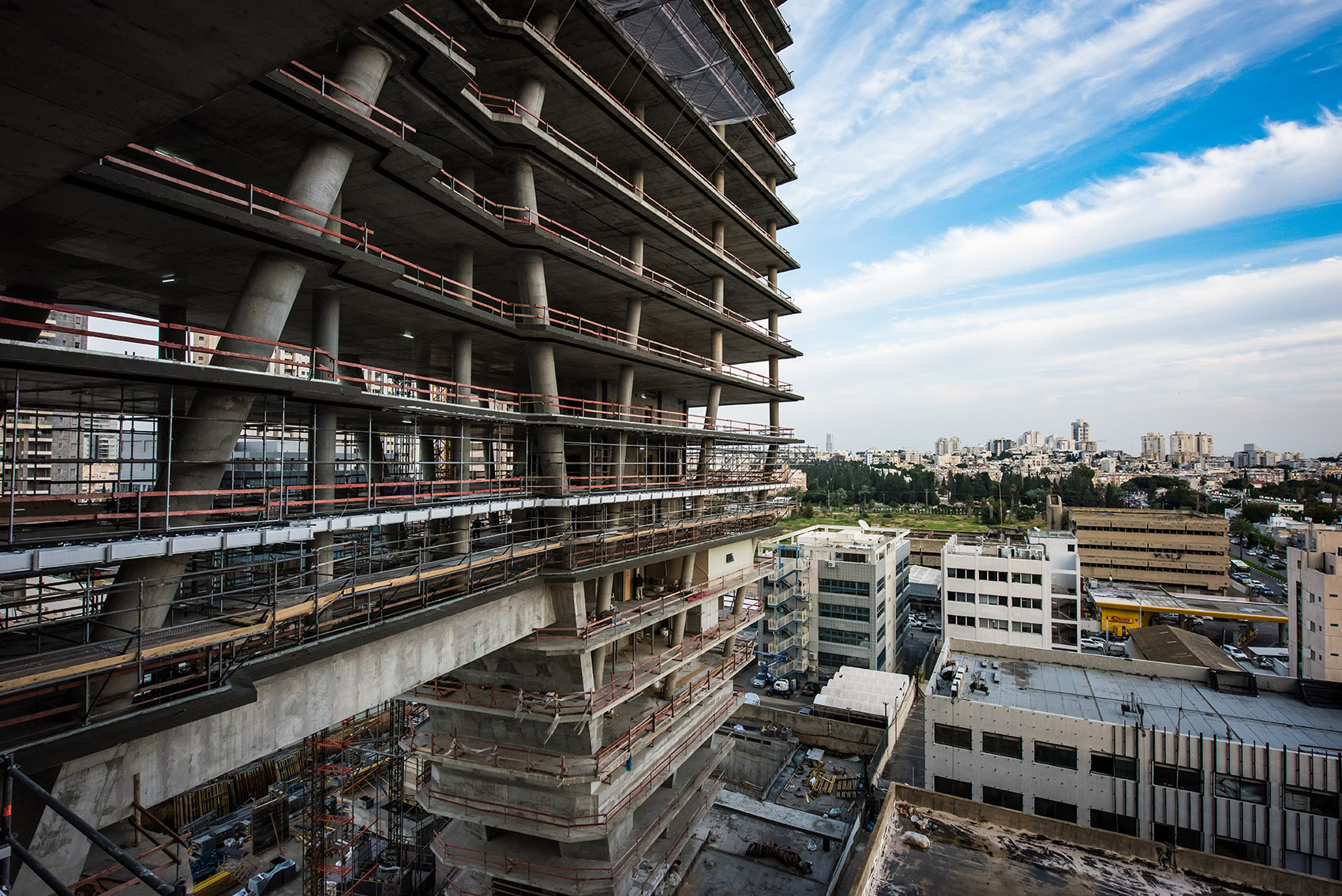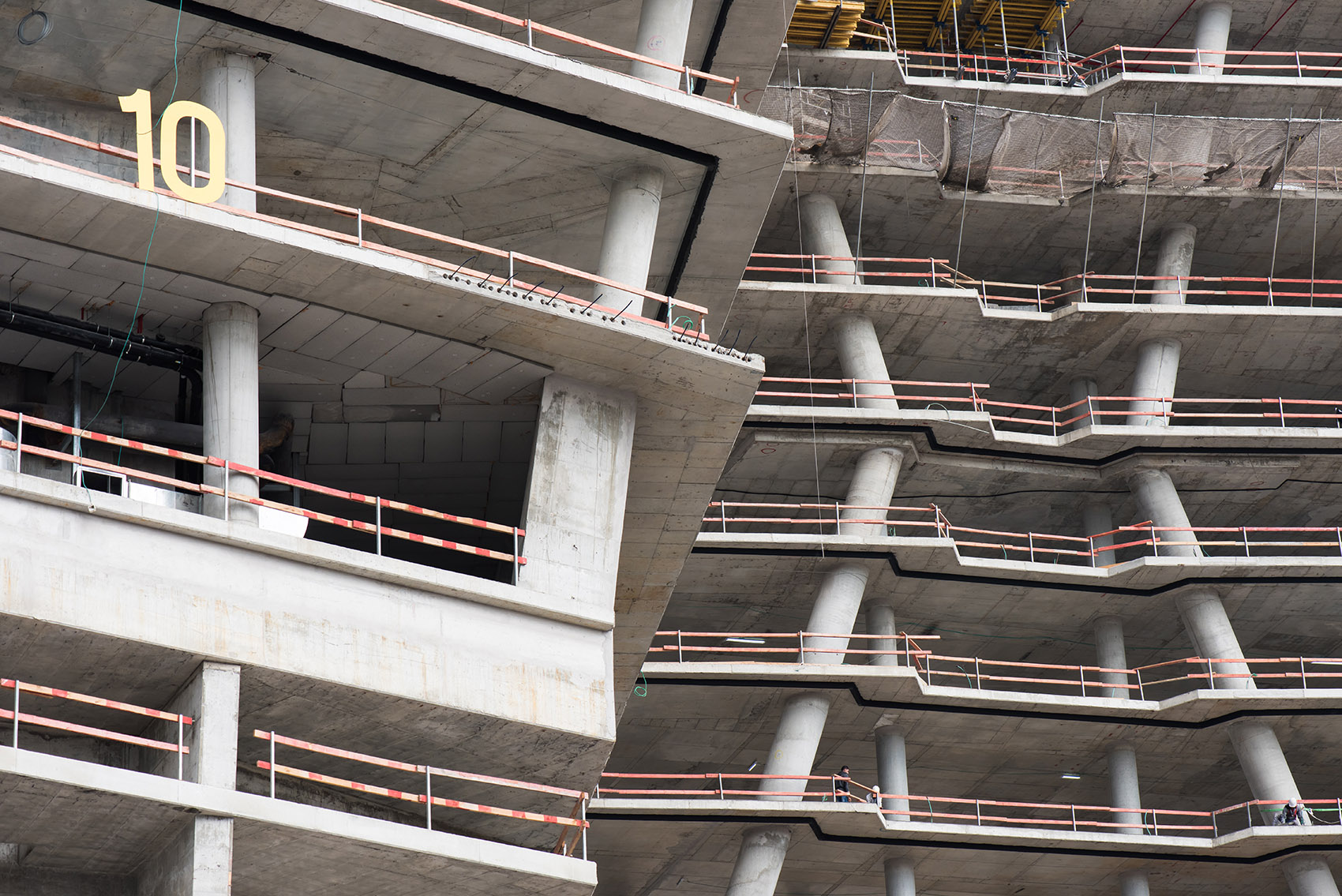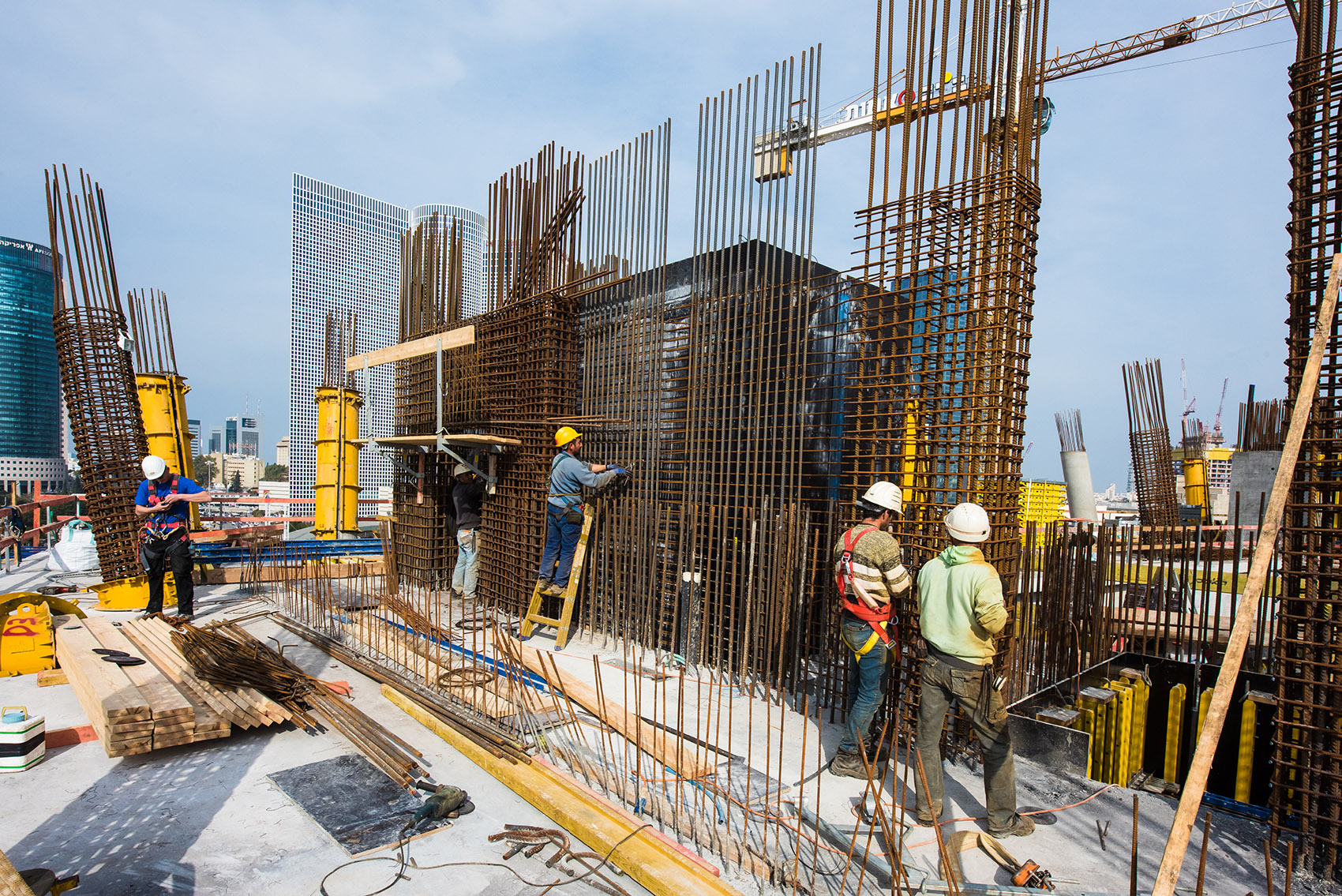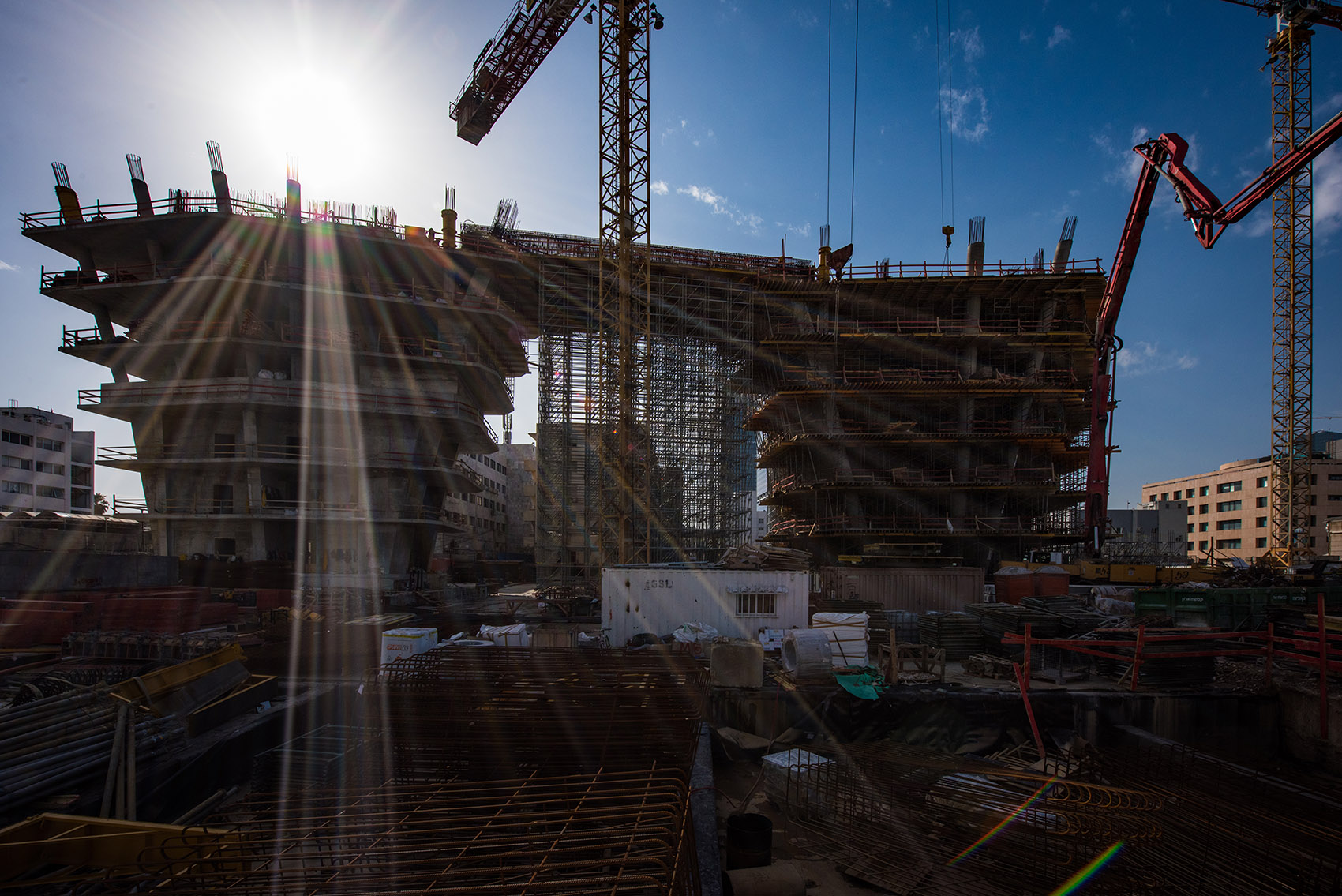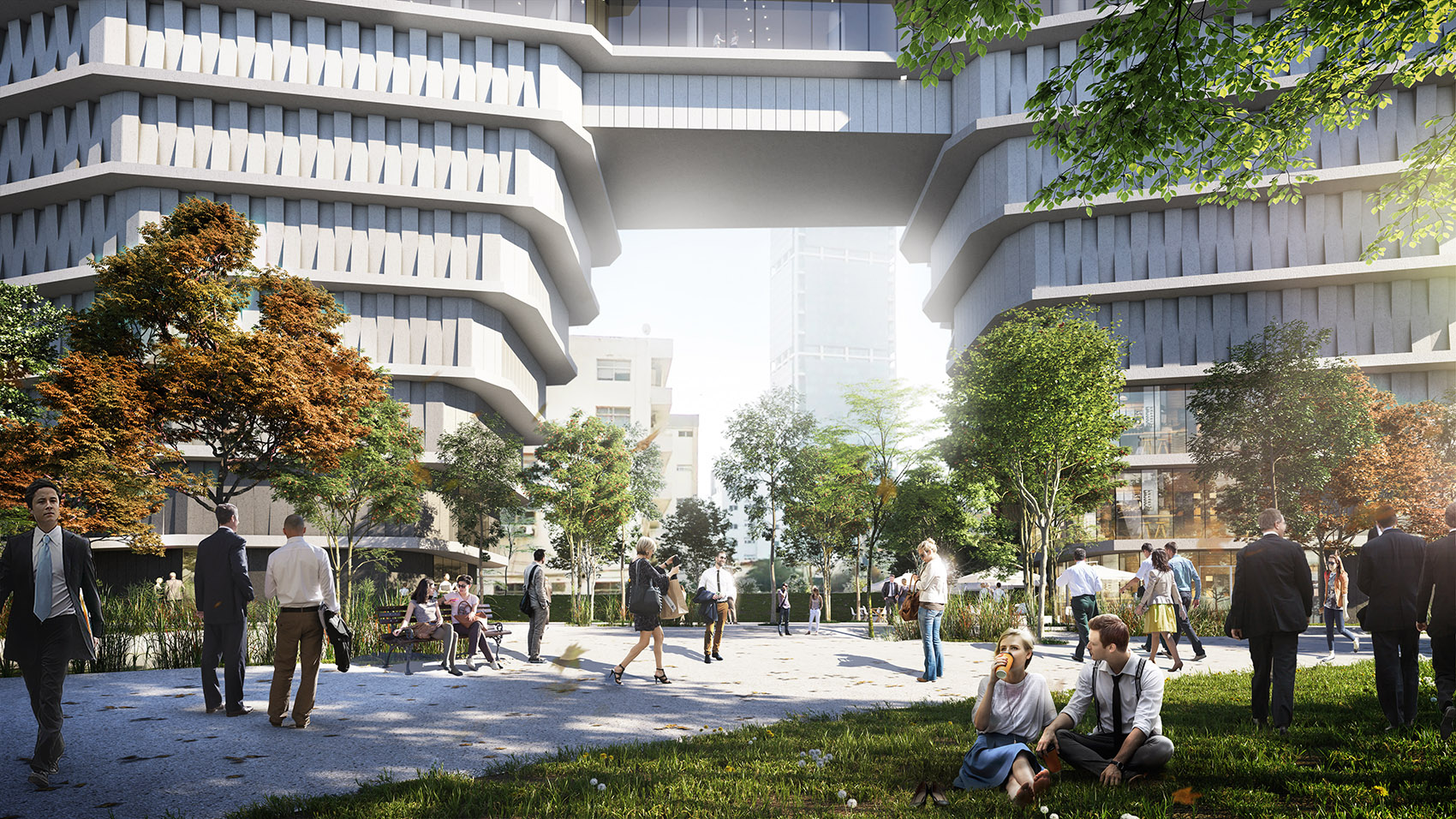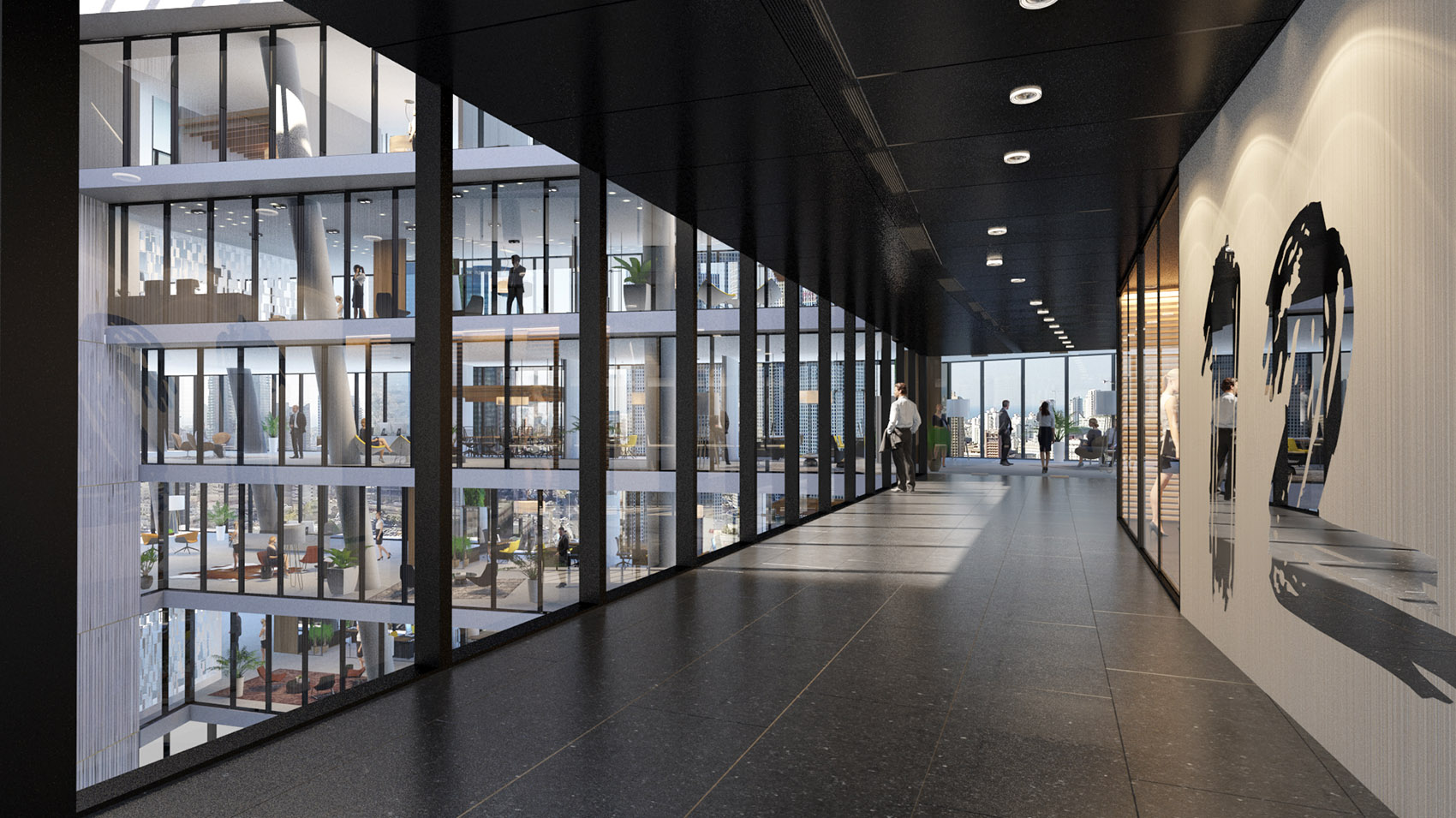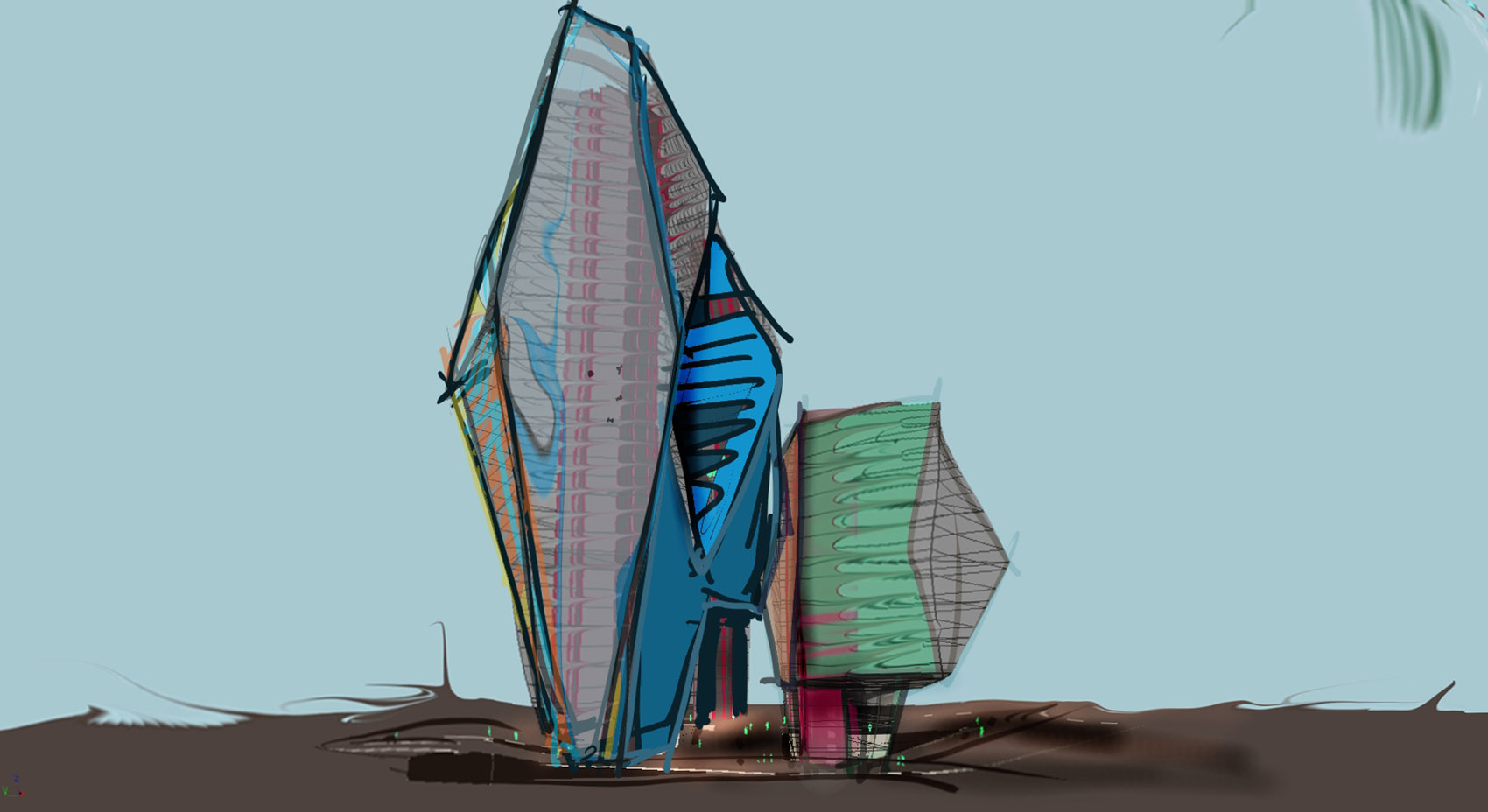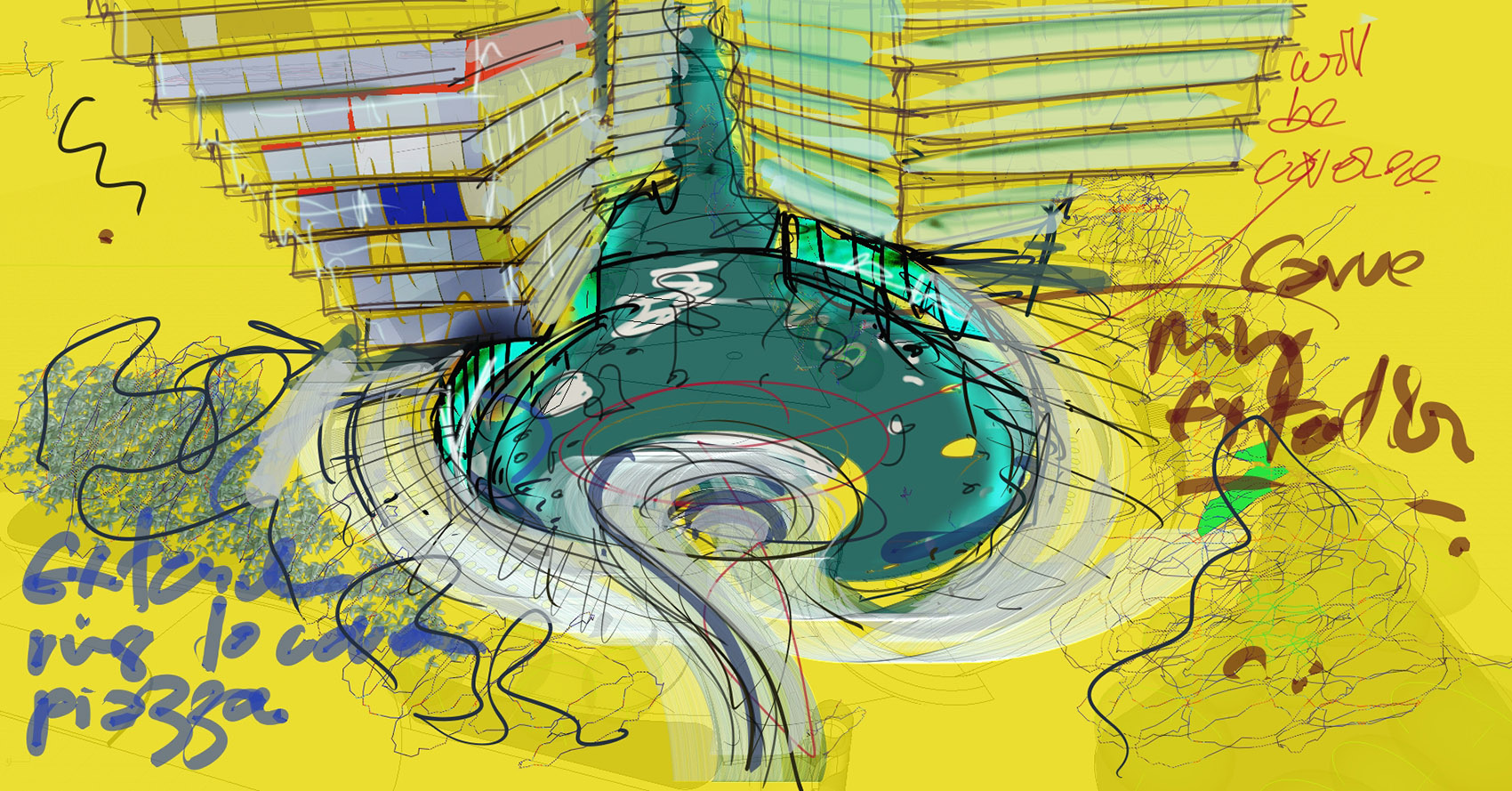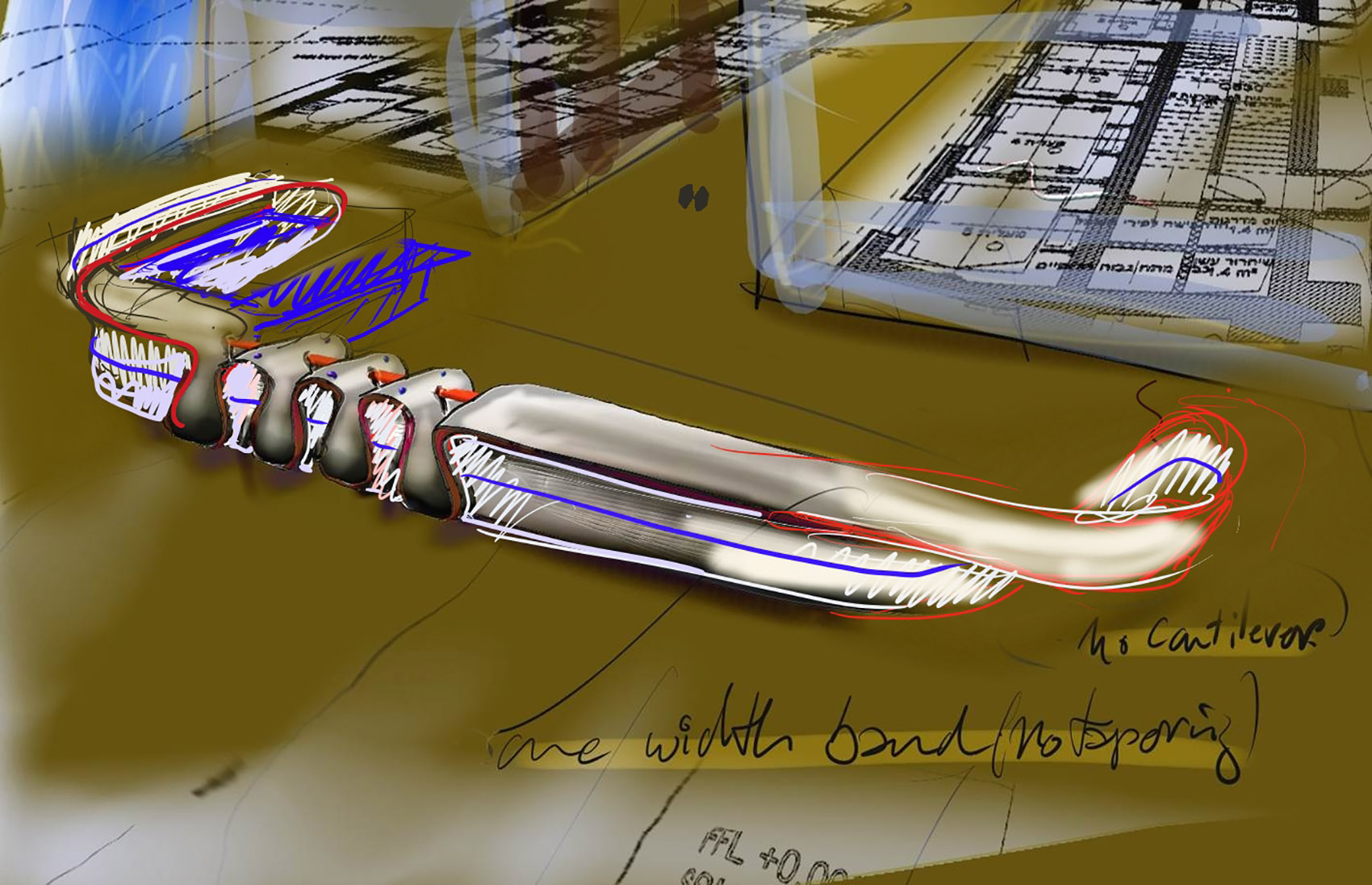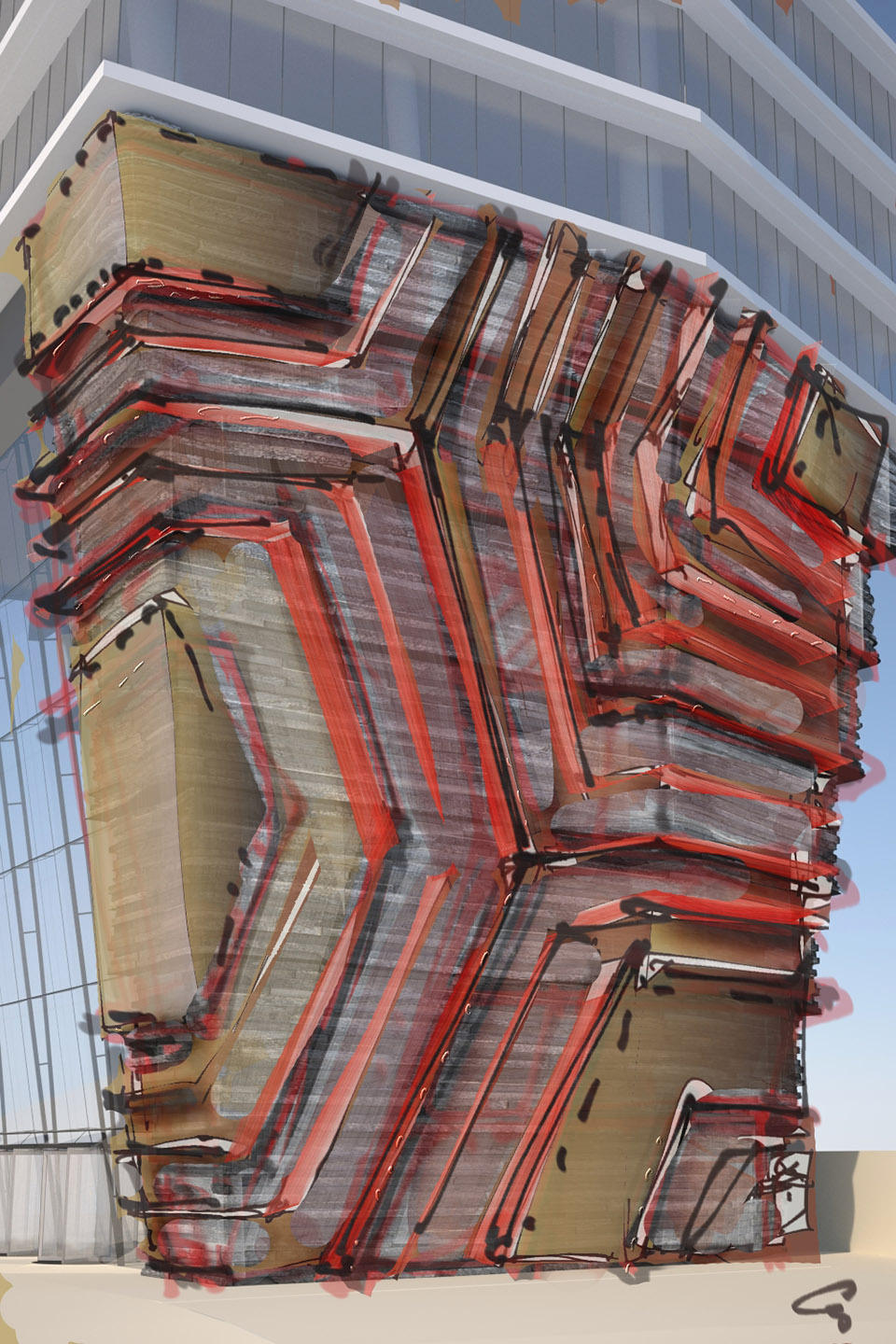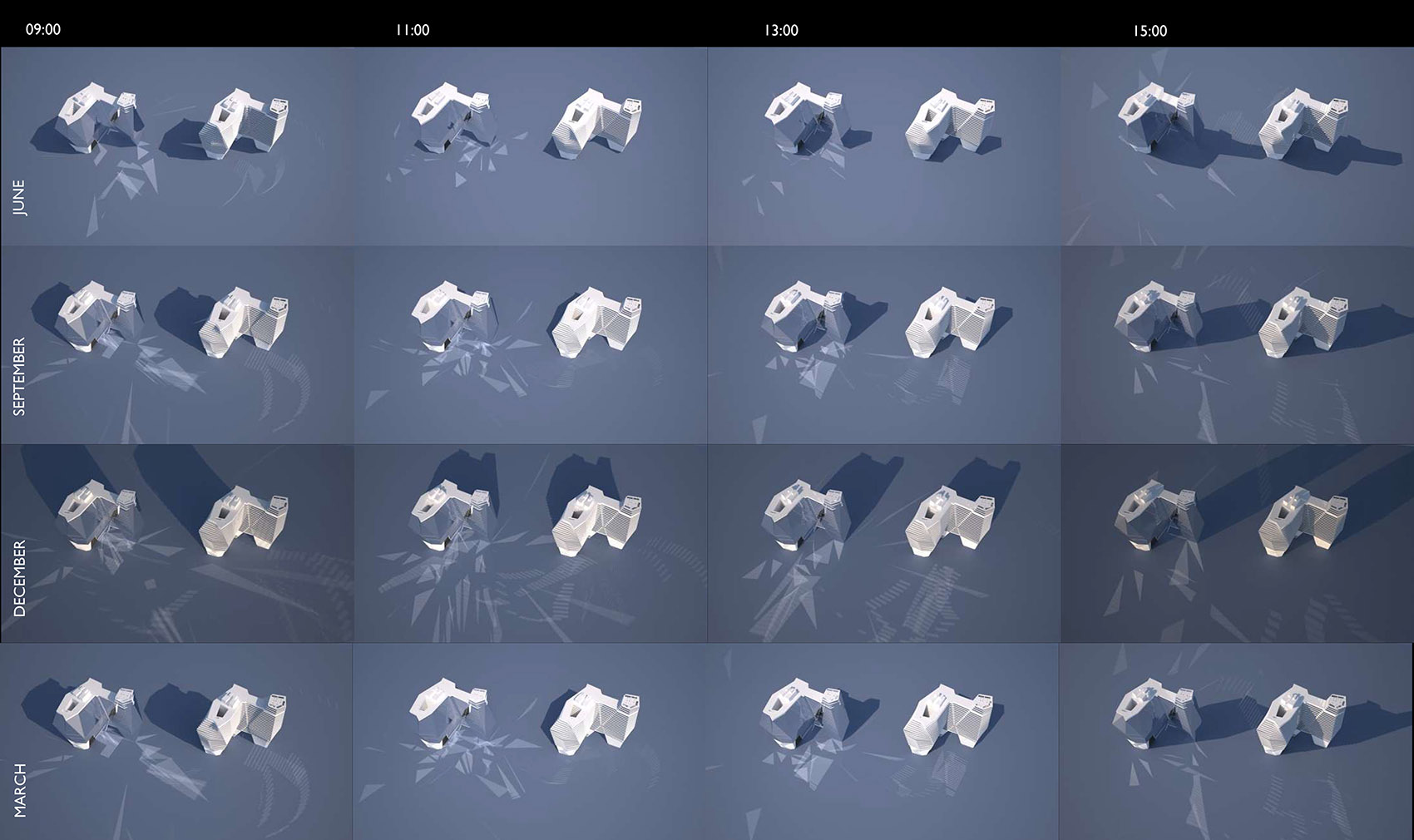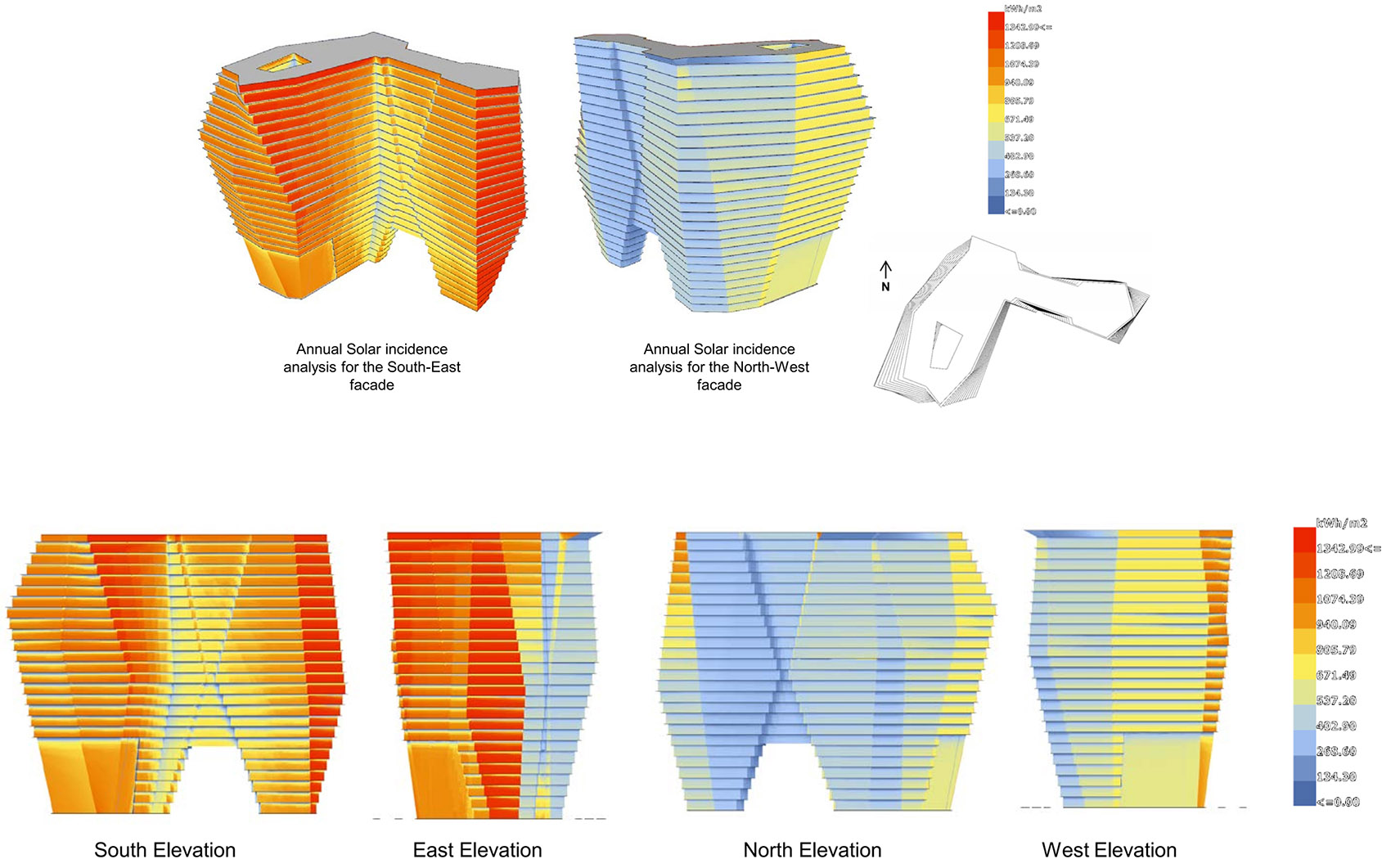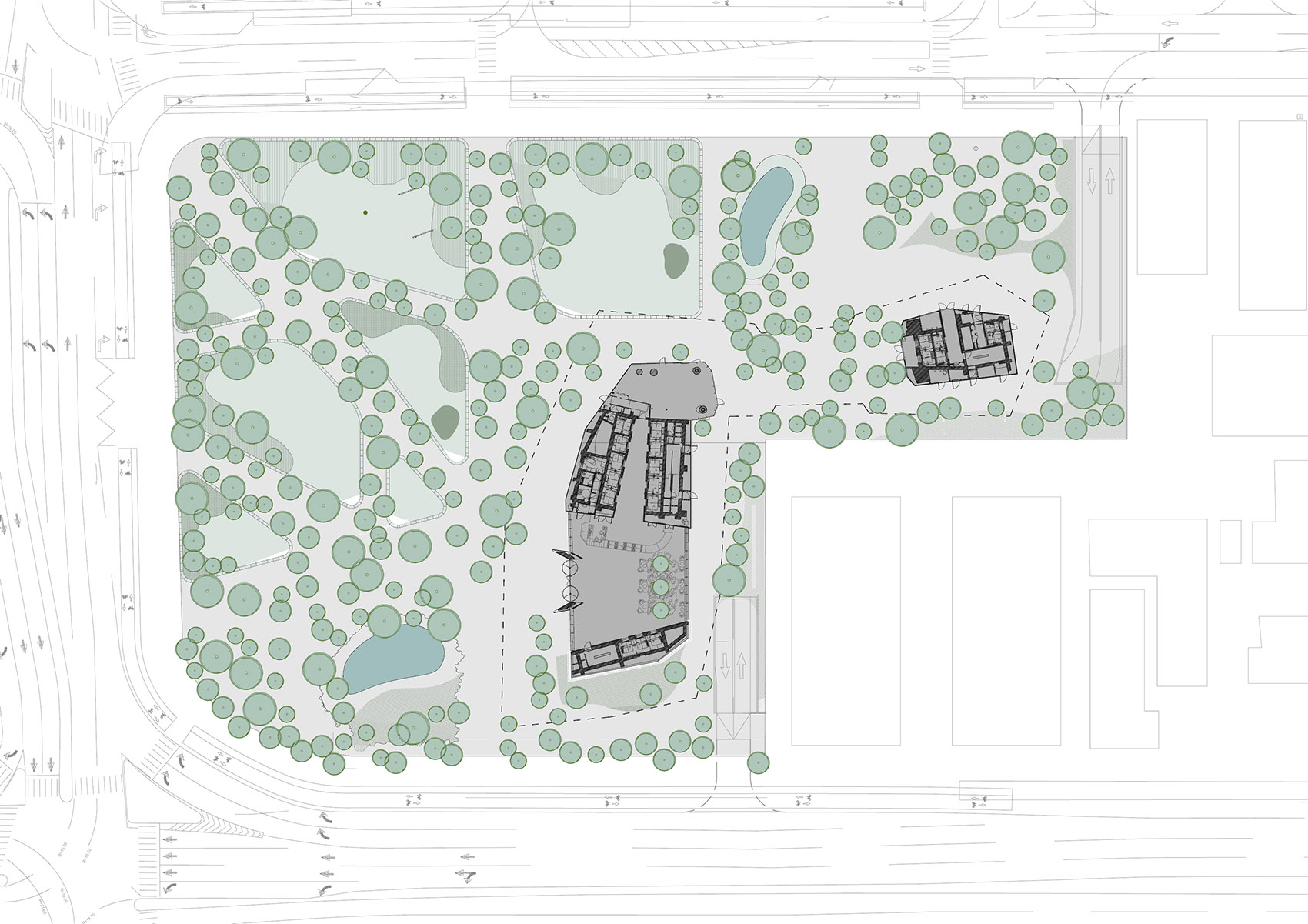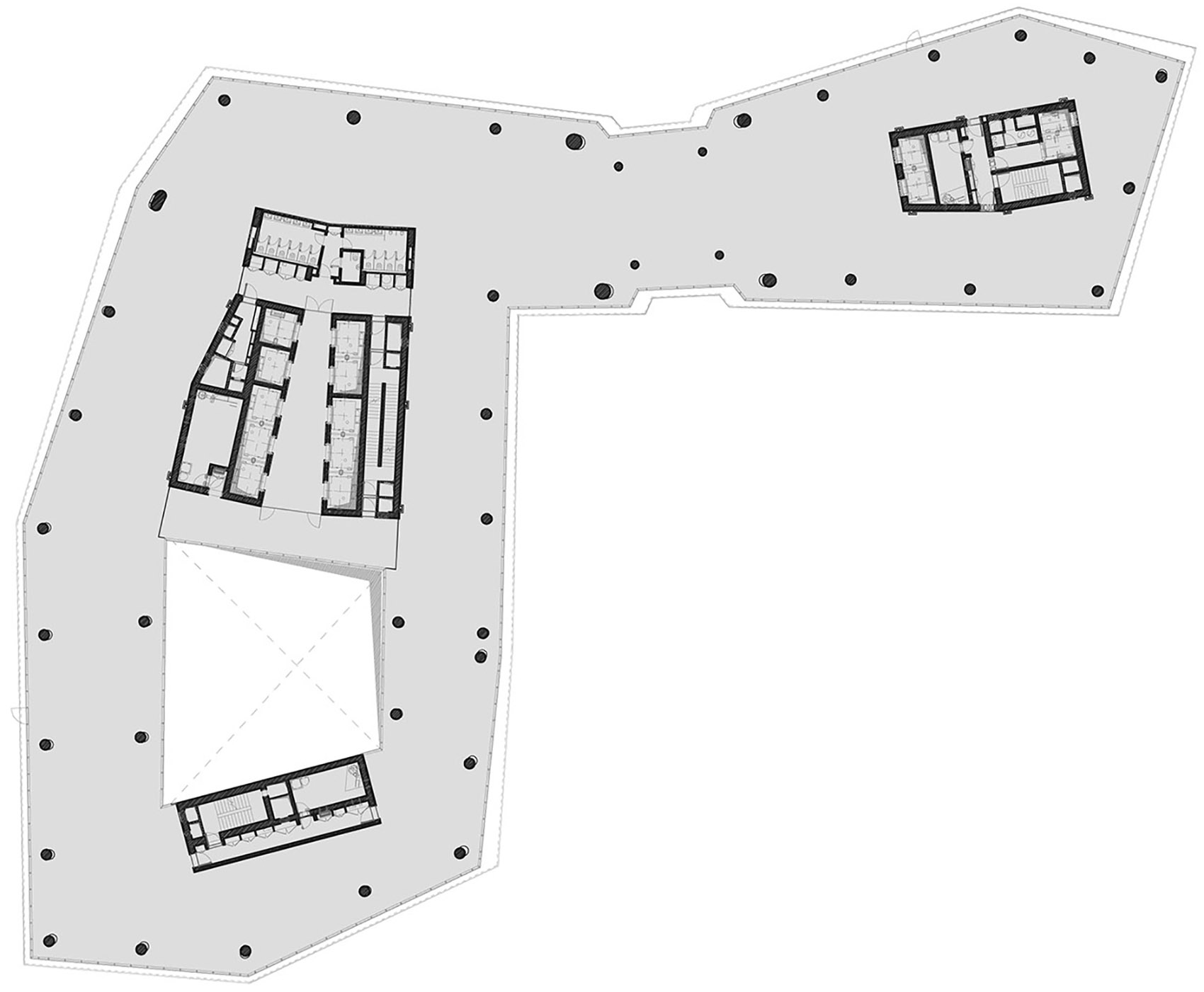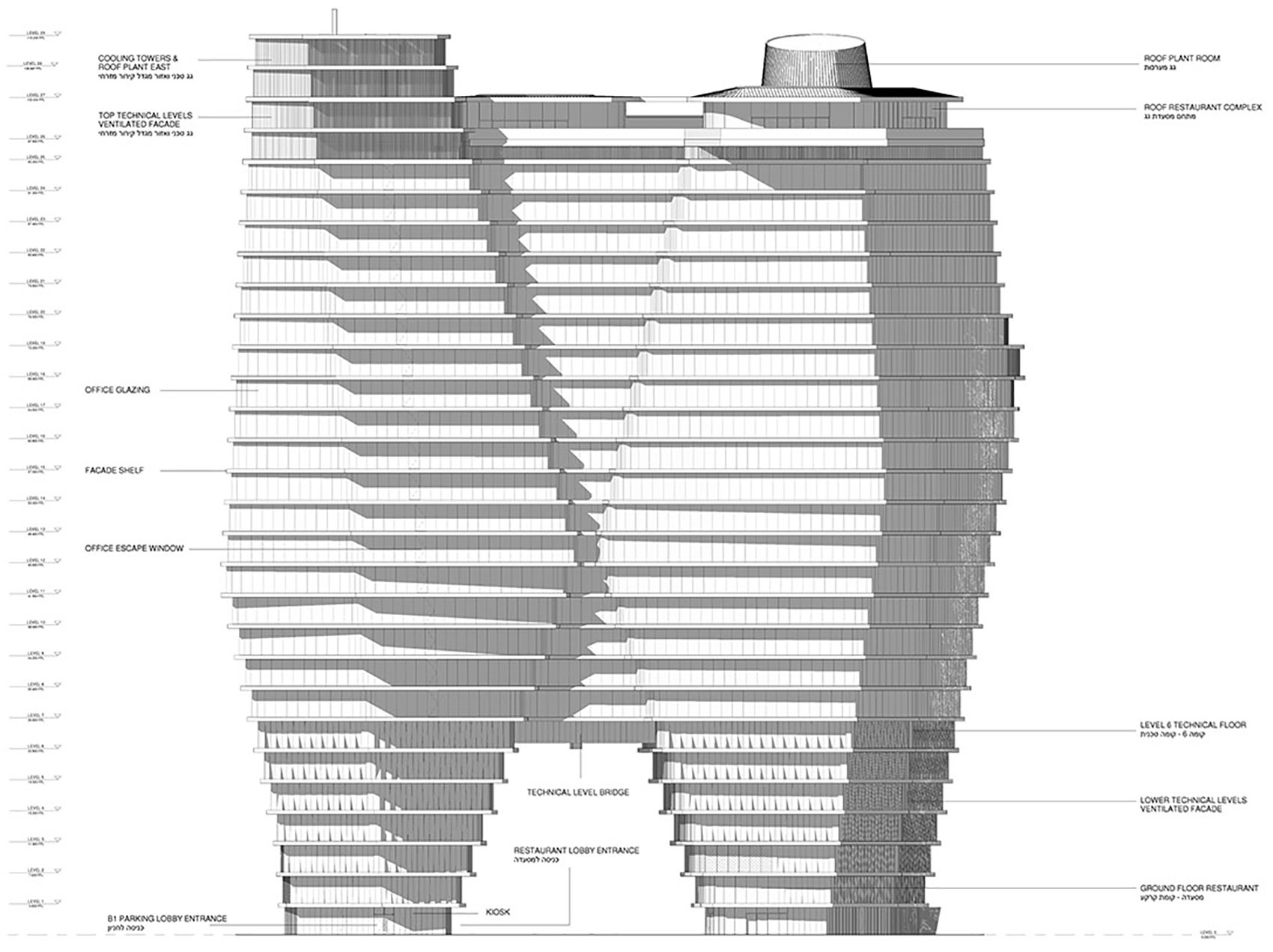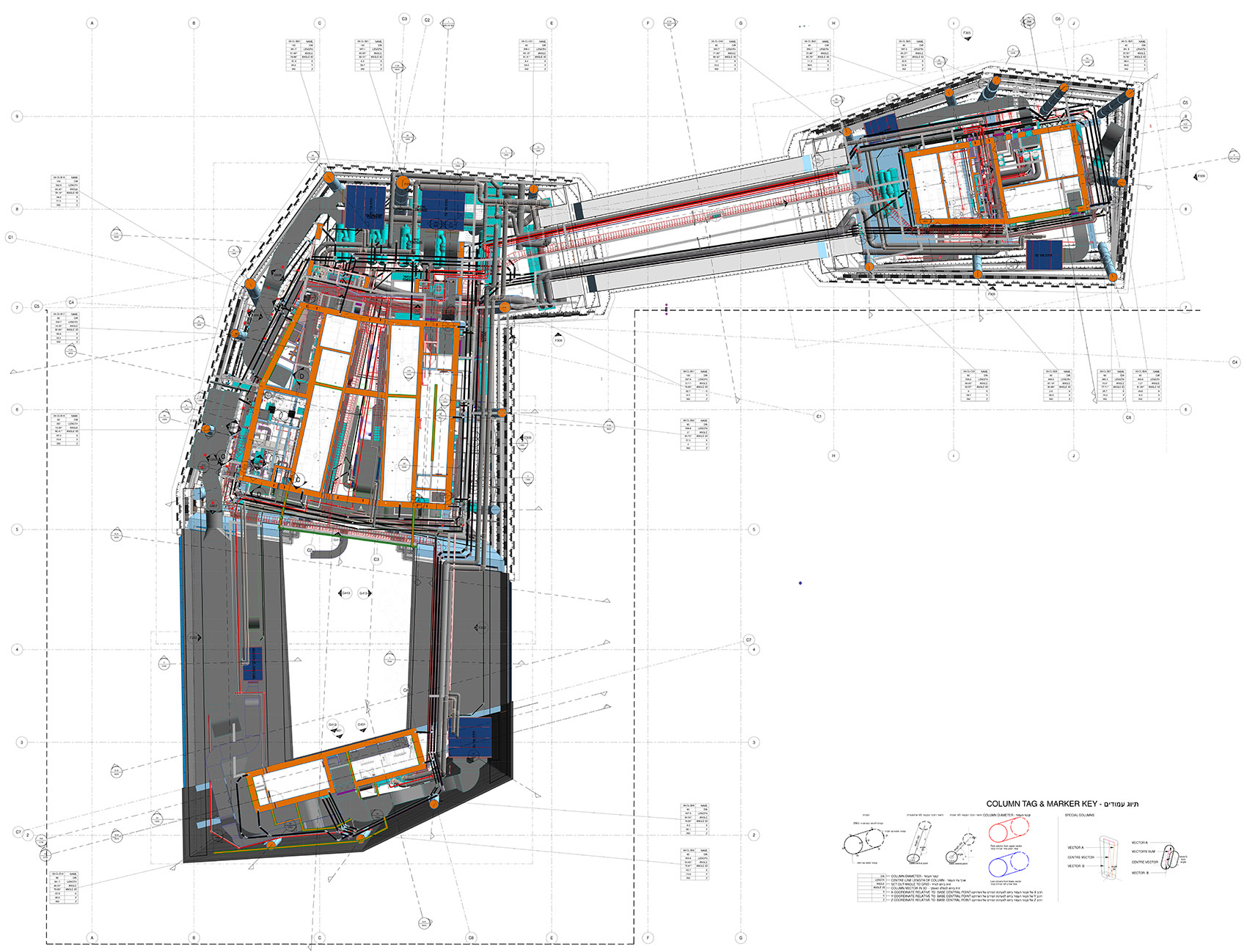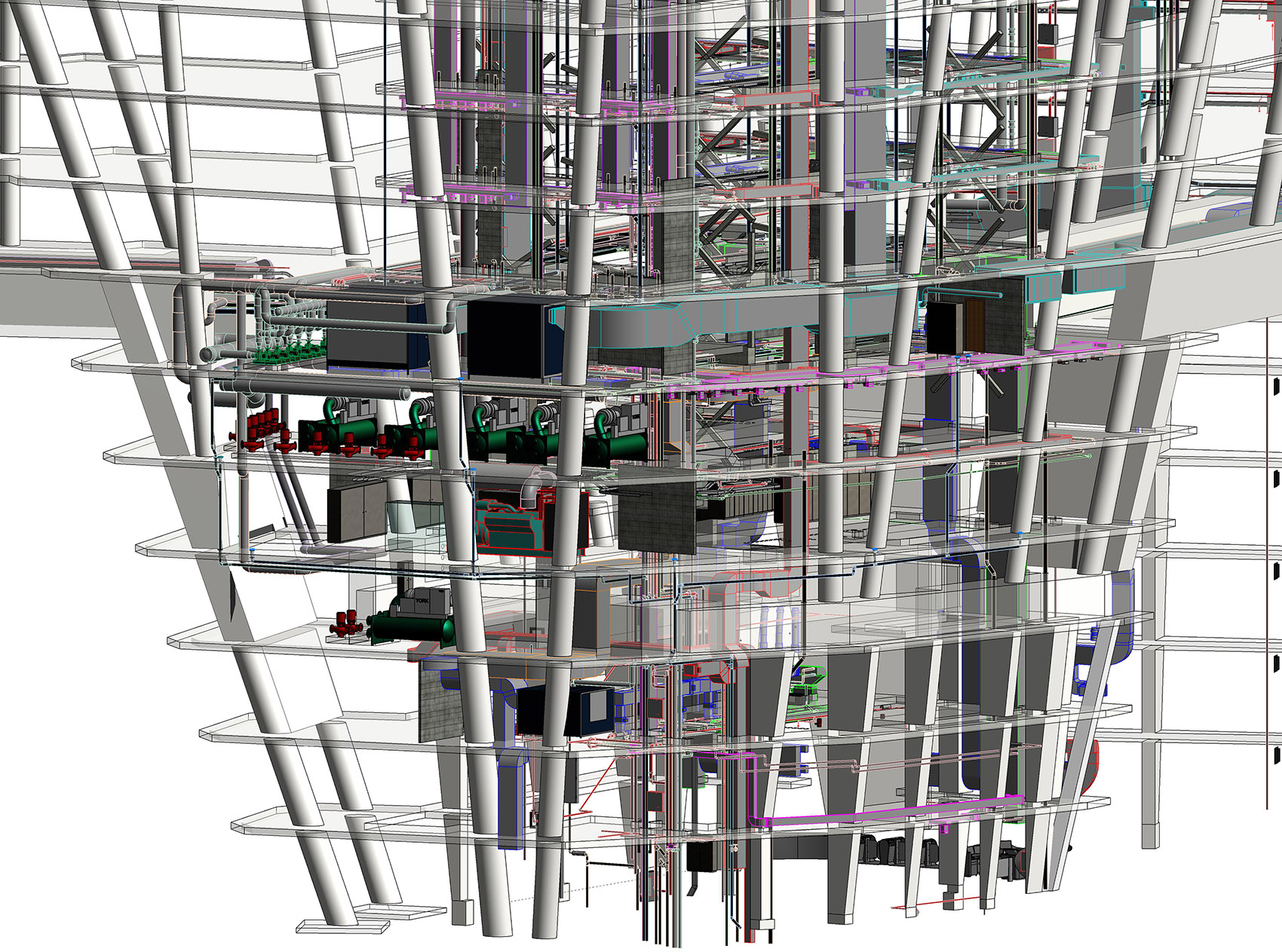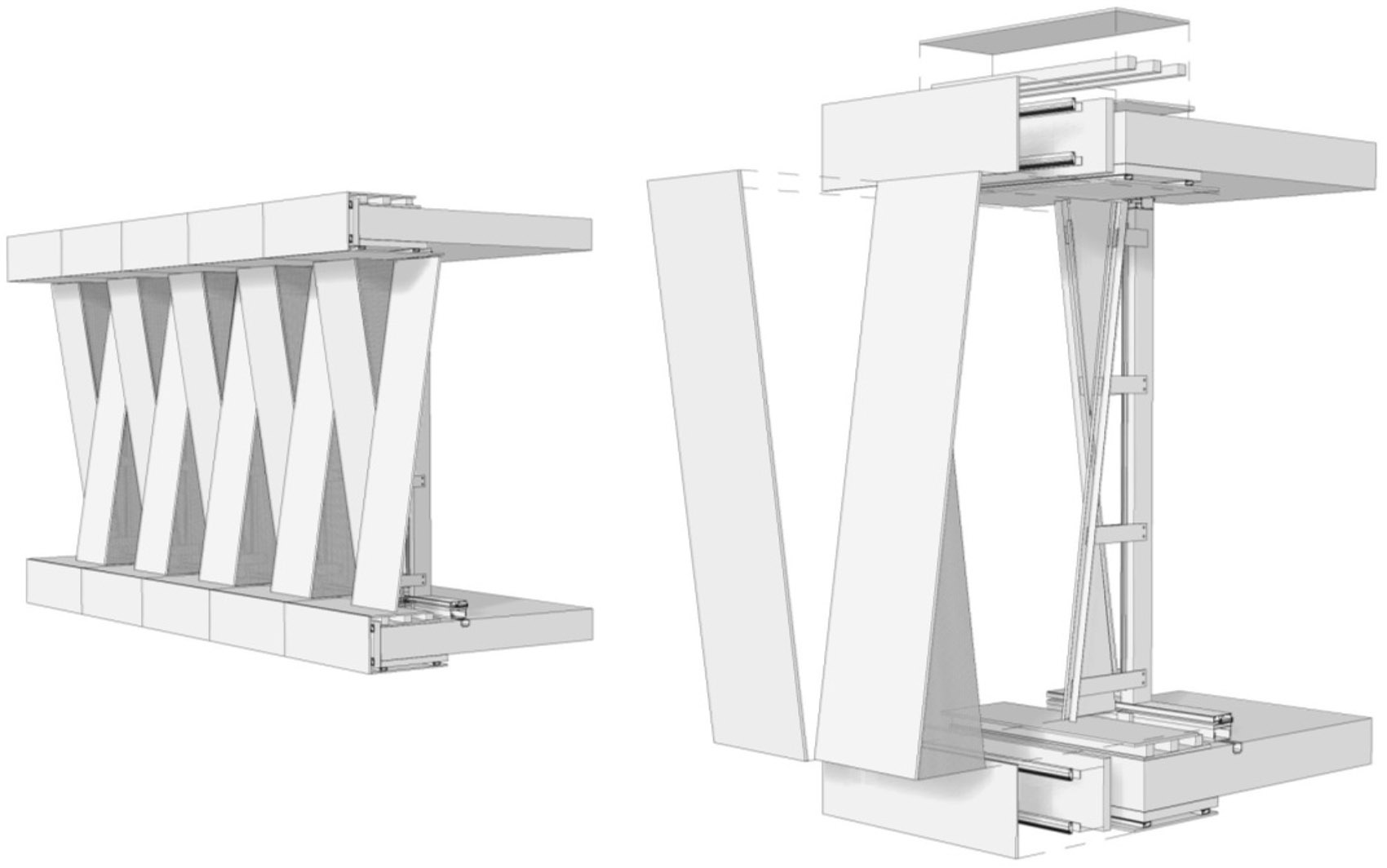ToHA办公楼开发项目的基地面积为1.8公顷,总建筑面积为20万平方米,位于特拉维夫市中心火车站附近,该项目为整个区域带来充足的公共空间。作为两家以色列地区最大的投资开发商Amot和Gav-Yam之间的第一个合资项目,第一阶段的28层的塔楼已于近期建成。
The recently completed ToHA office development, is the first phase o f a 200,000m² project that will see the transformation of a rarely-available 1.8hectare site in central Tel Aviv – conveniently located close to the city’s largest train station – into two office towers situated within a generous public landscape. It is the first joint venture project between Amot and Gav-Yam, two of the largest investment and development companies in Israel and the surrounding region.
▼项目概览,overview ©Asa Bruno
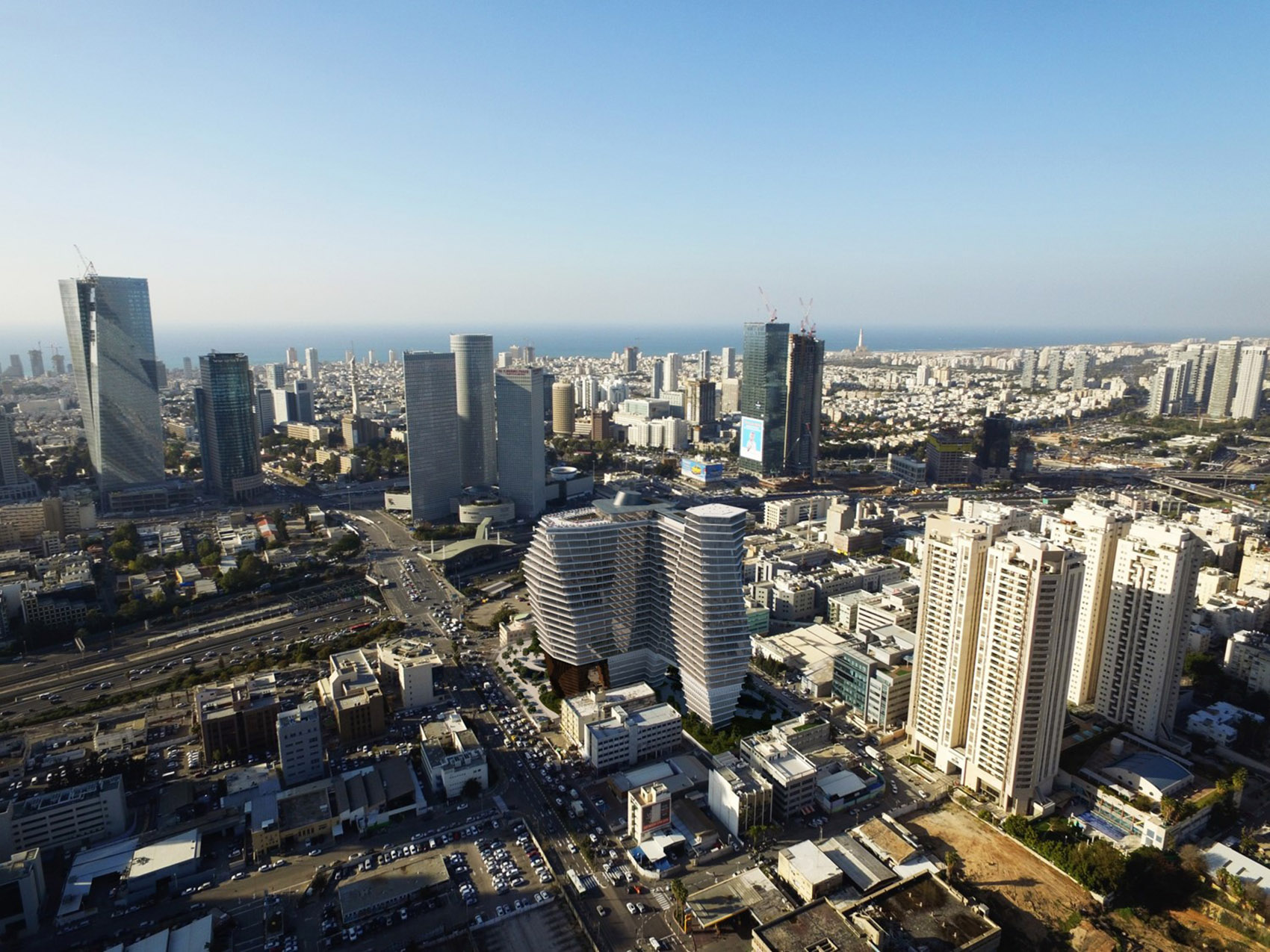
▼项目外观,exterior view of the project ©Fernando Alda

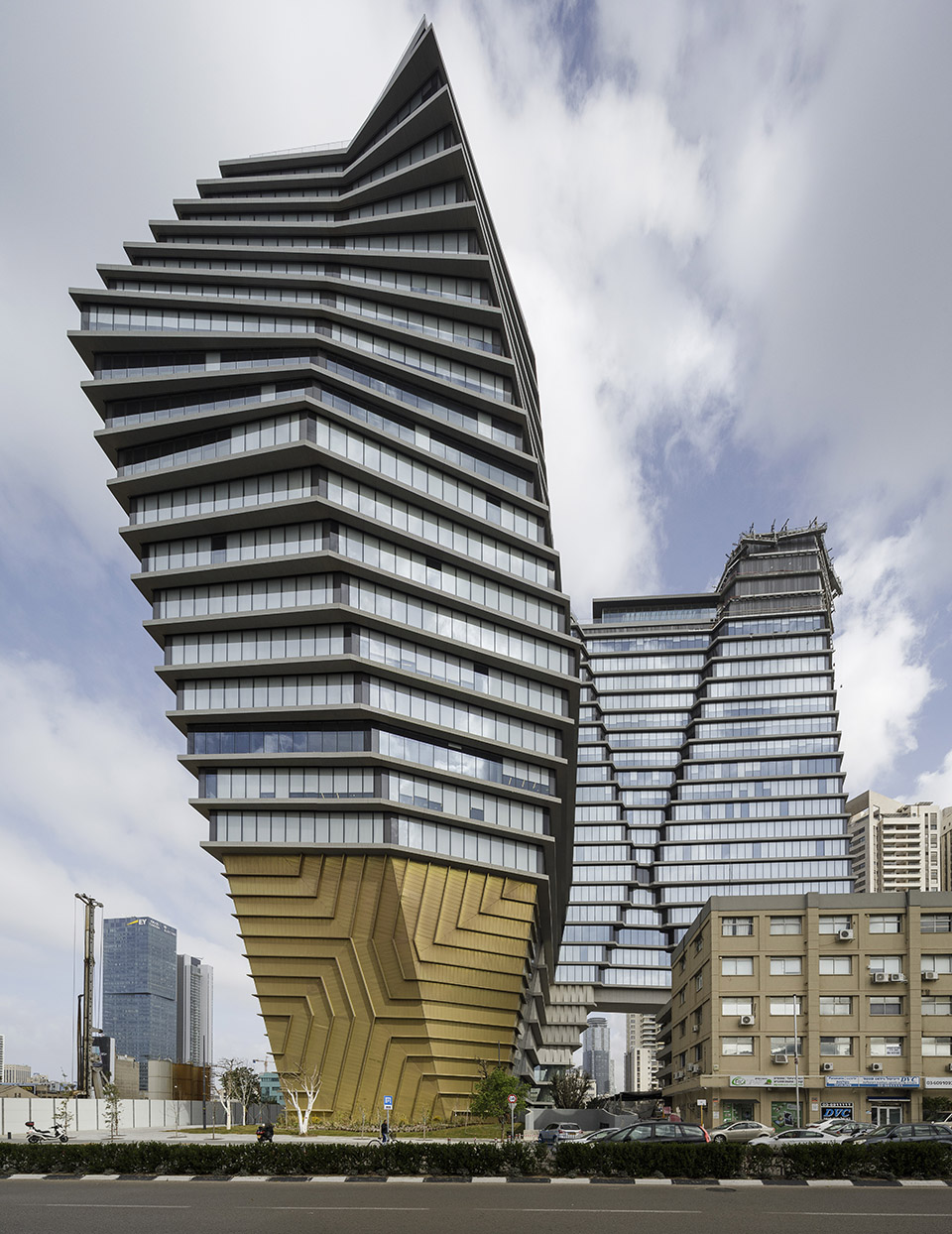
两座塔楼(分别为28层和70层)根据场地特定需求量身打造,完美融入周围环境。阶梯立面的设计在满足遮阳需求的同时,让自然光线可以照进宽敞空间中的每一个角落。两座建筑由细长的核心筒支撑,从地面生长起来,留下充足的地面空间做景观绿化,减少了大体量建筑对地面人群视觉上的压迫。这种舒适的交通体验在其他类似的大规模开发项目中是十分少见的。
The forms of the two towers (28 and 70 storeys respectively) are sculpted to complement the demands of the various site-specific constraints and local context. The individual volumes are articulated as a stepped facade arrangement, maximising solar shading, while maintaining access to natural light for every desk within the generous floors. The two buildings are elevated upon slim core structures (‘the legs’) within a densely planted landscape, in order to minimise the volumetric and visual impact at ground level, and promote a more comfortable and spacious circulation experience than is usually possible in similarly large developments.
▼建筑由细长的核心筒支撑,the buildings are elevated upon slim core structures ©Fernando Alda
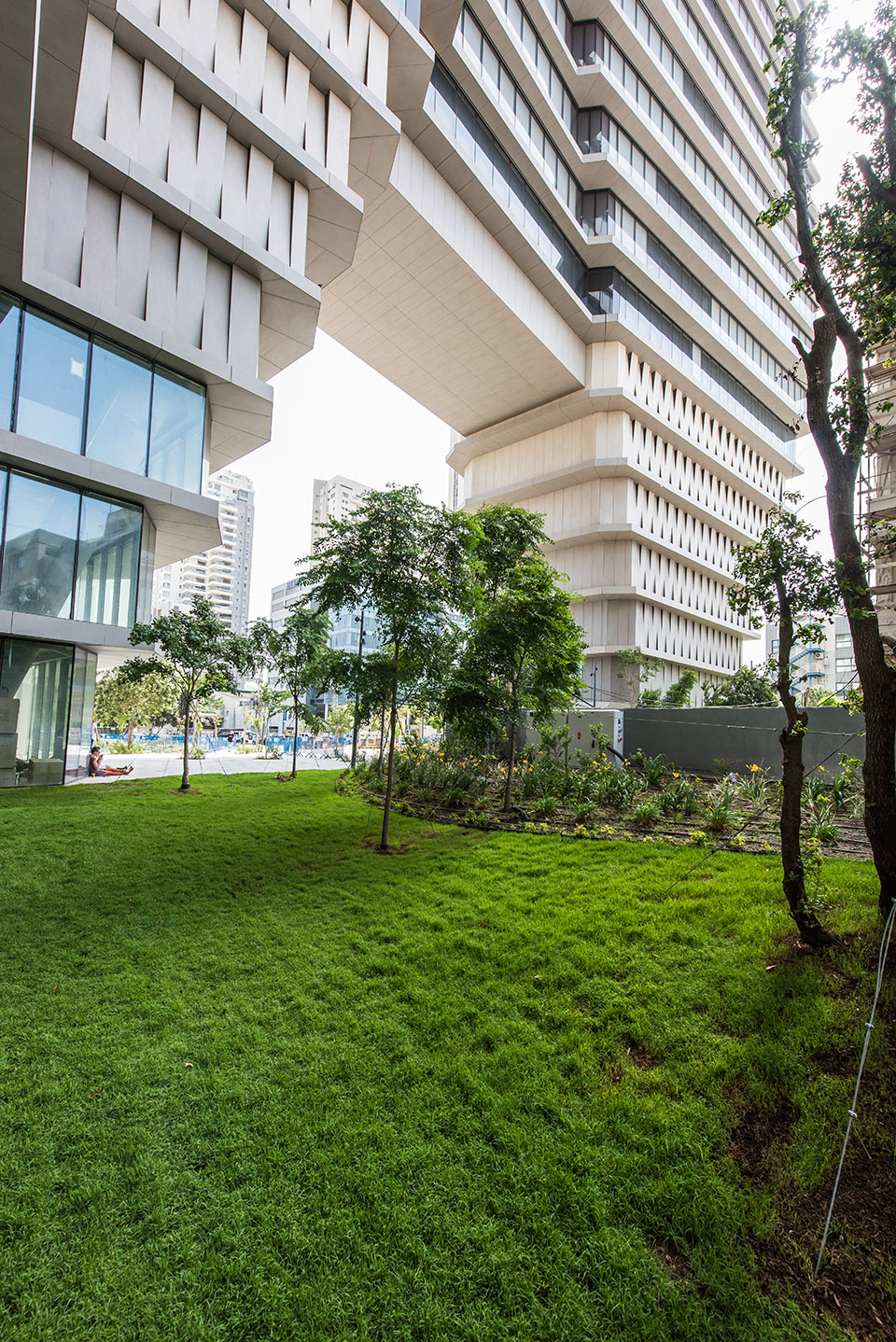
▼充足的景观绿化,a densely planted landscape ©Asa Bruno
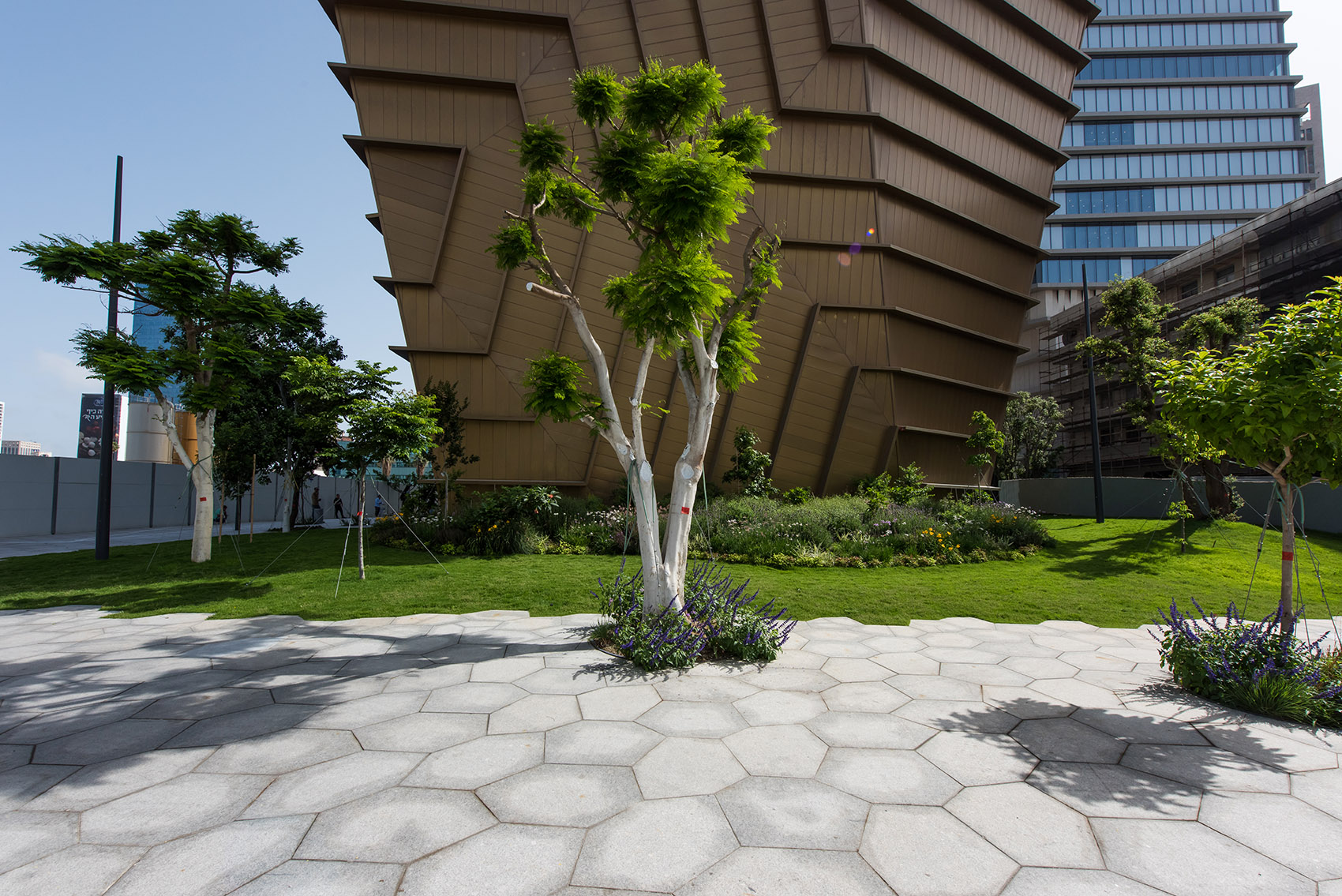
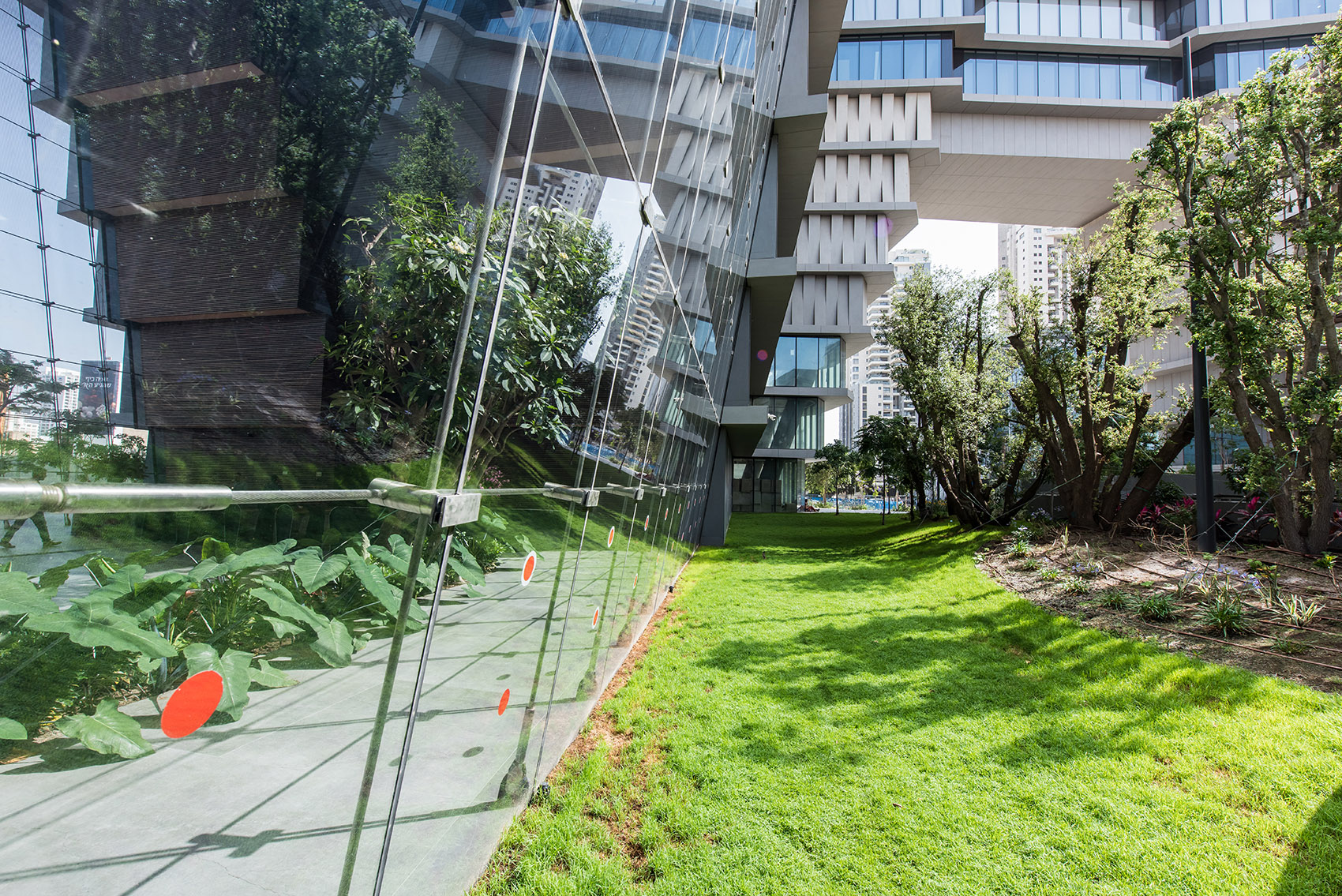
▼阶梯立面,a stepped facade ©Asa Bruno
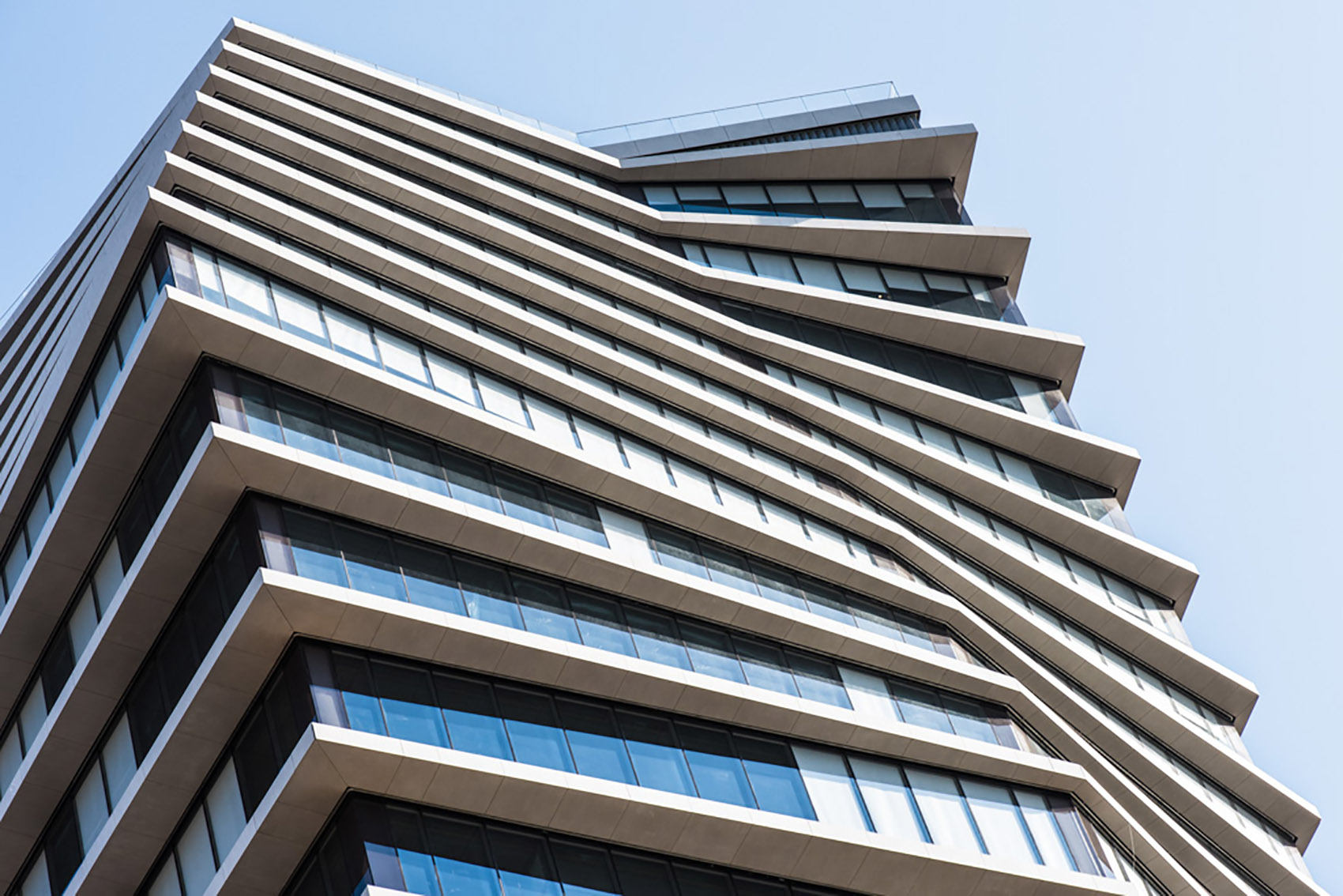

▼满足遮阳需求的同时,让自然光线照进每一个角落,maximising solar shading, while maintaining access to natural light for every desk within the generous floors ©Asa Bruno
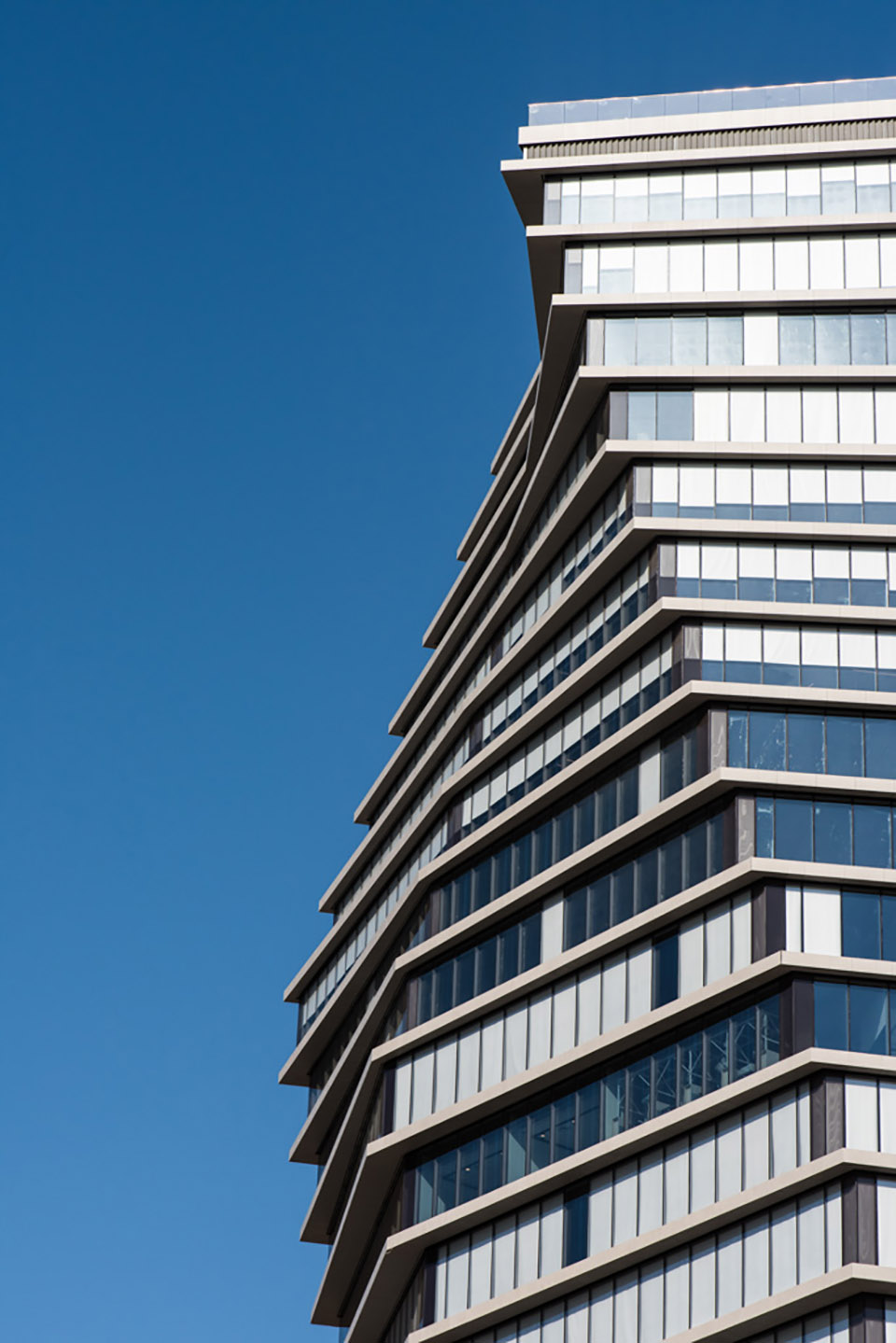
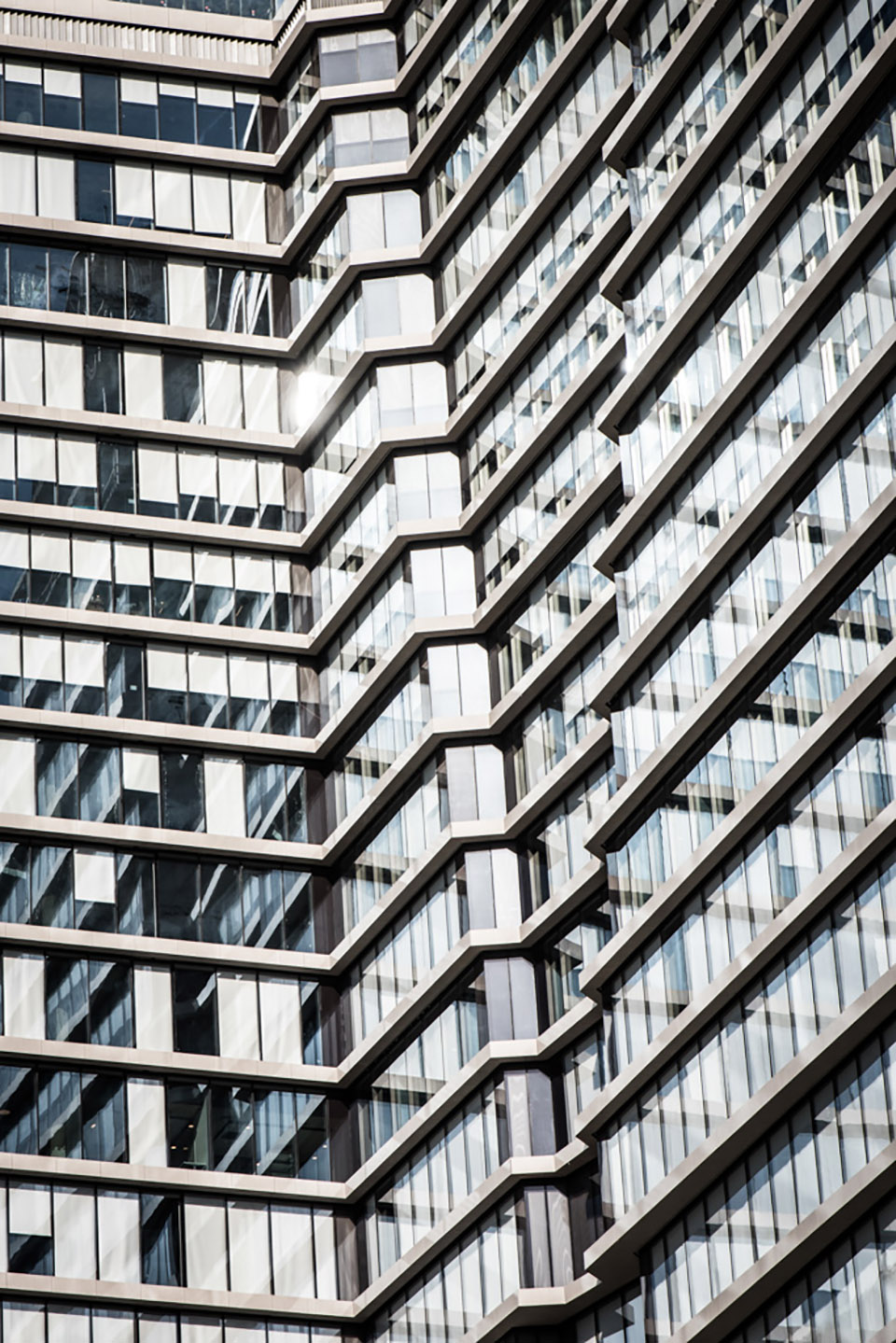
项目的第一阶段为一栋28层高的大楼,沿着场地的南部和东部边界而建,面积为5.3万平方米。通过一个30米高的倾斜索网玻璃幕墙立面,进入到七层通高的前厅,室内种满绿植。紧接着是一个100米高的充满雕塑感的中庭,顶部由巨大的天窗覆盖。中庭的阶梯式设计与阶梯外立面相呼应,使天窗引入的自然光线照进各层的各个角落。
The 28 storey 53,000m² Phase 1 building runs along the southern and eastern boundaries of the site, and is entered via a unique 30m-tall leaning cable net facade, leading to a seven-storey-high foyer complete with internally planted trees. Above this, a sculptural atrium crowned by a generous skylight extends over 100m to the roof, stepping to the same rhythm as the articulated external facade, and enabling daylight provision to the deeper areas of each floor.
▼入口外观,exterior view of the entrance ©Fernando Alda
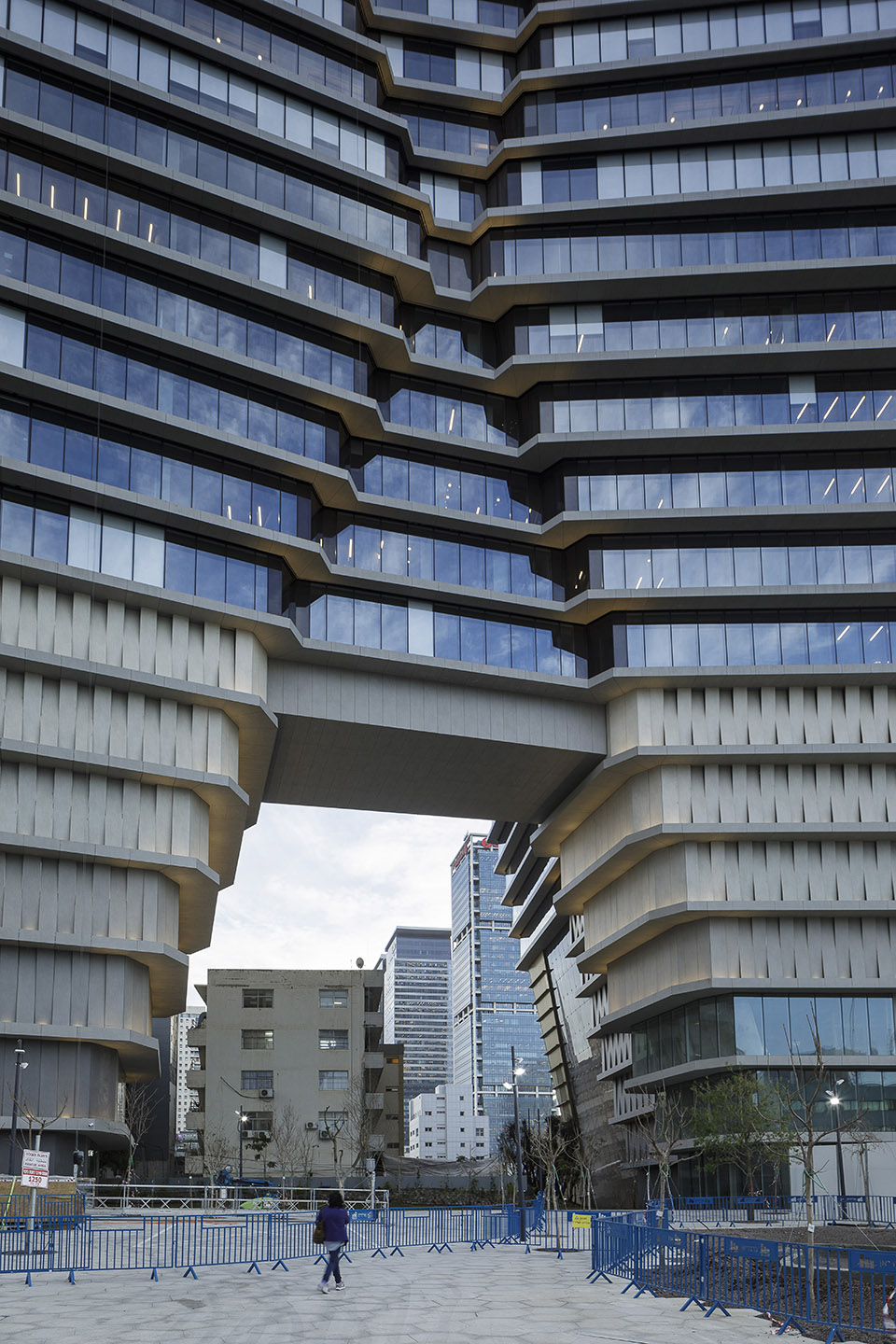
▼入口,the entrance ©Asa Bruno

▼30米高的倾斜索网玻璃幕墙,a 30m-tall leaning cable net facade ©Asa Bruno
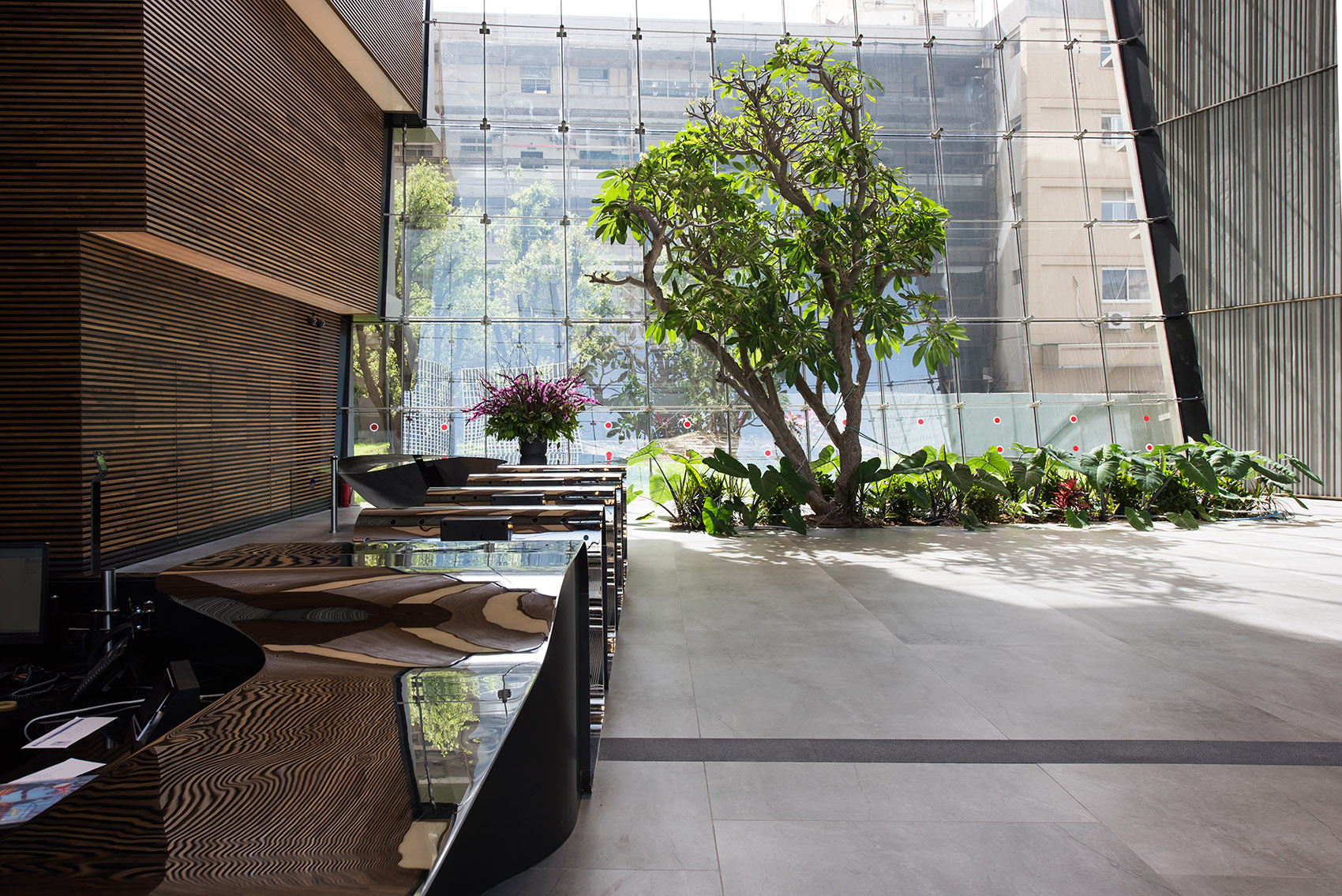
▼七层通高的前厅种满绿植, a seven-storey-high foyer complete with internally planted trees ©Asa Bruno
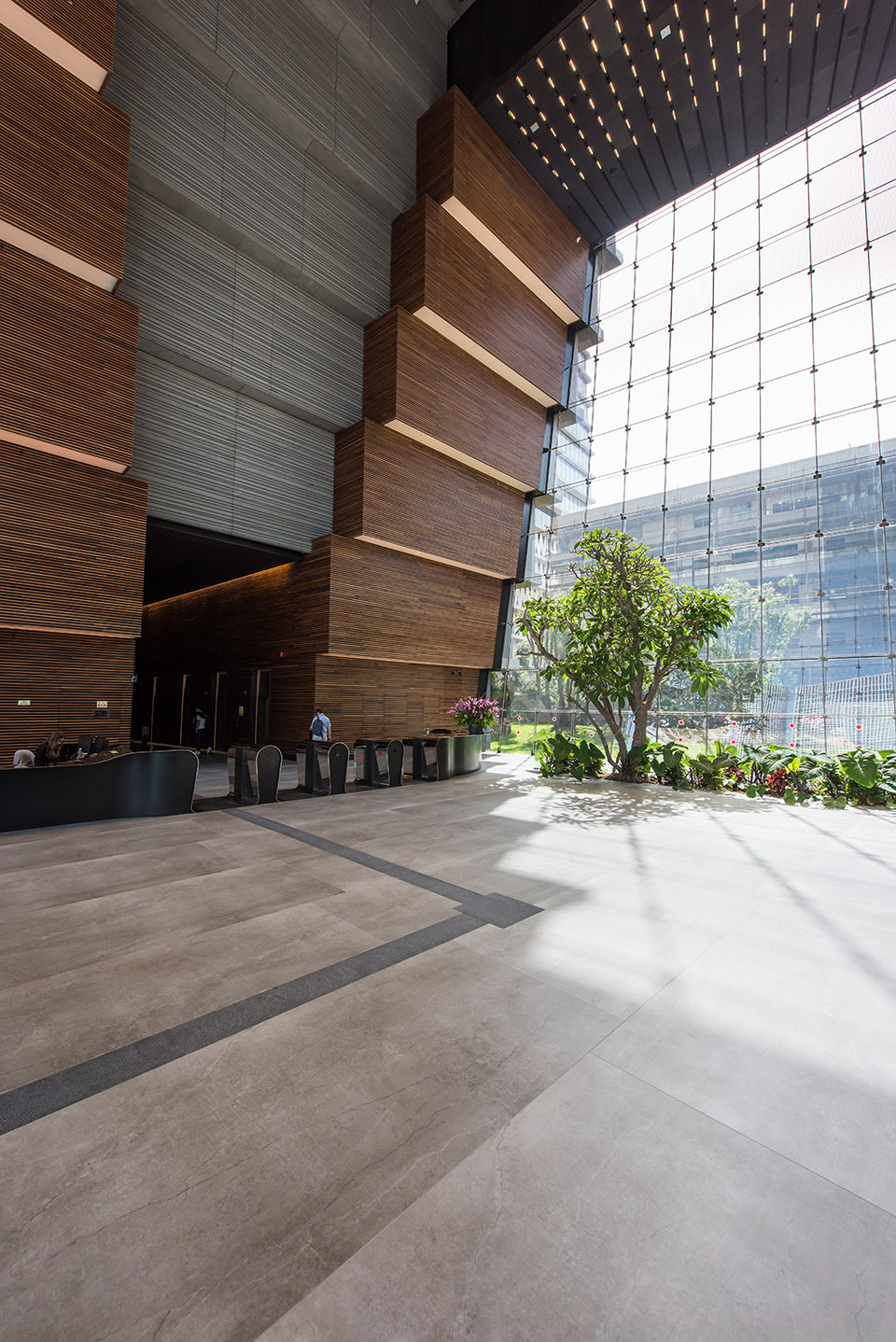
▼充满雕塑感的阶梯式中庭,a sculptural atrium stepping to the same rhythm as the articulated external facade ©Asa Bruno

▼中厅顶部由巨大的天窗覆盖,crowned by a generous skylight extends over 100m to the roof ©Asa Bruno
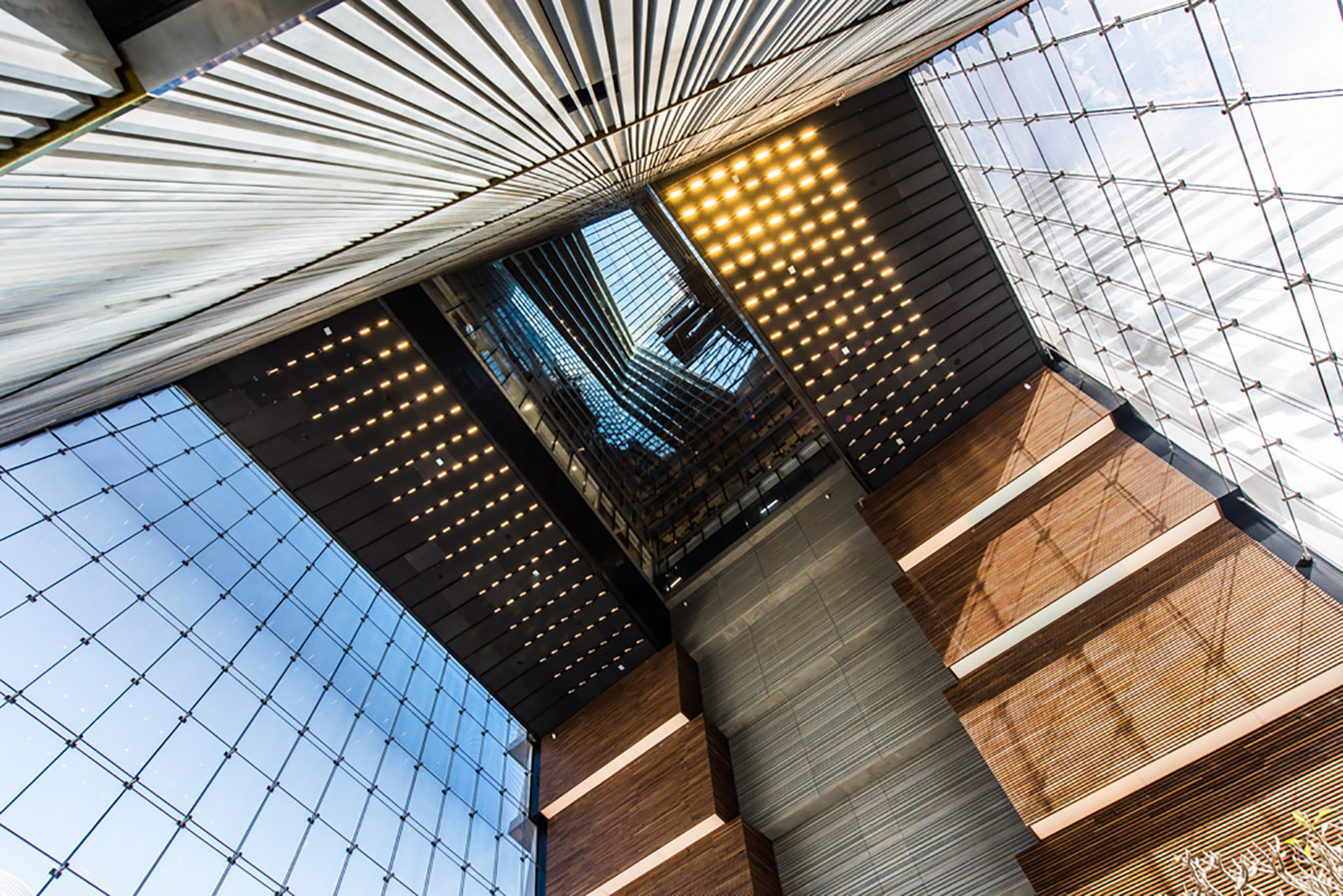
该建筑单层最大面积超过3000平方米,而占地面积仅为1200平方米,这得益于建筑核心筒的支撑。Ron Arad Architects利用这一特点,将建筑的大部分暖通设备置于较低楼层的核心筒区域,为屋顶上省出了更多的公共空间。放置设备的低楼层的外立面由交叉面板覆盖,构成了“X”的形状。这种编织篮状的立面为设备等提供了绝佳的通风条件,并且统一了建筑低楼层的整体风格。屋顶有两个大露台,分别朝向北侧和南侧,最外围一圈是人行通道,厨房设施可满足三个餐厅或酒吧的运营。露台拥有俯视整个特拉维夫市以及眺望地中海的绝佳视野。
▼结构分析图,structure diagram
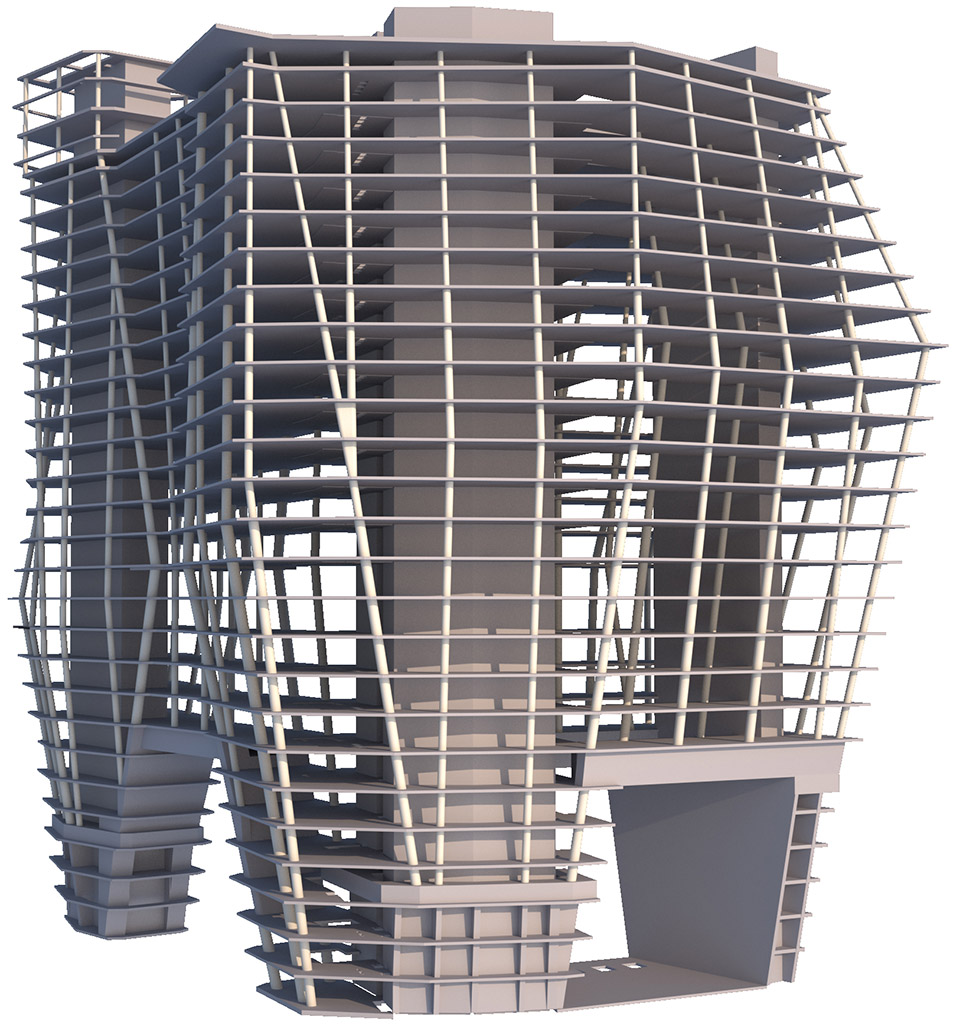
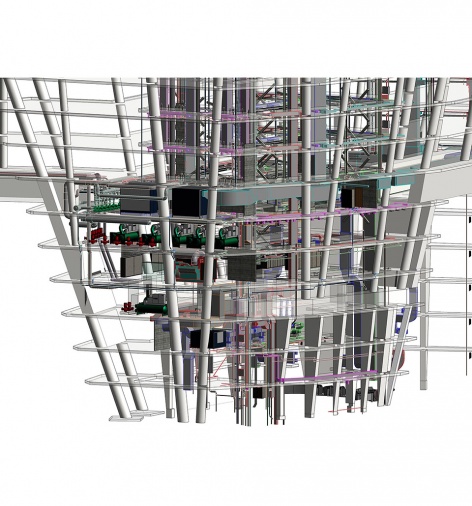
For a building of this scale – with a maximum floor area over 3,000mÇ – it has a very minimal footprint (1,200mÇ). Combined with the necessary scale of the cores, Ron Arad Architects’ innovative premise of locating the majority of the building’s MEP/technical plant within these lower floors, caters to freeing up large portions of the roof from technical equipment, and enabling the creation of an additional public space. The lower technical floors are clad with a permeable facade of cross-mounted panels, creating an ‘X’ pattern. This woven basket-like arrangement allows for optimal ventilation to the technical areas, and provides a coherent aesthetic to the first seven floors of the building. The roof features two large terraces (north and south facing), a perimeter walkway, and facilities for the operation of up to three restaurants/bars, with incredible views across the city of Tel Aviv towards the Mediterranean.
▼低楼层的外立面由交叉面板覆盖,the lower technical floors are clad with a permeable facade of cross-mounted panels ©Fernando Alda
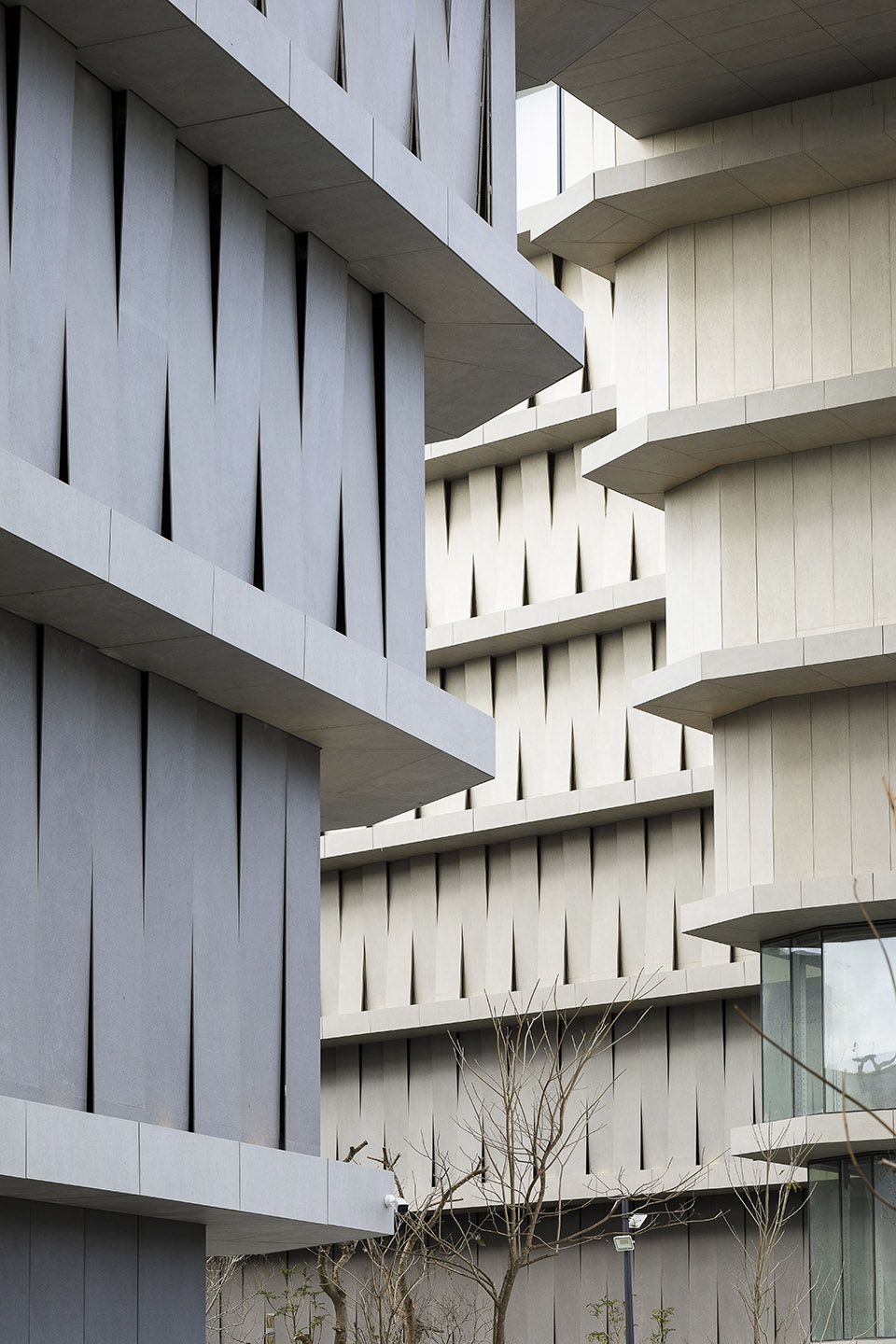
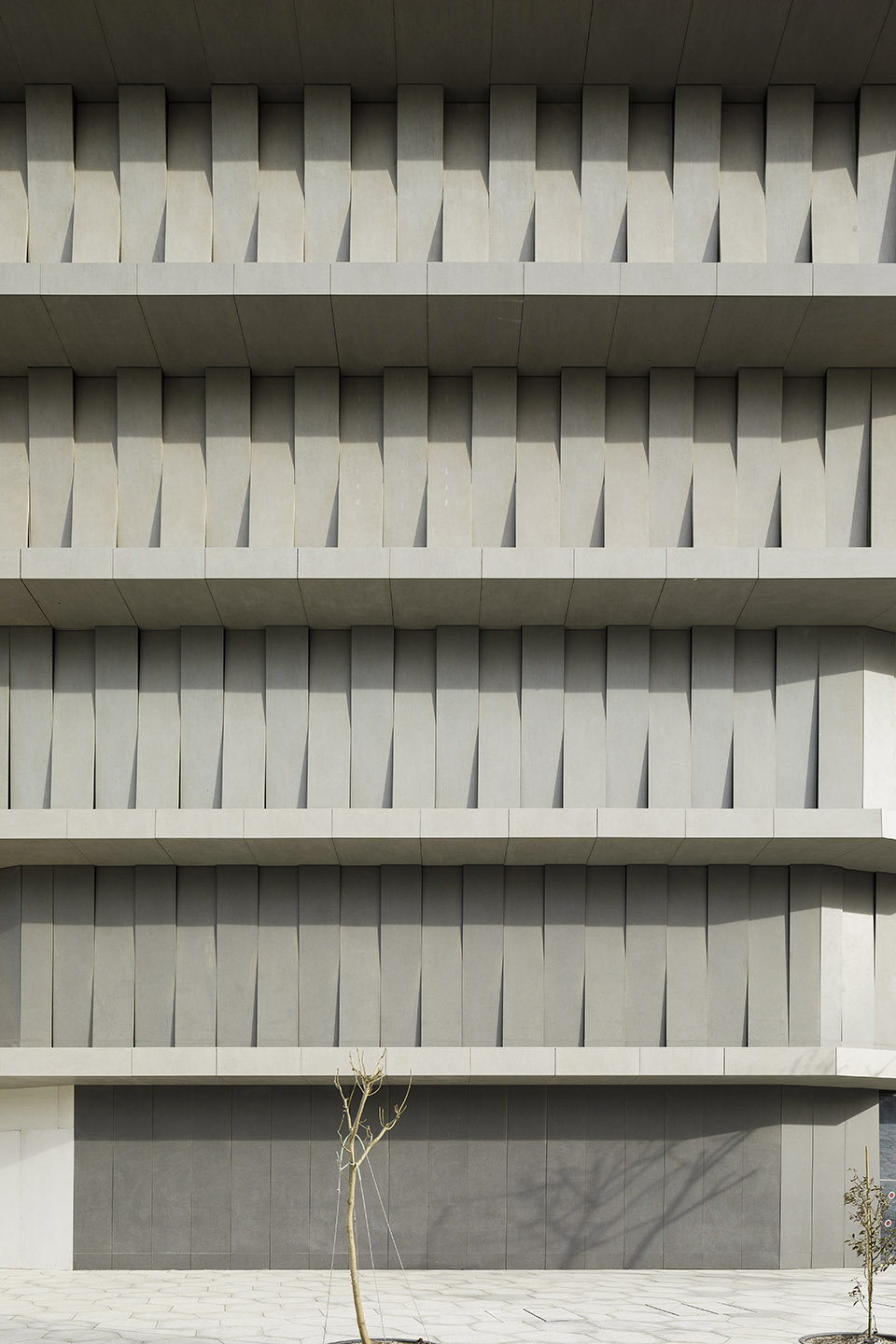
▼立面细部,facade details ©Asa Bruno


该建筑的另一个亮点是室内布局的多样性,这得益于建筑不同寻常的体量及雕塑形态。设计经过不断优化以满足租户的多种需求。设计团队重点解决的问题包括:如何捕捉城市的不同方向的风景(与城市的对话)、如何减少高楼风以及最大限度地引入自然光。此外,租户的需求会随时变化,因此建筑的内部空间需要较强的适应性。每一层的布局虽然有所不同,但都可以被灵活地规划及细分。这种灵活性的实现得益于结构体系的完善:建筑采用预应力混凝土楼板,外围一周增加结构支撑,因此楼板中间不需要添加柱子,为租户的个性化的布局要求提供可能性。楼层面积从1860到3100平方米不等,有些可作为大型开放式空间,有些最多可被分隔成七户小空间。
One of the more noteworthy features of the building is the diversity of its floor layouts, generated by its most pronounced characteristic; the sculptural nature of its unusual volume. This design was developed and optimised over many iterations to satisfy a multitude of considerations. Key reasons included the creation of varying silhouettes on the urban horizon (in response to dialogue with the city), the attenuation of the wind flowing in and around the site, and the maximisation of daylight into deeper areas of the site. In addition, as the needs of contemporary tenants vary and change over time, the building’s interior spaces needed to be inherently adaptable. While no two floors are the same, there is sufficient consistency to enable flexible space planning and varied sub-division possibilities. This flexibility is further augmented by the structural system used; by combining post tensioned slabs, with structural elements along the buildings’ perimeter, the requirement for mid-floor columns is eliminated, freeing tenants to create more personalised layouts. The floors range in area from approximately 1860mÇ to 3100mÇ, and can be arranged as large open plan spaces, or sub-divided for up to seven tenants per floor.
▼建筑外围一周增加结构支撑,保证室内布局的多样性, the diversity of floor layouts is achieved by structural elements along the buildings’ perimeter ©Asa Bruno

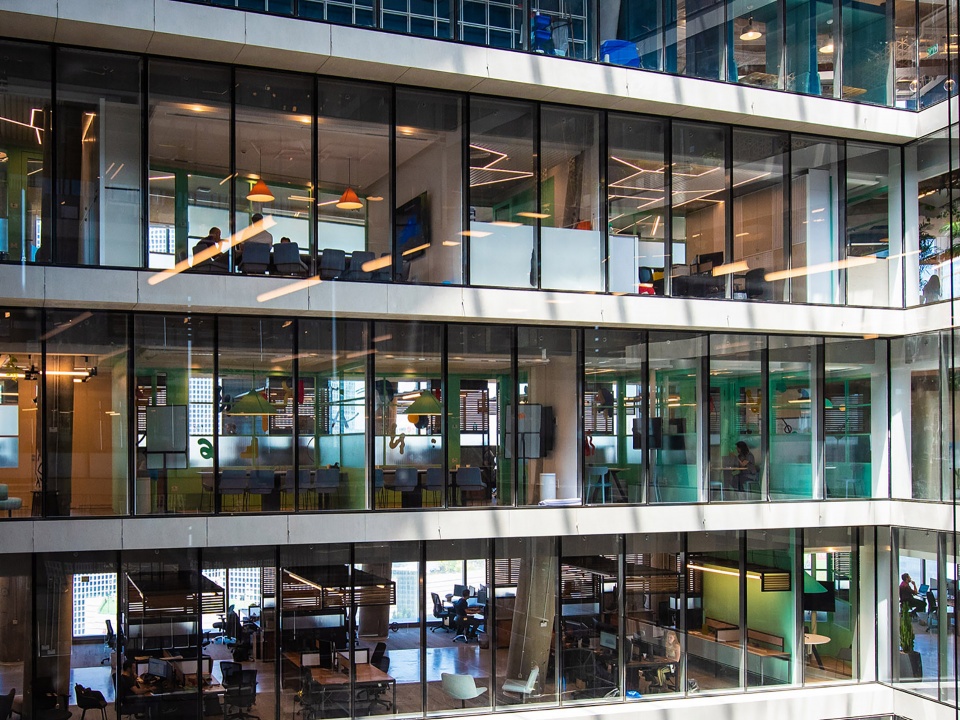
▼电梯间,elevator ©Fernando Alda
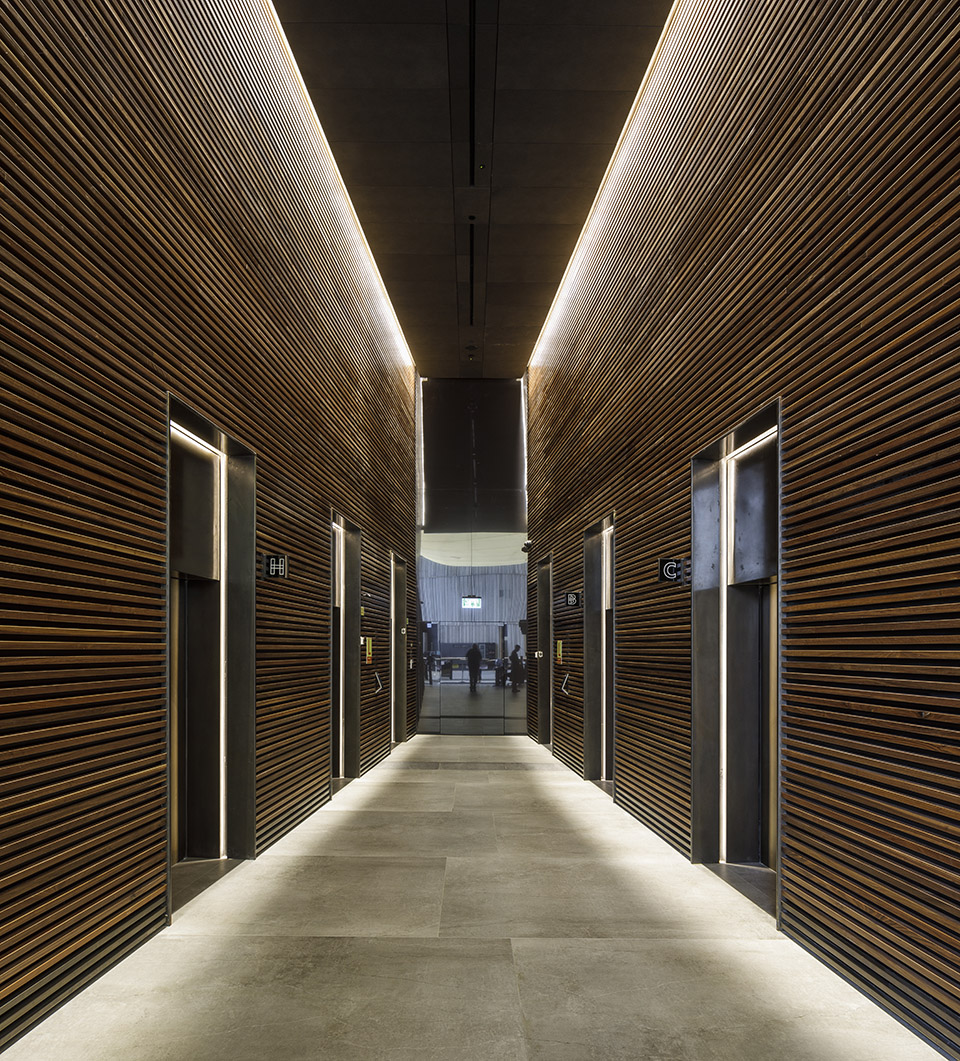
在节能环保方面,项目团队通过大量的调研,决定同时采用传统的被动解决方案以及最为先进的立面智能节能系统。该系统利用高科技,从适应性、连接性、舒适性以及便利性等方面打造了一个优质的工作环境。除此之外,项目团队尽可能地减少了施工过程以及使用过程中建筑对环境的影响,项目最终获得了LEED白金认证。
The building’s environmental approach fuses traditional regional passive solutions, with state-of-the-art, energy saving and intelligent facade systems, and is the result of extensive research and development from inception to completion. It makes significant use of the technological advances affecting working environments, from adaptability and connectivity to comfort and amenities. The project team has also set itself the goal of leading the way in the reduction of the environmental impact large developments bring during construction and throughout their lifetime, and this has been recognised in the building being awarded LEED Platinum Certification.
▼夜景,night view Aluminum ConstructionFernando Alda
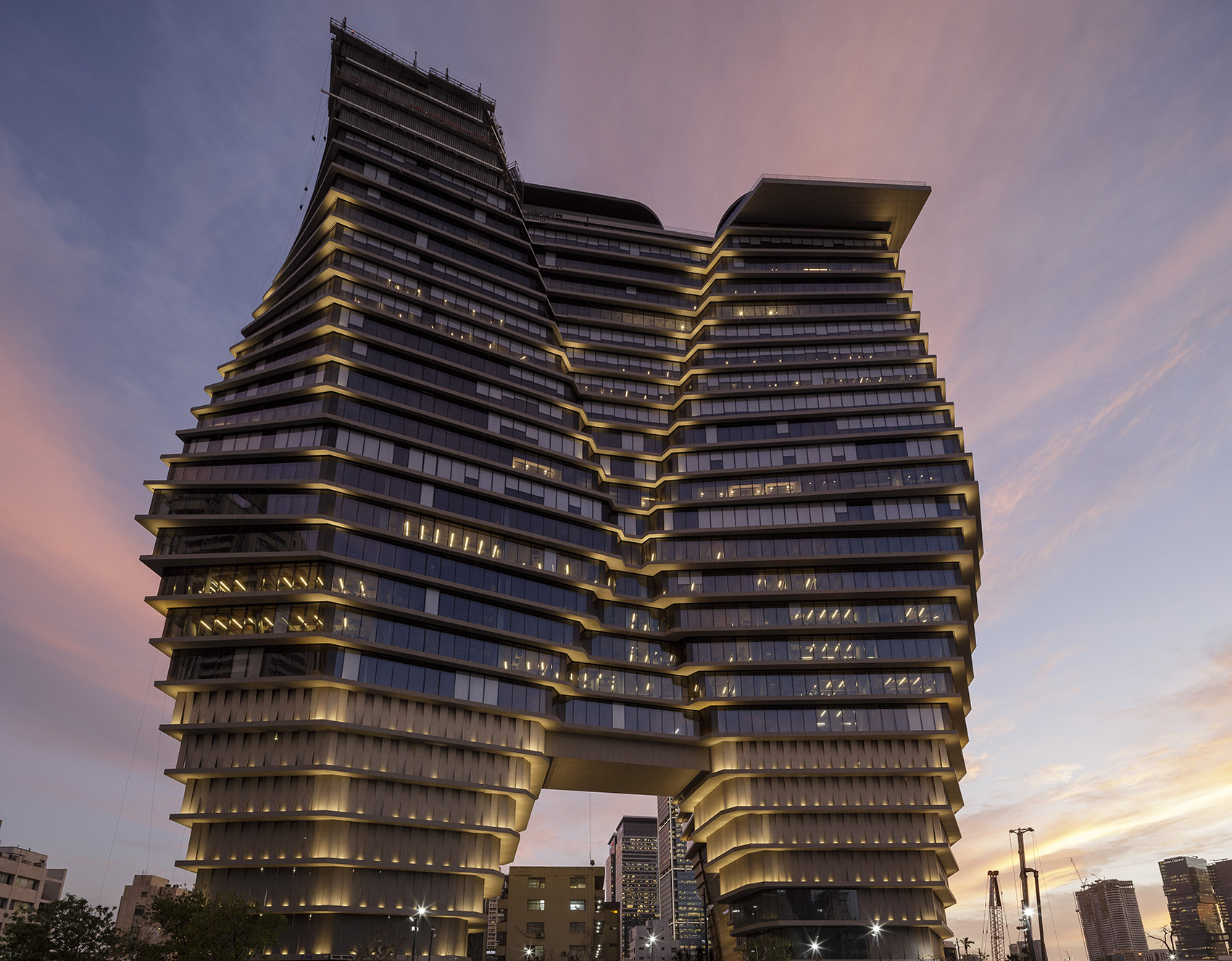

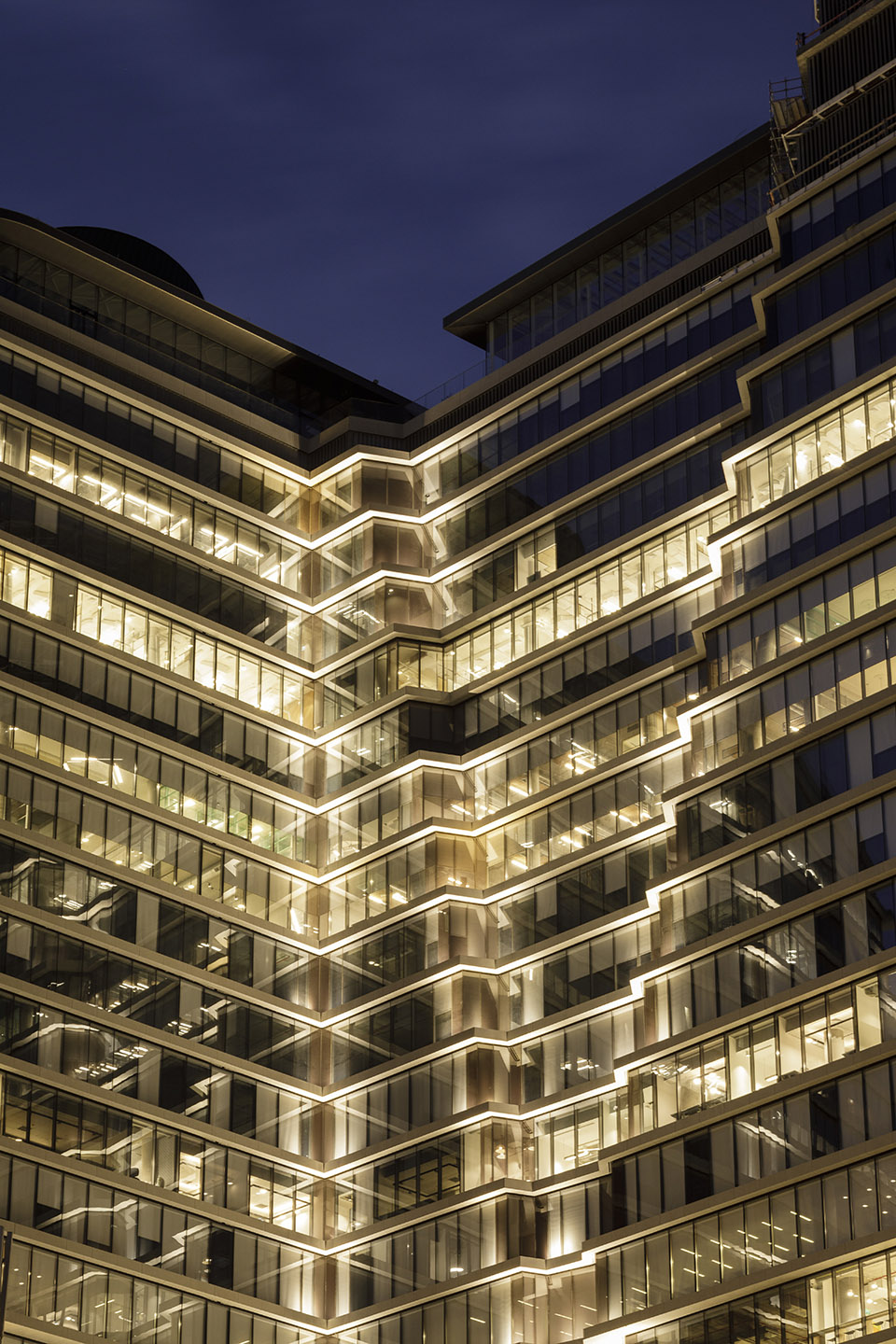
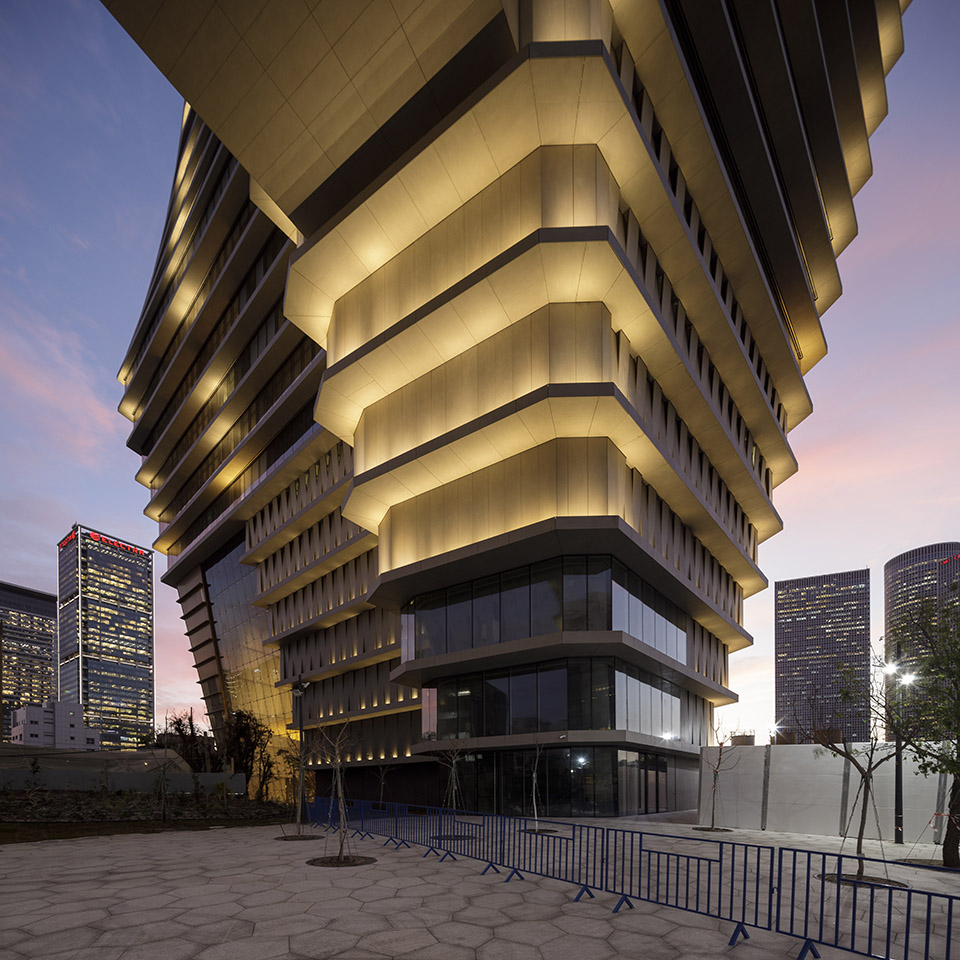
▼效果图,renderings
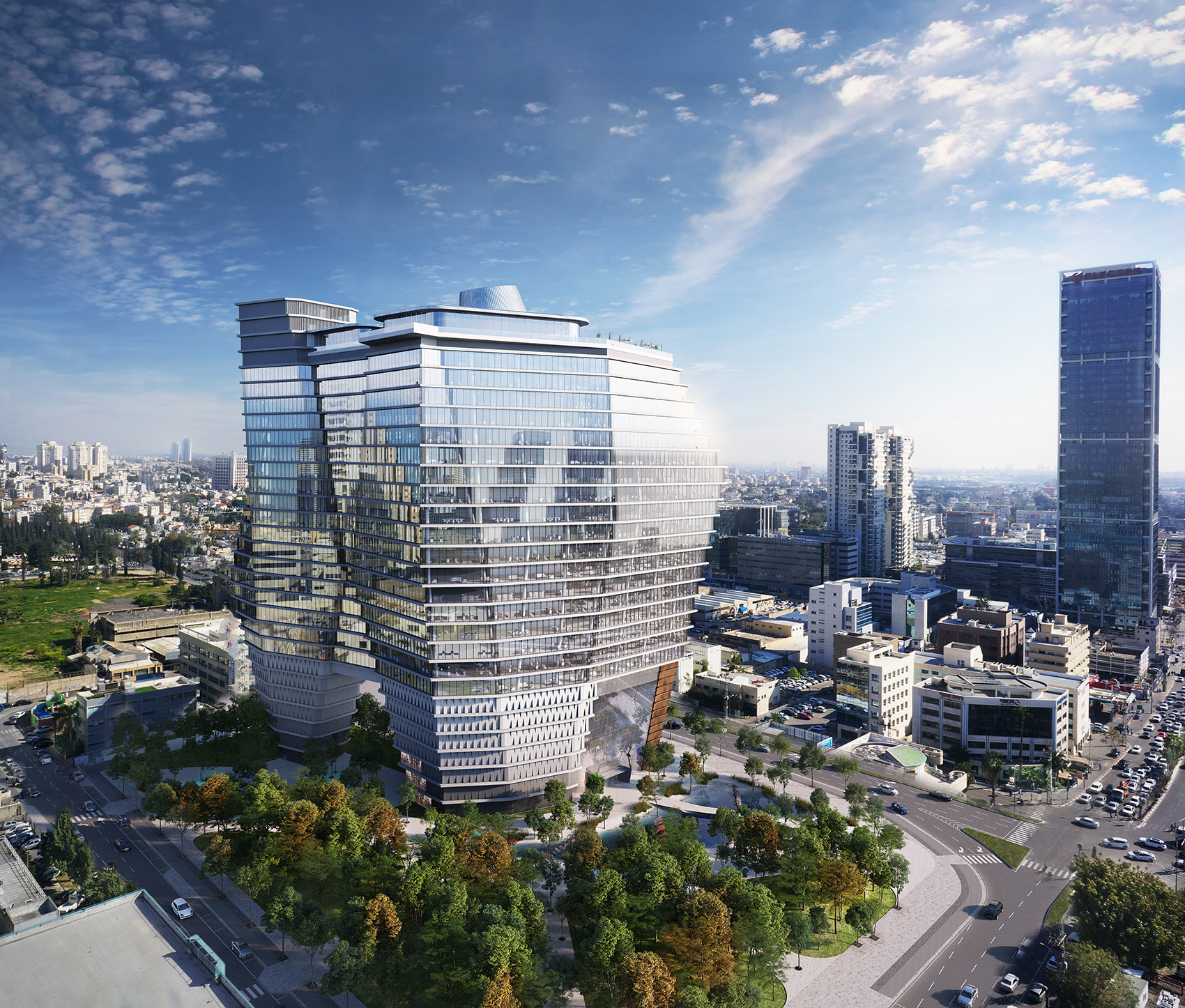
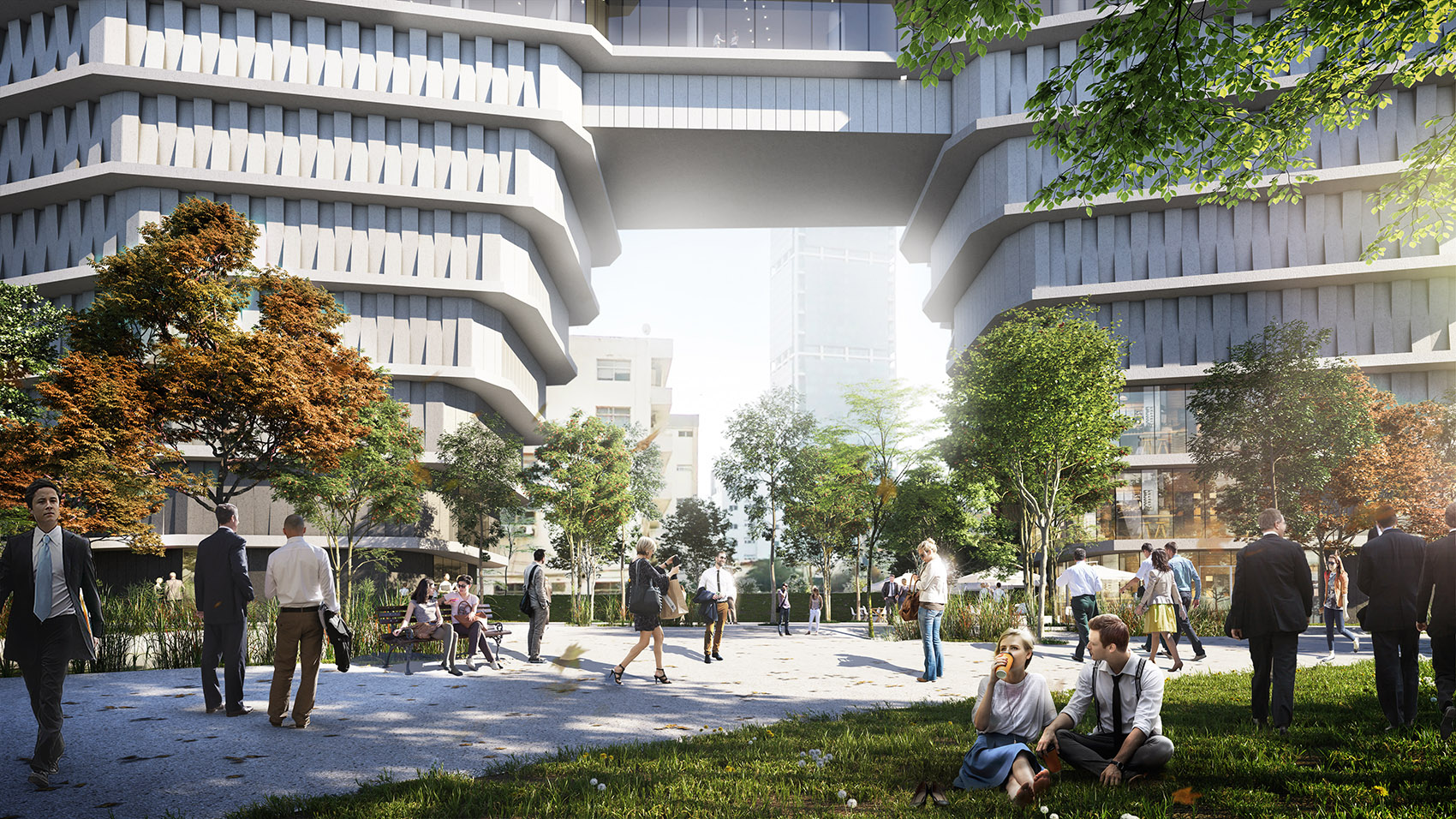
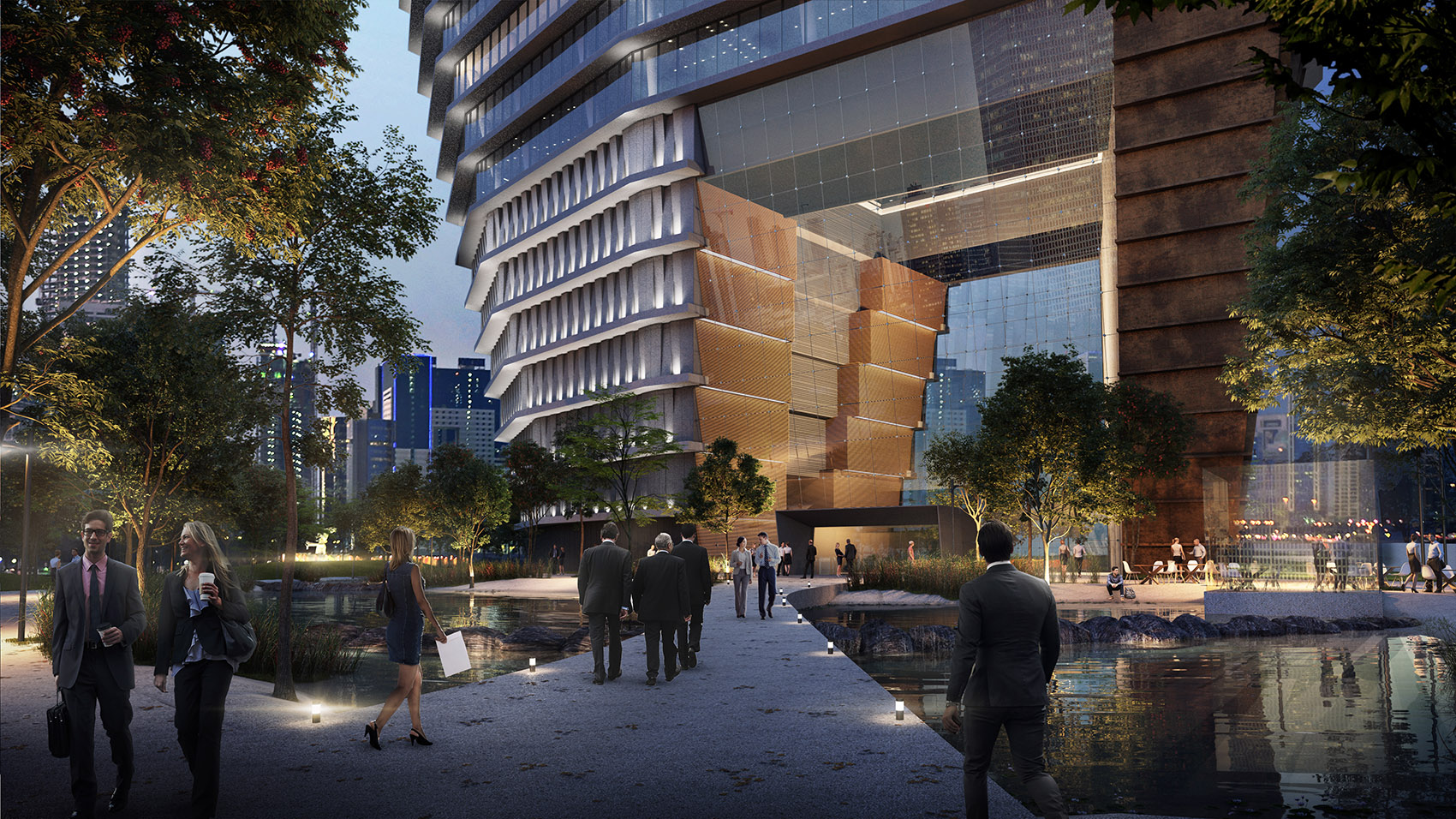
▼概念图,conceptual sketches

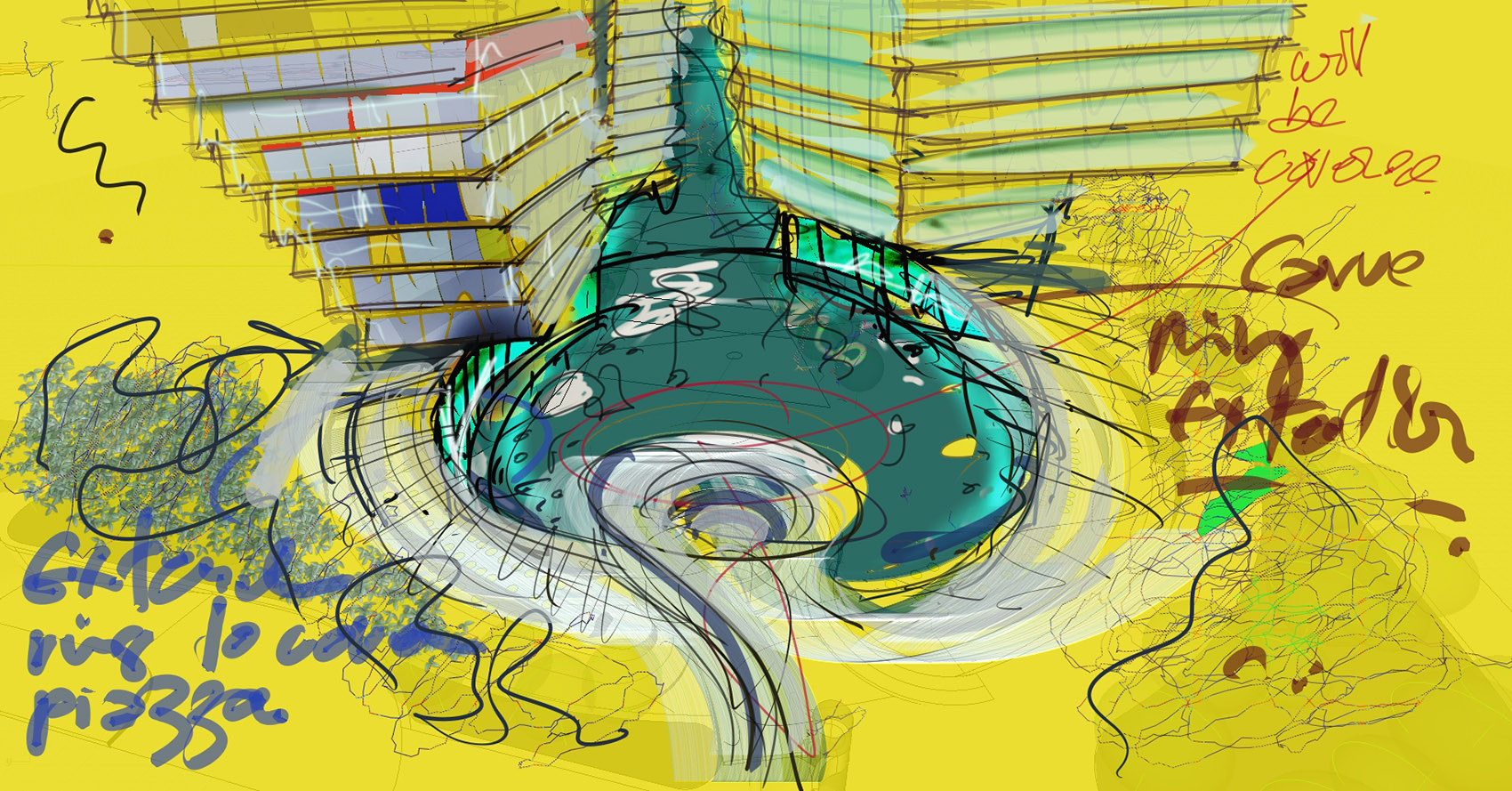

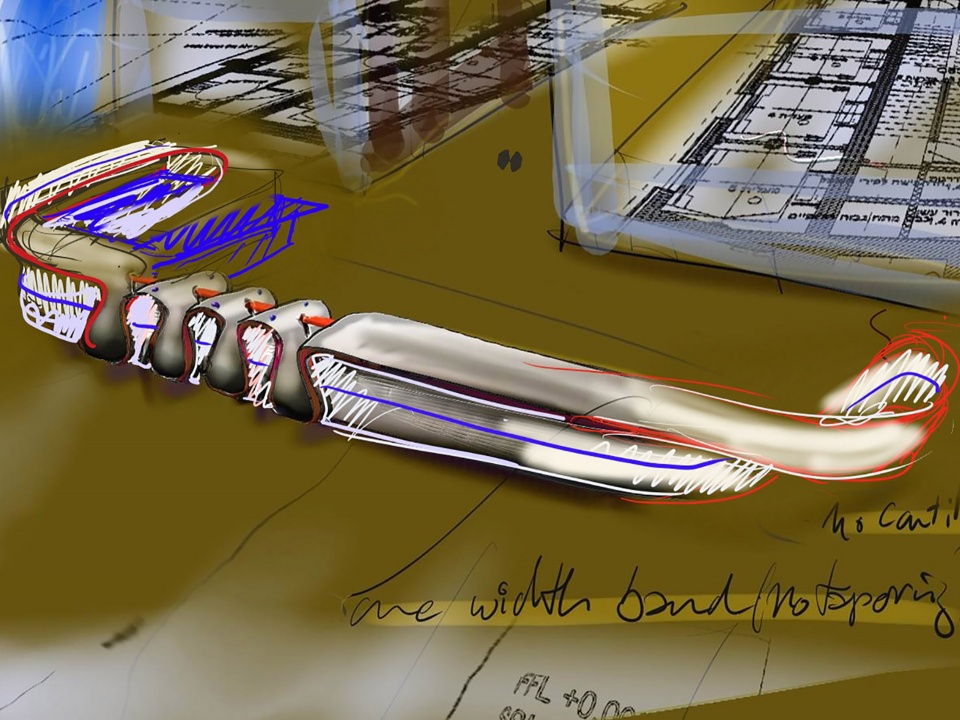
▼日照分析图,Solar Incidence Diagram ©Buro Happold
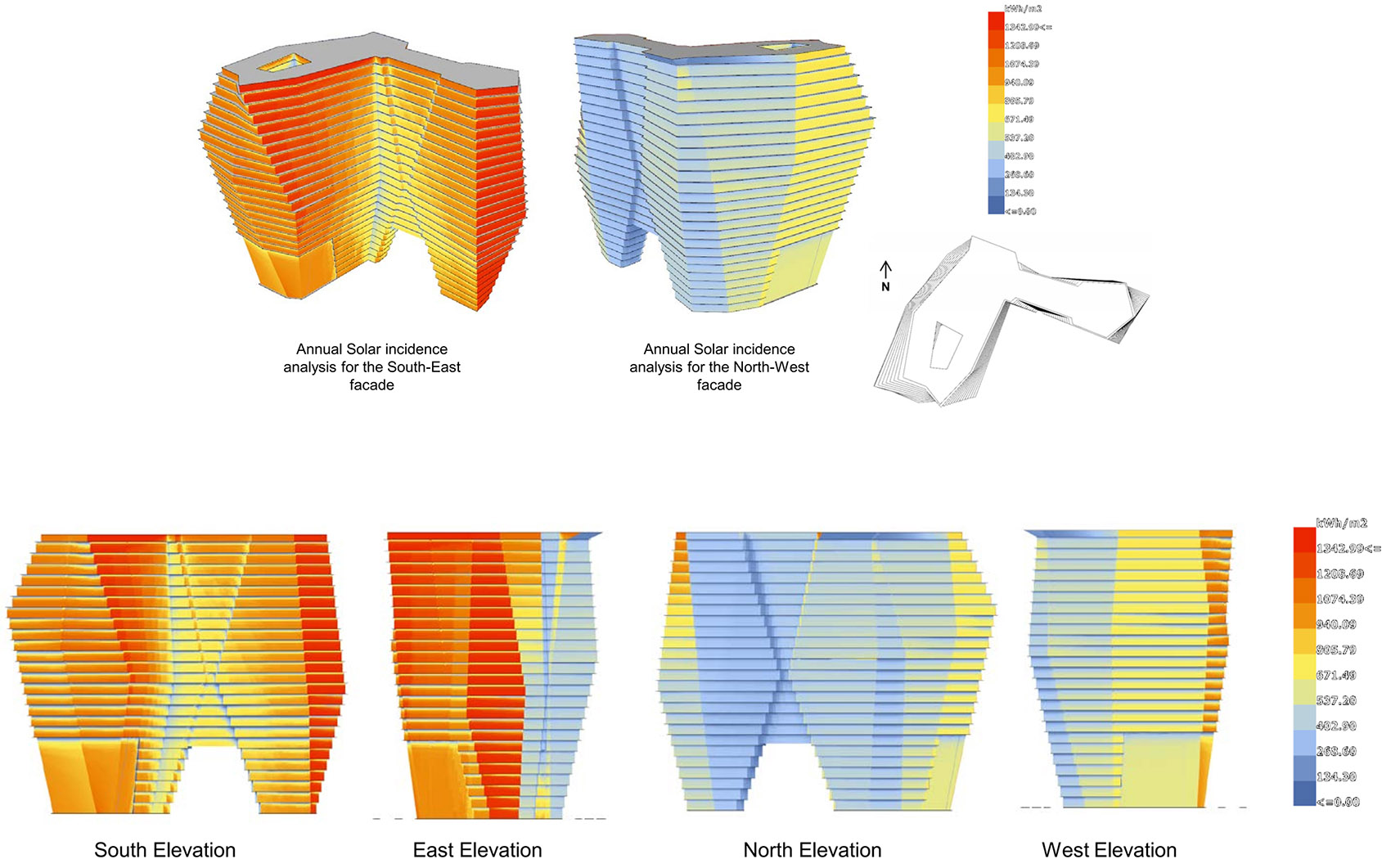
▼Energy Saving Diagram ©Aluminum Construction
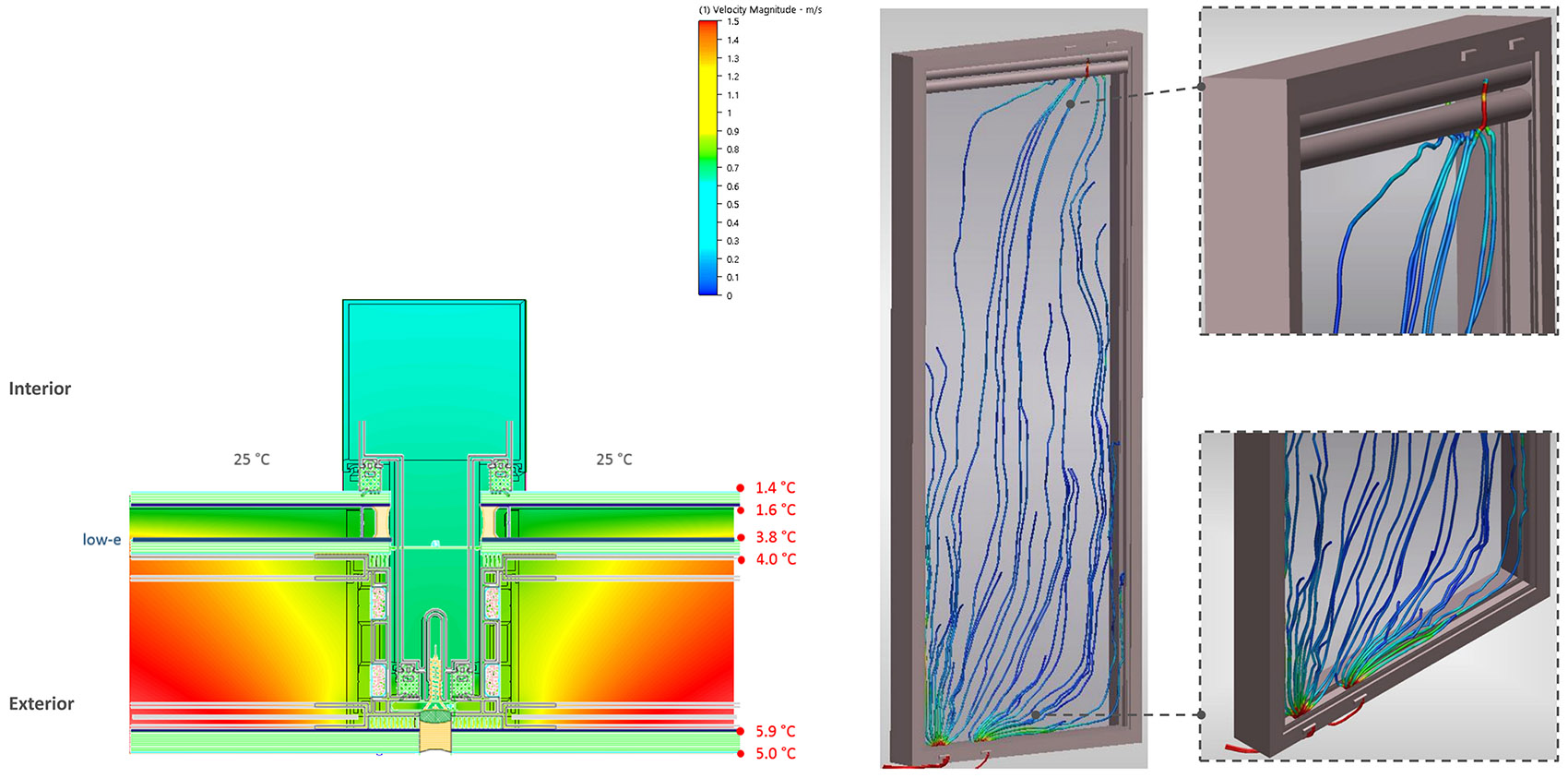
▼日照在不同时间的变化分析图,solar study diagram
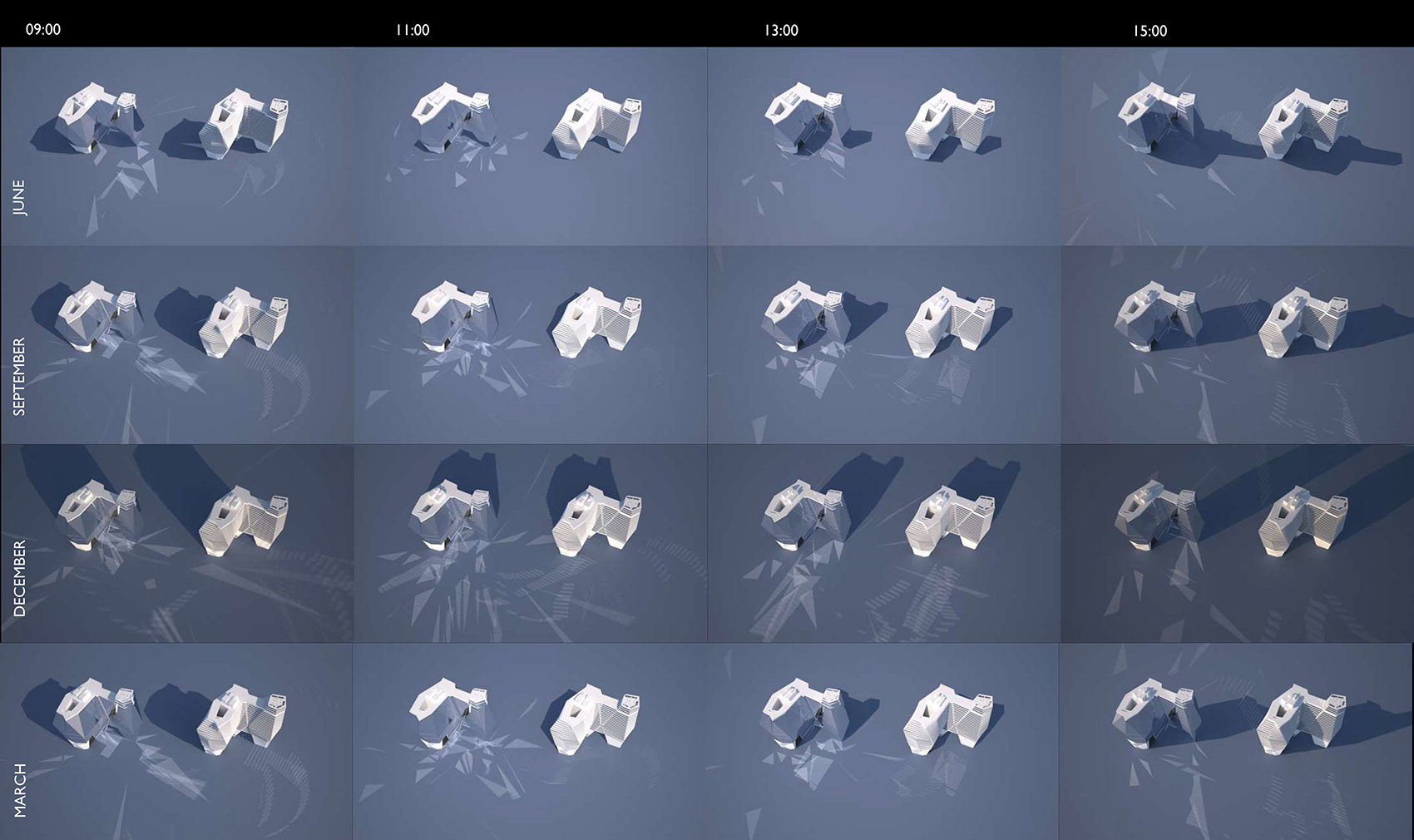
▼首层平面图,first floor plan
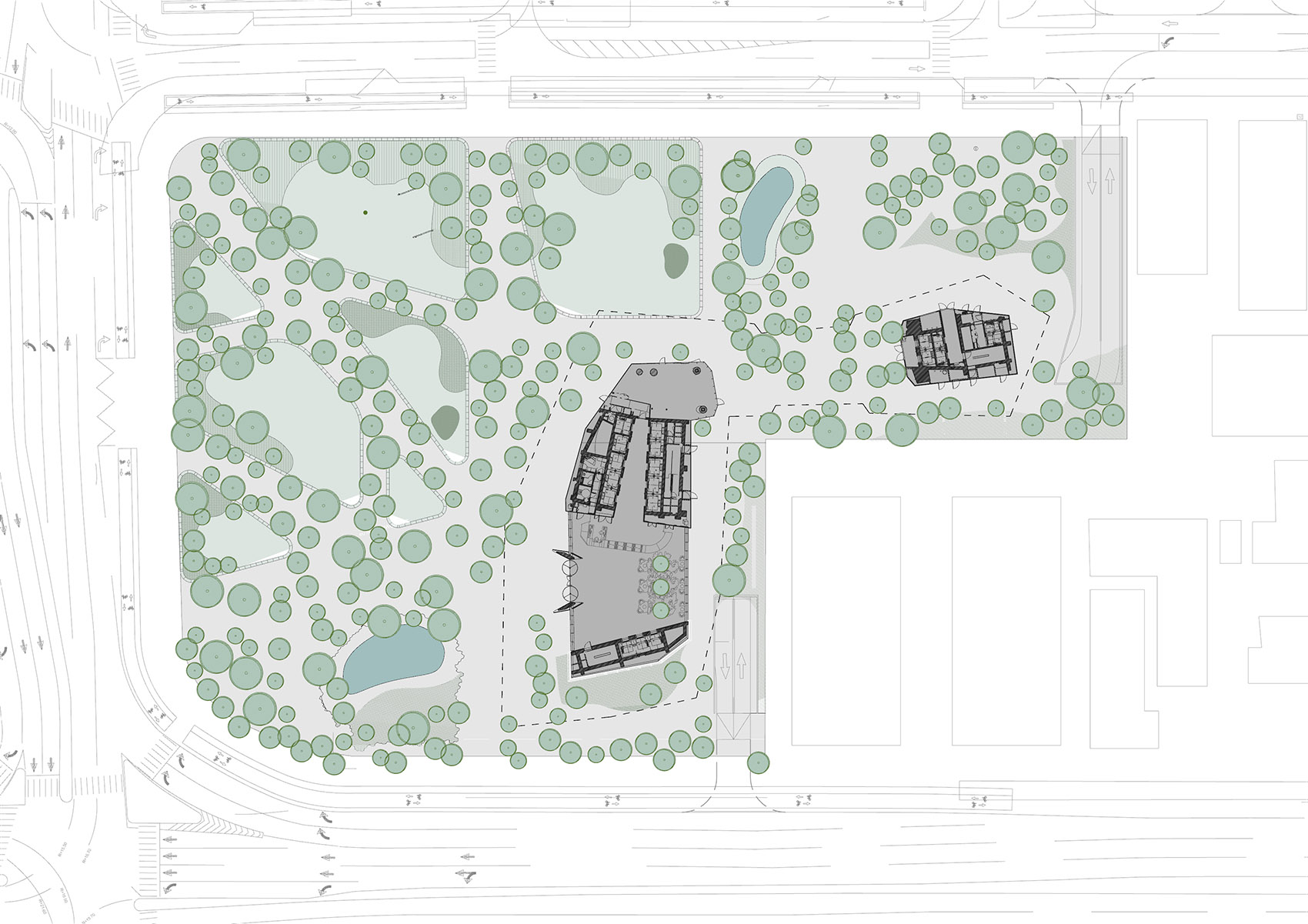
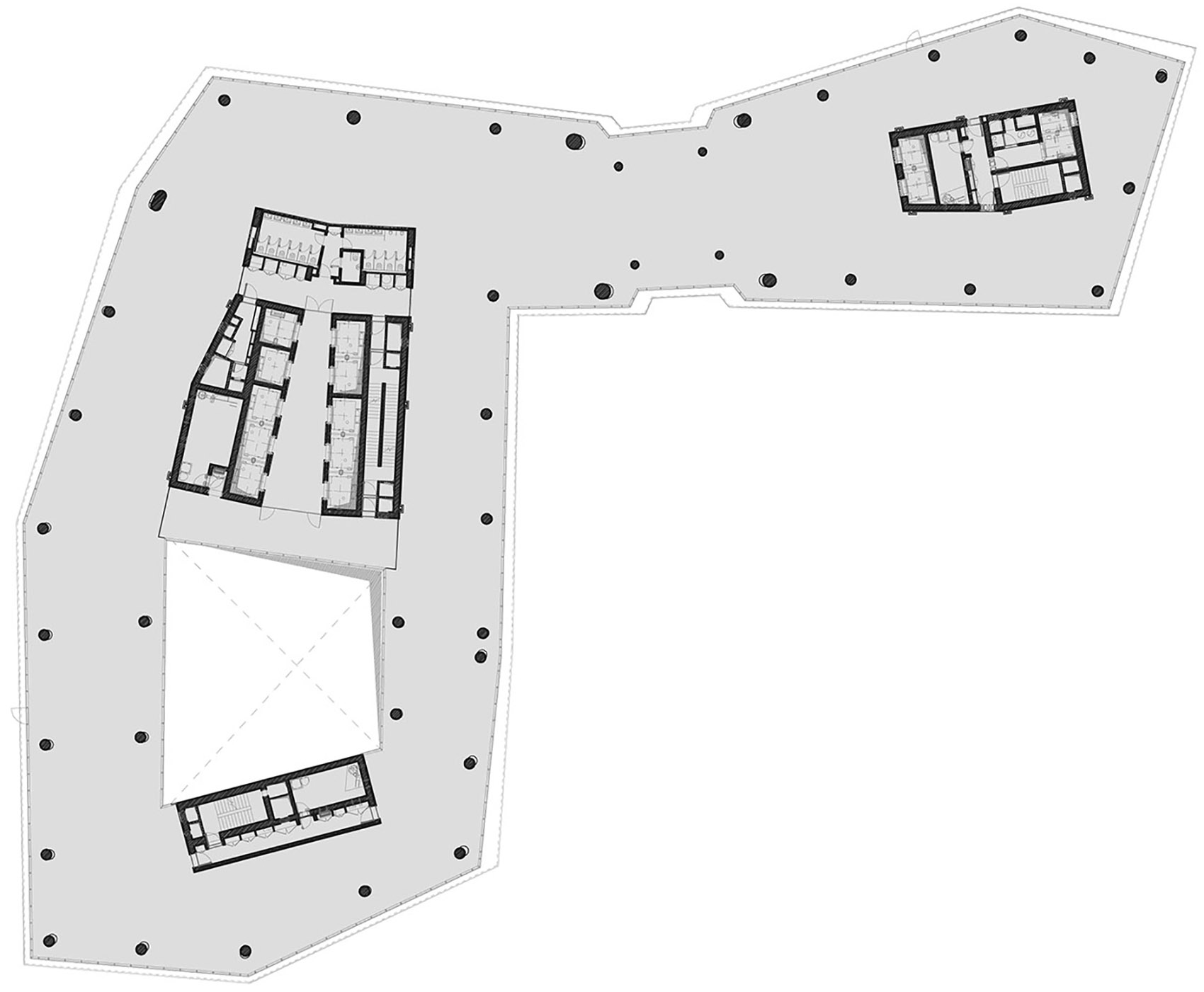
▼立面图,elevation
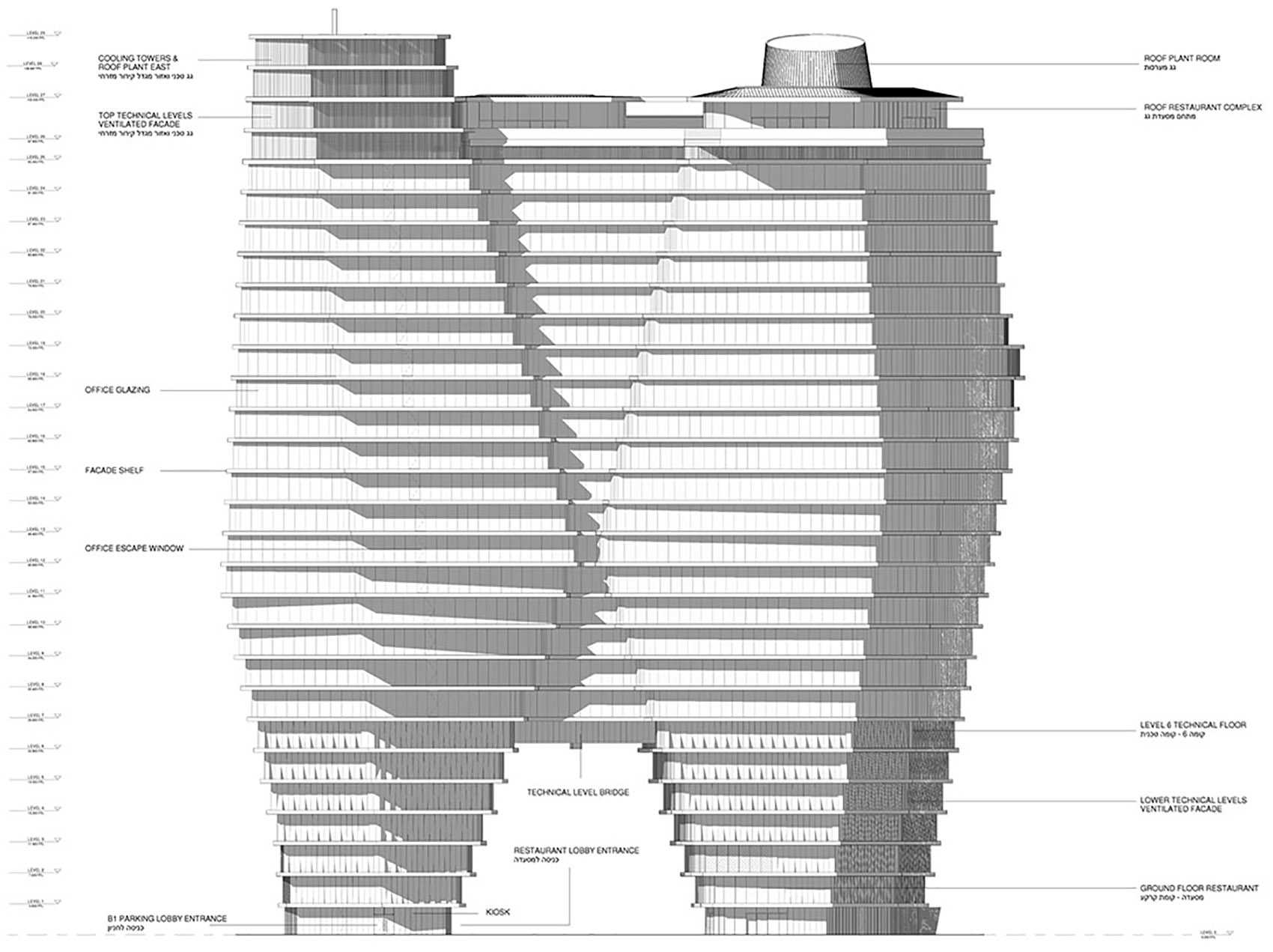
▼剖面图,sections

▼立面节点,facade detail
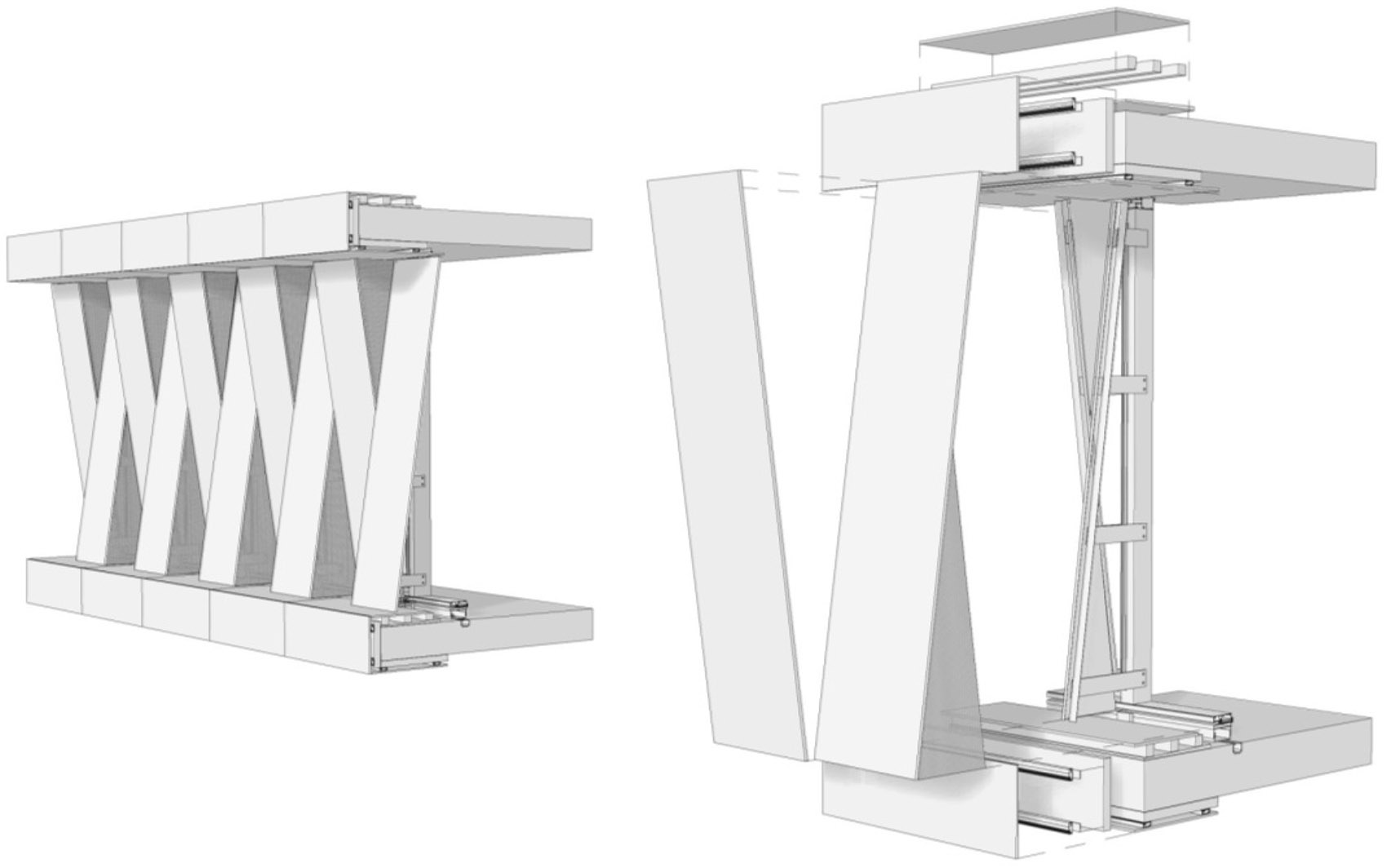
ToHA (Totseret Ha-Aretz) Tel Aviv / 2012-2019 (Phase 1), 2022 (Phase 2) Commercial Project Net Area: 53,000 m² (Phase 1), 140,000 m² (Phase 2) Executive Architect: Avner Yashar Architects (Israel) Consultant Structural Engineer: Buro Happold (UK), David Engineers (Israel) Landscape Architects: VOGT (UK), TeMA (Israel) Key Team Members: Asa Bruno, Project Director Paul Madden, Senior Associate Julia Almeida, Associate Team: Benjamin Dresner-Reynolds, Julian Gilhespie, Shalhevet Visner, Alan McLean, Adam Furman
